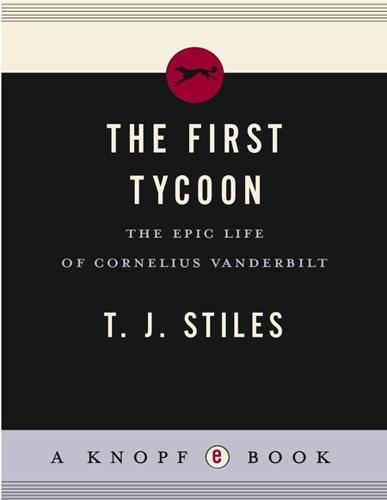
The First Tycoon
by
T.J. Stiles
Published 14 Aug 2009
Cornelius Vanderbilt and Daniel Drew, May 4, 1854, file LJ-1854-V-131, Supreme Court Law Judgments Cornelius Vanderbilt v. William C Moon, June 7, 1854, file L J-1854-M-398, Supreme Court Judgments Cornelius Vanderbilt v. Reuben C. Stone, September 12, 1854, file L J-1854-S-19, Supreme Court Judgments Cornelius Vanderbilt v. John C Thompson and Minthorne Tompkins, September 26, 1854, file J L-1854-T-172, Supreme Court Judgments James H Quimby v. Cornelius Vanderbilt, November 13, 1854, file 1854-#1242, Court of Common Pleas Cornelius Vanderbilt v. Spring Valley Shot & Lead Manufacturing Company, April 21, 1855, file L J-1855-S-206, Supreme Court Judgments Cornelius Vanderbilt v. Spring Valley Shot & Lead Manufacturing Company, July 26, 1855, file L J-1855-S-208 Cornelius Vanderbilt v.
…
Naval Officers, March 1778–July 1908, Record Group 45 Records of the Office of the Judge Advocate General (Army), Record Group 153 National Archives, New York, New York New York Tax Assessment Lists, 1867–1873, Record Group 58 Old Records Division, New York County Clerk's Office, New York, New York John De Forest and Cornelius Vanderbilt Jr. vs. Daniel Morgan, April 5, 1817, file 1817-#337, Court of Common Pleas Cornelius Vanderbilt and Cornelius Vanderbilt Jr. vs. Phineas Carman and Cornelius P. Wyckoff, May 26, 1817, file 1817-#1201, Court of Common Pleas Aaron Ogden v. Thomas Gibbons, December 4, 1819, file O-109, Court of Chancery Fitz G. Halleck v. Daniel Drew, March 15, 1820, file 1820-#479, Court of Common Pleas John R. Livingston v. Cornelius Vanderbilt, December 28, 1822, file L J-1822-V-18, Supreme Court Judgments John Adams, Treasurer of New York Hospital, v. Cornelius Vanderbilt, June 27, 1826, file 1820-#20, Court of Common Pleas Cornelius Vanderbilt v.
…
John's Park Freight Depot The Vanderbilt statue Stock watering (cartoon) Racing Fisk (cartoon) Grand Central Depot under construction Grand Central Depot Grand Central Depot car house, exterior view Grand Central Depot car house, interior view Fast train to Chicago New York Central & Hudson River Railroad Fast trotters on Harlem Lane Mountain Boy Congress Hall veranda, Saratoga Springs Cornelius Vanderbilt Tennessee Claflin Victoria Woodhull Horace Greeley Frank Crawford Vanderbilt Ethelinda Vanderbilt Allen Sophia Vanderbilt Torrance Mary Vanderbilt La Bau Going to the Opera The run on the Union Trust Vanderbilt at rest Death of Cornelius Vanderbilt Funeral of Cornelius Vanderbilt Burial of Cornelius Vanderbilt Dr. Jared Linsly at the will trial New York, 1880 Maps New York Bay Southern New England New York Gold Rush Steamship Lines Nicaragua The Trunk Lines Chapter One THE ISLANDER They came to learn his secrets.
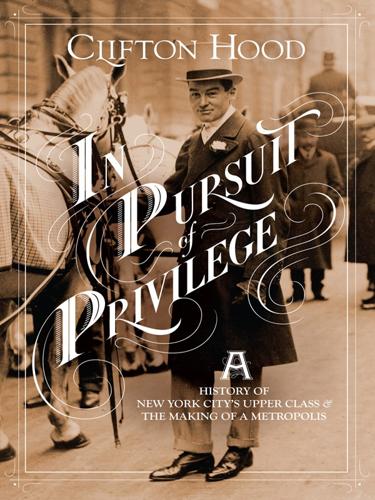
In Pursuit of Privilege: A History of New York City's Upper Class and the Making of a Metropolis
by
Clifton Hood
Published 1 Nov 2016
Now popular magazines like McClure’s and Outlook ran fawning portraits of industrialists like Cornelius Vanderbilt and Philip Armour, and Harper’s Bazaar and Century published reverential descriptions of the New York Produce Exchange, the Chamber of Commerce, and the New York Stock Exchange. This journalism echoed the famous defense of great wealth and business competition as a source of social progress that Andrew Carnegie made in his 1889 essay The Gospel of Wealth.20 In 1899, for instance, Outlook informed its readers that Cornelius Vanderbilt II was not just a millionaire railroad king: no, he was “a Christian philanthropist who gave liberally of his wealth and of what was more valuable, his time and energy, to a great variety of philanthropic and Christian enterprises.”21 Outlook extolled Vanderbilt as “a man of great simplicity of character, easily approached, but strong, even to sternness, when necessary, and yet withal as gentle as a woman.”22 The magazine emphasized that Vanderbilt possessed his money not for himself but for others: he regarded his wealth “not simply as something personal, but as a great and sacred trust, which it was his duty to administer…with a wise and discriminating conscientiousness, for the benefit of his fellow-man.”23 Now the Wall Street Journal could respect even the reptilian Jay Gould for having built railroads, telegraphs, and elevated railways that had improved the country, even as it acknowledged his unethical business conduct and indifference to charity.24 New York City exemplified (and drove) many of the changes in economic productivity and the status hierarchy that James Bryce spoke of in his article.
…
It was largely built by craftsmen brought over from Europe and was decorated with stone and wood carvings, stained glass, and embroidered textiles imported from the Continent. This mansion featured a ballroom that could hold more than 1,200 people, while the 130-room palace of Cornelius Vanderbilt II at Fifth Avenue and West Fifty-Ninth Street (figure 6.2) was the largest single-family private home ever built in New York City.15 One scholar has remarked that these “aristocratic houses were more than just large; they were presentation stages for the spectacular trappings of the ruling class.”16 FIGURE 6.2 A postcard of the residence of Cornelius Vanderbilt II and Alice Claypoole Gwynne Vanderbilt, at Fifth Avenue and West Fifty-Ninth Street, postmarked 1912. (Author’s collection.)
…
Their prevalent theme of family deterioration is encapsulated by one book title–Dead End Gene Pool (2010).69 Its author is Wendy Burden, the great-great-great-great granddaughter of Cornelius Vanderbilt. Rather than celebrating a privileged lifestyle, Burden exposes ugly truths that she believes lay concealed beneath the elegant and refined surface of the upper class. In particular, she describes episodes of “rich people behaving badly” because they had the money and influence to indulge their vices without having to worry about the consequences.70 Ultimately, their extravagance did have costs: the death of Cornelius Vanderbilt from syphilis and the nervous breakdown and premature demise of her great-great-grandfather.
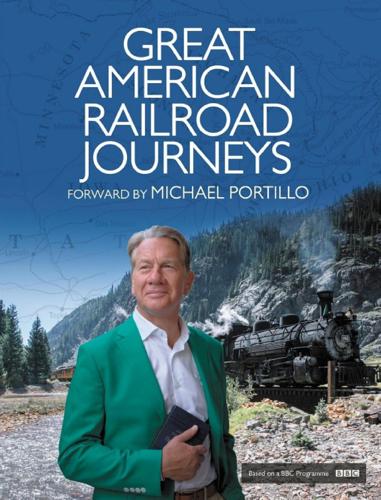
Great American Railroad Journeys
by
Michael Portillo
Published 26 Jan 2017
As a consequence, the members of this elite group were branded ‘robber barons’, a term that put their public conduct on a par with detested feudal lords from the medieval era who likewise knew no boundaries when it came to achieving their goals. Even railroad bosses who weren’t tainted by allegations of corruption operated in ways that would not be tolerated today. CORNELIUS VANDERBILT One of the first to be elevated to the ranks of the super-rich was Cornelius Vanderbilt. Although initially poor and ill-educated, he refused to allow these two issues to define him and, following his success, he came to characterize the self-made man so beloved by American folk lore. During an extraordinarily long and busy life Vanderbilt displayed fruitful acumen that underpinned his golden touch.
…
Opponents were crushed, often with a brinkmanship more appropriate to a game of poker than a nationally significant industry. For anyone who crossed him, he had these sinister words: ‘I won’t sue you, for the law is too slow. I’ll ruin you.’ In 1854, when this portrait was commissioned, Cornelius Vanderbilt’s business activities were restricted to steamships. STEAMSHIP KING At his death, Cornelius Vanderbilt (1794–1877) was worth $100 million. One estimate says that by then he possessed one-ninth of all US currency in circulation. His name is indelibly associated with railroads, and he was the first to be dubbed a ‘robber baron’ for his unsavoury business practices.
…
CONTENTS FOREWORD BY MICHAEL PORTILLO INTRODUCTION SECTION ONE THE EARLY YEARS Dreams & reality The pioneers Marvels & machinations in the mid-century SECTION TWO THE AMERICAN CIVIL WAR Modern warfare Railroads in the south Railroads in the north Engine exploits Abraham Lincoln SECTION THREE ROBBER BARONS Cornelius Vanderbilt Jay Gould A rogues’ gallery Credit Mobilier SECTION FOUR RECONSTRUCTION & THE GILDED AGE The Transcontinental Railroad Regulation & railroads The Pennsylvania Railroad empire Comfort & safety Bridges & tunnels TIMELINE CONCLUSION PICTURE CREDITS INDEX FOREWORD Throughout the years of making rail journeys for BBC television, first in the United Kingdom and then on the continent of Europe, I had dreamed of carrying the programme’s concept to the United States.
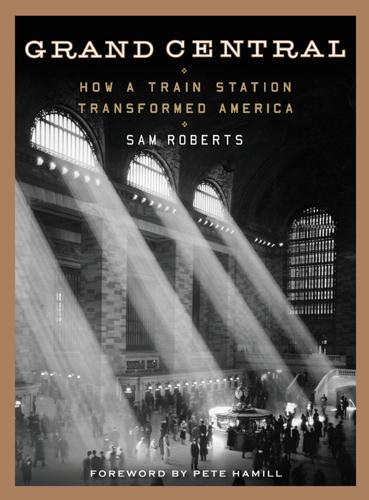
Grand Central: How a Train Station Transformed America
by
Sam Roberts
Published 22 Jan 2013
No railroad officials were charged, however. Wisker was indicted for second-degree manslaughter because he “unmistakably violated the well-known rule which, under the conditions surrounding him, required him to stop his train.” THE CRASH OCCURRED AT 56TH STREET, not far from the Vanderbilt mansion on Fifth Avenue. Cornelius Vanderbilt III and Alfred Vanderbilt, great-grandsons of the Commodore, rushed to the scene in time to learn that Wisker had been arrested by the New York City police pending a coroner’s inquest. Almost on the spot, they joined other railroad officials, including William J. Wilgus, the New York Central’s chief engineer, in a decision that would change the face of New York.
…
“It was not enough that the New York Central Railroad had been maintaining for many years a defective signal system and that any day a serious accident might happen as a result of the maintenance of such a system,” said William Travers Jerome, the district attorney (he was a nephew of Leonard Jerome, who had been Cornelius Vanderbilt’s stockbroker), “but it must have been found affirmatively, and beyond reasonable doubt, that this particular accident, with the ensuing deaths, occurred as the direct result of its defective system.” The next time, a grand jury might do just that. Even with the recent renovations, Grand Central Station, which was already outmoded the day it opened a generation earlier, would have to be razed.
…
After all, when the 9,000-pound, 13-foot-long DeWitt Clinton was cast at the West Point Foundry in Cold Spring, New York, and fitted at the foot of Beach Street in lower Manhattan, it was only the third or fourth steam locomotive built in the United States. But the railroad men weren’t completely crazy. They were shrewd enough to engage in a subterfuge sufficient to forestall a veto of railroad franchises by the state legislature, which the boatmen, including Cornelius Vanderbilt, all but owned. Following experiments by the inventor Peter Cooper of New York on the Baltimore & Ohio and service on the Charleston & Hamburg line in South Carolina, John B. Jervis commissioned the DeWitt Clinton for the newly chartered Mohawk & Hudson Railroad, the first leg of what two decades later would become the New York Central.
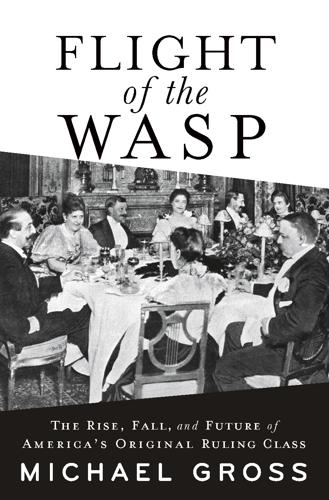
Flight of the WASP
by
Michael Gross
Kahn Jr., “Profiles: Man of Means,” New Yorker, August 11, 1951. 52 Lisa Gubernick and Alexander Parker, “The Outsider,” Forbes, October 26, 1987. 53 Geoffrey T. Hellman, “Profiles: The Man Who Is Not His Cousin,” New Yorker, June 21, 1941. 54 “Business Mogul Cornelius Vanderbilt Whitney Dies,” Washington Post, December 14, 1992. 55 Ted Ramsay, “Cornelius Vanderbilt Whitney Biographical Sketch,” unpublished manuscript, June 2, 1941. 56 “Whitney Picks Hardest Way to Congress Seat,” New York Herald Tribune, September 16, 1932. 57 Author interview with Whitney Tower Jr., February 24, 2020. 58 Whitney Tower Jr., “Personal History: I Can’t Get No Satisfaction,” Town and Country, August 2012. 59 Author interview with Penelope Tree, October 21, 2019. 60 Author interview with Penelope Tree, October 21, 2019. 61 Holly Brubach, “Running Around in High Circles,” New York Times, November 9, 1997. 62 Caroline Seebohm, No Regrets: The Life of Marietta Tree (New York: Simon & Schuster, 1997), 156. 63 Seebohm, No Regrets, 227–230. 64 Seebohm, No Regrets, 277. 65 David Bailey, Look Again (London: Macmillan, 2020), 213–215. 66 Louise Frank, “People Thought I Was a Freak.
…
Steel, 251 US Treasury, 184 Utes tribe, 200 van Brughe Livingston, Sarah (Sarah Jay), 252 Van Buren, Martin, 135, 176, 177, 182–183, 189, 191, 193, 195 Vanderbilt, Alva Erskine Smith, 269–270 Vanderbilt, Consuelo, 269–271 Vanderbilt, Cornelius, 3, 233, 250 Vanderbilt, Cornelius, II, 260 Vanderbilt, Gertrude, 279, 384 Vanderbilt, Gloria, 345 Vanderbilt, William Henry, 251, 258, 269 Vanderbilt, William Kissam “Willie,” 259, 269–270, 281 Vermont, 35, 142 Vidal, Gore, 230, 346 Vietnam War, 399–400 Virginia, 25, 72, 101–103, 107–108 Virginia and Kentucky Resolutions, 113 Virginia Company of London, 20, 25, 30, 102 Virginia Constitutional Convention, 136 voting, 72, 80, 81 Wade-Davis Bill, 214 Wampanoag tribe, 43 wampum, 33 Warburg, Felix, 312, 317 War Department, 178, 180 Ward Howe, Julia, 239, 252 Warhol, Andy, 345 War of 1812, 125–126, 127, 166, 168, 176 Washington, George, 71, 73, 79–80, 87–88, 143, 150, 165 WASPs advancement of, 253–255 attention increase of, 264 background of, 11 backlash from, 328 challenges of, 375 characteristics of, 9 clanishness of, 293 confidence of, 88 decline of, 10, 13–14, 416–417 diversity resistance by, 7–8 duties of, 329–330 engagement of, 375 escape of, 375 immigration concerns of, 290–291 immigration of, 255 incorporation into, 13 introduction of, 3–7 irrelevance of, 417 justification of, 262 obituaries of, 9–10 population of, 201 as presidents, 4 as rebels, 345 resorts of, 256 as role models, 9 schools for, 241–242, 255 self-indulgence of, 374 social changes of, 327–328 traits of, 80 values of, 418 wealth sources of, 283 writings regarding, 8–9 Wealth Tax, 328 weapons, purchase of, 210–211 Weber, Max, 49 Webster, Daniel, 177, 184, 192 Webster, Noah, 19 Weed, Thurlow, 206 Wenner-Gren, Axel, 349 West, Francis, 111, 137 West Jersey, 146 Weston, Thomas, 25, 31–32 Wheelock, Alice, 413–414 Whig Party, 186, 203–204 Whiskey Rebellion, 175 Whitehouse, Sheldon, 10 Whitney, Barbara, 384 Whitney, Charlotte Anita, 49 Whitney, Cornelius Vanderbilt “C. V.,” 384 Whitney, Cornelius Vanderbilt “Sonny,” 286 Whitney, Courtney, 49 Whitney, Eli, 49 Whitney, Flora, 275–276, 277–278, 279, 336, 387 Whitney, Gertrude, 285–287 Whitney, Henry “Harry” Payne, 46, 48, 279 284–287, 384 Whitney, James Scollay, 45–46 Whitney, John, 44–45 Whitney, John Hay “Jock,” 384–385 Whitney, Josiah, 45, 49 Whitney, Mary Watson, 49 Whitney, Pauline Payne, 336 Whitney, Payne, 282, 283–284 Whitney, Sonny, 384, 386–387 Whitney, Stephen, 45–46 Whitney, Wheelock, Jr., 414 Whitney, William Collins, 46–49, 275–283, 304 Whitney, Willis Rodney, 49 Whitney Museum, 285–286 Whitney Payson, Joan, 384, 385–386 Whitney Straight, Dorothy, 287–289 Wilkinson, James, 142 William & Mary, 36 Williams, Roger, 34 Wilmot Proviso, 194 Winn Butler, Pauline, 336 Winslow, Edward, 29, 37, 39 Winthrop, John, 34, 38, 59 Winthrop, John “the Younger,” 60 Women’s Wear Daily, 364 World War II, 289, 292, 378–381, 403–404 XYZ affair, 112 Yale University, 44 Yazoo land fraud, 112, 115–116, 179 Zenger, John Peter, 64 zoos, 303
…
The buyers of the first American slaves at Port Comfort near Jamestown in 1619 were WASPs, as was George Washington, and every president until 1961. Many of the brave men and women who supported the abolition of slavery before the Civil War were members of the northern WASP elite. The industrialists and financiers who built and ran America, men like Cornelius Vanderbilt, J. Pierpont Morgan, and Henry Ford, and the lawyers who protected them? WASPs. Until the third decade of the twentieth century, just about every person with power and influence in the United States was a WASP—or else a convert. Into the 1980s, the upwardly mobile wanted to wear the same clothes, go to the same schools, join their clubs, and move on up to their exclusive neighborhoods.
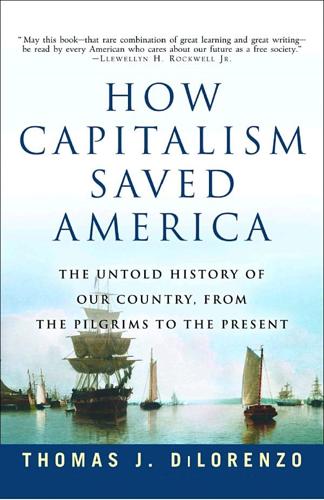
How Capitalism Saved America: The Untold History of Our Country, From the Pilgrims to the Present
by
Thomas J. Dilorenzo
Published 9 Aug 2004
Indeed, from the mid-nineteenth century onward, this sort of battle marked the development of much of American industry—the steamship industry, the steel industry, and the auto industry, to name just a few. For example, the great steamship entrepreneur Cornelius Vanderbilt competed with government-subsidized political entrepreneurs for much of his career. In fact, he got his start in business by competing—illegally—against a state-sanctioned steamship monopoly operated by Robert Fulton. In 1807, the New York state legislature had granted Fulton a legal, thirty-year monopoly on steamboat traffic in New York—a classic example of mercantilism.37 In 1817, however, a young Cornelius Vanderbilt was hired by New Jersey businessman Thomas Gibbons to defy the monopoly and run steamboats in New York.
…
State capitalism consists of one or more groups making use of the coercive apparatus of the government . . . for themselves by expropriating the production of others by force and violence. —Murray N. Rothbard, The Logic of Action (1997) THE LATE nineteenth and early twentieth centuries are often referred to as the time of the “robber barons.” It is a staple of history books to attach this derogatory phrase to such figures as John D. Rockefeller, Cornelius Vanderbilt, and the great nineteenth-century railroad operators—Grenville Dodge, Leland Stanford, Henry Villard, James J. Hill, and others. To most historians writing on this period, these entrepreneurs committed thinly veiled acts of larceny to enrich themselves at the expense of their customers. Once again we see the image of the greedy, exploitative capitalist, but in many cases this is a distortion of the truth.
…
This is a common, ordinary business practice—offering volume discounts to one’s largest customers in order to keep them—but Rockefeller’s less efficient competitors complained bitterly. Nothing was stopping them from cutting their costs and prices and winning similar railroad rebates other than their own inabilities or laziness, but they apparently decided that it was easier to complain about Rockefeller’s “unfair advantage” instead. Cornelius Vanderbilt publicly offered railroad rebates to any oil refiner who could give him the same volume of business that Rockefeller did, but since no one was as efficient as Rockefeller, no one could take him up on his offer.29 All of Rockefeller’s savings benefited the consumer, as his low prices made kerosene readily available to Americans.
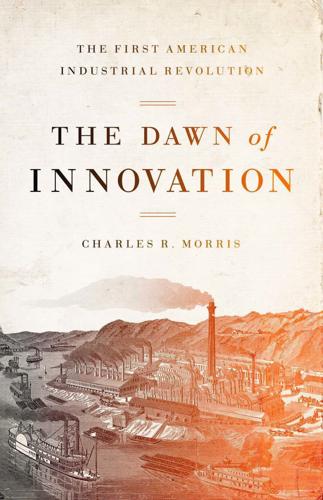
The Dawn of Innovation: The First American Industrial Revolution
by
Charles R. Morris
Published 1 Jan 2012
I understand that three hundred were navigating the great western rivers some time ago: and the number is probably much increased.25 The eastern seaboard was blessed with a more or less continuous system of tidal waterways linking almost all the major cities. Rivers like the Hudson and the Connecticut were broad, deep, and relatively straight. For a skilled captain with a good boat, sailing upstream was almost as easy as sailing down. As a teenager, Cornelius Vanderbilt ran a Staten Island–to-Manhattan ferry service with a small sailing sloop. By his early twenties he owned a string of twenty- to thirty-ton fast sailing vessels running freight traffic up and down the East Coast. He could sail up the Delaware during shad season, picking up fishermen’s catches to sell in New York City.
…
The bill of fare was preserved for posterity: “Chowder, a yoke of oxen barbecued whole, 10 sheep roasted whole, beef a la mode, boiled ham, corned beef, buffalo tongues, bologna sausage, beef tongues (smoked and pickled), 100 roast fowls, hot coffee, etc.” 60 The broad outline of the modern railroad network east of the Mississippi was more or less in place by 1860. There were four large east-west networks. Two originated in New York: the Erie and Cornelius Vanderbilt’s New York Central, an 1850s consolidation often connecting roads. Both the Pennsylvania and the B&O offered through service to Pittsburgh and beyond from Philadelphia and the Chesapeake region respectively. The outline of a rail network emanating from Chicago was in place, with multiple connections both with the four east-west lines and to Cincinnati, St.
…
By the 1830s and 1840s, the boats were of oceanic proportions, roughly twice the size of Fulton’s Clermont/Steamboat and far heavier and faster. Competing lines raced, and occasionally jostled, each other on the water, rather like NASCAR racers. There was no dominant owner, but the active presence of Cornelius Vanderbilt kept all the lines at a knife-sharp point of tension. His strategy was to move into and out of the trade opportunistically—launching price wars against complacent operators to gain control of their routes, then selling out at a profit. Vanderbilt had become by far the richest of the operators and the only one who could order and pay for major steamboats from his own resources—rich enough even to shrug off the loss of a major new boat, The Atlantic, a 321-foot behemoth.
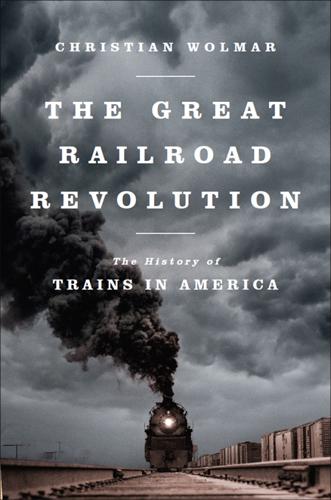
The Great Railroad Revolution
by
Christian Wolmar
Published 9 Jun 2014
Despite these many positive developments for the railroads, services remained basic on many lines, adding to the unpopularity of the railroads with some members of the public. The postbellum period was also the age of “bare knuckles,” as the major companies began to slug it out for increased market share. Powerful and unscrupulous railroad magnates—men like Cornelius Vanderbilt, Daniel Drew, and banker Jay Gould— became a feature of the industrial landscape of America’s “Gilded Age,” and they exacerbated the railroads’ unpopularity, as did their response to the increasing labor unrest. The resentment engendered by several railroad strikes would be a significant factor in the birth of labor unions in the United States.
…
To give a scale of the enterprise, which was probably around the same size as the Erie, the New York Central could lay claim to 542 miles of line and owned 150 wood-burning locomotives, 1,700 freight cars, and just under 200 passenger coaches. Indeed, it fared so well, easily surviving the panic of 1857, that it attracted the attention of a rapacious shipping magnate, one Cornelius Vanderbilt (see Chapter 8). In the 1850s, the consolidation of smaller lines to create a larger railroad was a new idea in America, but would be adopted widely across the United States, particularly after the Civil War as the Hamiltonian ethos prevailed. Big companies like the Erie, the Pennsylvania, and the New York Central were still, in the antebellum period, the exception.
…
A train traveling from South Amboy was derailed at Hightstown, New Jersey, when an axle broke, injuring all but one of the twenty-four passengers and killing two. The train was carrying a remarkable contingent of famous people, suggesting perhaps that early travelers were largely the better off. The infamous entrepreneur Cornelius Vanderbilt, who broke a leg in the accident, vowed never to travel by rail again, a promise he failed to keep when he gained control of numerous railroads a quarter of a century later (see Chapter 8). The former president and now congressman John Quincy Adams was the sole passenger to escape unscathed, while Irish actor Tyrone Power, who suffered only minor injuries, later wrote a detailed account of the crash, describing it as “the most dreadful catastrophe that ever my eyes beheld” and recalling how he helped a fellow passenger, a surgeon, tend to the injured.36 As rail lines extended, journeys lasting more than the daylight hours became necessary.
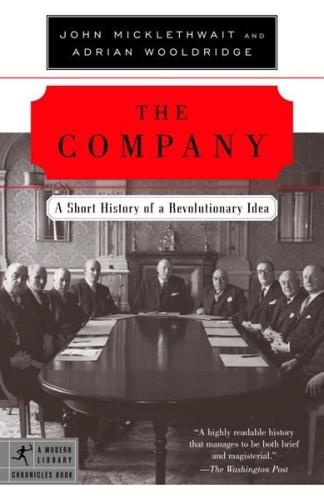
Company: A Short History of a Revolutionary Idea
by
John Micklethwait
and
Adrian Wooldridge
Published 4 Mar 2003
In 1913, there was $11.2 billion worth of railroad bonds, versus $7.2 billion of common stock, and that ignores both the railroads’ enormous bank debts and the fact that half of the common stock was corporate cross-holdings.11 Preference shares were also enormously popular—particularly after they were used to launch the Pennsylvania Railroad in 1871. Such a narrow equity base made bankruptcy a common threat, spurring consolidation. Many of the earliest railway lines did not yet connect to each other. Bullies like Cornelius Vanderbilt and then J. P. Morgan tidied up this fragmented system. Even without their prompting, many railroad tycoons decided that collusion was the only way to ensure a regular flow of traffic and avert ruinous price wars. This consolidation meant that by the 1890s, the railways were bigger than the utility companies that brought light, heat, and water to Chicago and New York, and bigger by far than the armies that defended the United States.
…
Duke’s story was repeated in several other industries. George Eastman invented not only a cheap camera but also the idea of the amateur photographer to find a market for his photographic film. But the most distinctive feature of all the integrated firms was a desire to grow as big as possible. That inevitably led to mergers. Cornelius Vanderbilt had already shown the benefits of consolidation in the railway industry. Between 1890 and 1904, huge waves of consolidation left most of the country’s industrial base in the hands of around fifty organizations—usually (if sometimes unfairly) referred to as trusts. The merger era produced some of the most powerful companies of their time, including U.S.
…
The robber barons may have kept the big strategic decisions in their own hands, but they couldn’t personally oversee every detail of their gigantic business empires. And they couldn’t find the management skills that they needed among their immediate families, who anyway found more amusing things to do: Digby Baltzell writes acidly about “the divorcing John Jacob Astor III (three wives), Cornelius Vanderbilt, Jr. (five wives), Tommy Manville (nine wives) or the Topping brothers (ten wives between them).”2 So the company founders turned to a new class of professional managers. The likes of King Gillette, William Wrigley, H. J. Heinz, and John D. Rockefeller hired hordes of black-coated managers to bring order to their chaotic empires.
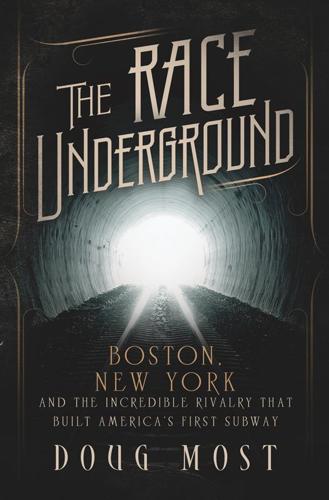
The Race Underground: Boston, New York, and the Incredible Rivalry That Built America's First Subway
by
Doug Most
Published 4 Feb 2014
Whitney ignored it all and watched as McKinley, a former Republican governor from Ohio, defeated Nebraskan Democrat William Jennings Bryan. * * * THE FOLLOWING SUMMER, WILLIAM’S SON, Harry Payne Whitney, traded vows with young Gertrude Vanderbilt, the twenty-one-year-old daughter of Cornelius Vanderbilt II, putting in motion a blending of two of the most important families of the late nineteenth century. Over the years, William Whitney and Cornelius Vanderbilt had been more than neighbors. They had vacationed together in Newport, Rhode Island, at the Vanderbilt mansion, the Breakers; in Bar Harbor, Maine; and upstate New York. They had shared a love of the opera, attending hundreds of performances together.
…
She covered the floors with rich oriental rugs and the walls with bright tapestries and works by the French painter François Boucher, whom Whitney had a special affection for. The Whitneys may have left behind the neighborhood of the Morgans, but in their new home, they were trading up to live across the street from Cornelius Vanderbilt II, whose daughter Gertrude would in a few years marry Will Whitney’s oldest son, Harry. It was that marriage that assured the Whitney family’s legacy would thrive into the twentieth century and beyond. Gertrude Vanderbilt Whitney became a prominent sculptor and art collector, and after she established the Whitney Studio in Greenwich Village in 1914 and accumulated more than five hundred works of art, she offered them with an endowment to the Metropolitan Museum of Art.
…
His son tried college but wasn’t interested, and he dropped out to partner with his father in work. He quickly showed himself to be skilled as both a laborer and a manager. One of his first assignments, which he landed through his father, was a low-level timekeeping job at the Croton Dam. His first railroad job was rebuilding Cornelius Vanderbilt’s New York Central Railroad’s Fourth Avenue tracks up around Ninety-sixth Street. It was a job that gained him notoriety and led him on a busy path around North America, from New Jersey to Canada to Western Massachusetts to Buffalo to Philadelphia to Wisconsin to Illinois to West Virginia. He settled for a while in Baltimore to work on a long and complicated tunnel for the Baltimore & Ohio Railroad, and by the time he returned to New York with his wife, son, and daughter, he was no longer a run-of-the-mill contractor.
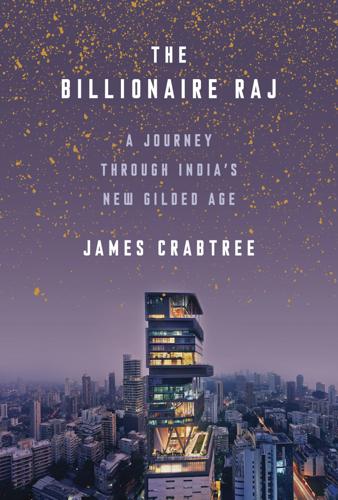
The Billionaire Raj: A Journey Through India's New Gilded Age
by
James Crabtree
Published 2 Jul 2018
What had been a nation of isolated farmers turned into a giant continental economy and the world’s leading industrial power. Just as in India, this growth gave birth to a new generation of plutocrats, from oil magnate John Rockefeller and banker John Pierpont Morgan to railroad tycoons Jay Gould and Cornelius Vanderbilt. These men sat atop a new “millionaire class” known for its extravagant houses and vulgar displays of wealth. Then they acquired another name: the “robber barons,” for the speed at which they built their fortunes and the lack of conscience they displayed while doing so. From the cliff-top mansions of Newport, Rhode Island, to the splendor of New York’s newly minted millionaires’ row on Fifth Avenue, it was the wealth these tycoons accumulated that defined their era.
…
They were also the great philanthropists of the city and are now remembered as city fathers. Mr. Ambani’s efforts are simply the latest example.” Antilia’s excess also carried echoes of an earlier era in America, and another celebrated business dynasty: the Vanderbilts. Like Dhirubhai Ambani, Cornelius Vanderbilt grew up modestly. The son of poor Dutch immigrants, he was born in a wooden house on Staten Island in 1794, working on his father’s boat as a boy and learning to take goods over the bay to New York. In his teens he pestered his mother to lend him $100 to buy a vessel of his own, earning the nickname “Commodore” for his fearlessness on the water.24 He went on to build a small fleet, only to find his expansion plans blocked by local rivals whose businesses were protected by exclusive government licenses and charters, which were controlled in turn by pliant politicians.
…
These problems then focus attention on one final critical barrier India faces: government itself. The crony capitalism of America’s Gilded Age ended when rampant nineteenth-century clientelism was curbed by impartial, meritocratic twentieth-century public administration. The kind of concentrated power built up by tycoons like Cornelius Vanderbilt was undone through the introduction of new antitrust law and competition policy. Improvements in basic public services gradually broke the grip of political patronage, a process that developed over many decades after the Gilded Age itself, culminating only with the New Deal of the 1930s. In India’s case, similar breakthroughs will require a focus on what is often called “state capacity.”15 Ending corruption is part of this battle, but it also involves the more complex objective of building a state machinery able to create and implement wise public policies, while remaining impartial between different social groups.
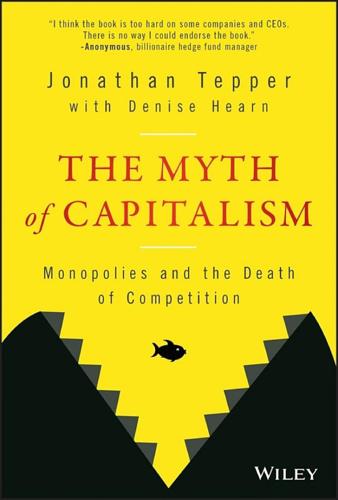
The Myth of Capitalism: Monopolies and the Death of Competition
by
Jonathan Tepper
Published 20 Nov 2018
,” NBER Working Paper No. 24085, November 2017,http://www.nber.org/papers/w24085. Chapter 7: What Trusts and Nazis Had in Common 1. https://www.theatlantic.com/magazine/archive/1881/03/the-story-of-a-great-monopoly/306019/. 2. Edward J. Renehan Jr., Commodore: The Life of Cornelius Vanderbilt (Basic Books, 2019). Kindle Edition. 3. T. J. Stiles, The First Tycoon: The Epic Life of Cornelius Vanderbilt (Alfred A. Knopf, 2009). 4. https://www.theatlantic.com/magazine/archive/1881/03/the-story-of-a-great-monopoly/306019/. 5. Ron Chernow, Titan (Vintage Books, 1998). 6. Matthew Josephson, The Robber Barons (Harcourt, 1934). 7. Theodore Roosevelt: Ultimate Collection (Madison & Adams Press, 2017). 8.
…
Chapter Seven What Trusts and Nazis Had in Common Just as we must convince the Germans on the political side of the unsoundness of making an irrevocable grant of power to a dictator … we must also convince them on the economic side of the unsoundness of allowing a private enterprise to acquire dictatorial power over any part of the economy.” —A Year of Potsdam: German Economy Since Surrender United States War Department Cornelius Vanderbilt was the embodiment of the nineteenth century American monopolist. He came to represent the idea of the corporation as a Goliath, yet he started out as a David. In 1808 the State of New York created a monopoly on ferry travel for a term of 20 years. Former New Jersey Governor Aaron Ogden purchased the monopoly rights and entered into partnership with Thomas Gibbons, a wealthy lawyer.
…
When their partnership collapsed, the two began competing with each other between New York and New Jersey. The partners ended up suing each other in the New York court. Gibbons decided to take his case against the monopoly all the way to the Supreme Court. As history would have it, Gibbons had hired a boatman in his mid-twenties named Cornelius Vanderbilt to pilot his ferries. Vanderbilt captained the boats, defying jail, cutting prices against the big monopolists. The case Gibbons v. Ogden in 1824 became a legal landmark in favor of free trade. The Supreme Court decided that Congress's power to regulate interstate commerce included the power to regulate transportation.
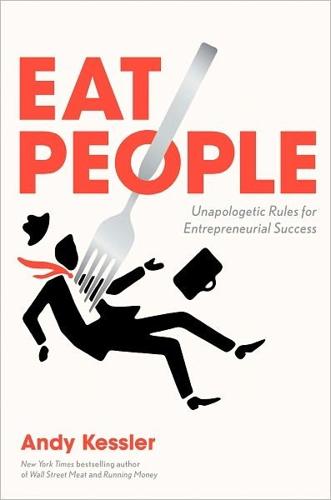
Eat People: And Other Unapologetic Rules for Game-Changing Entrepreneurs
by
Andy Kessler
Published 1 Feb 2011
And everyone who buys one has an economic rationalization—it makes them more productive. You can listen to music with earphones instead of hiring the New York Philharmonic (or AC/DC) to perform live in your kitchen. Or send an e-mail instead of tying a message to a pigeon’s leg. Or click “I’m Feeling Lucky,” instead of pestering librarians to look up the life story of Cornelius Vanderbilt. You get the point. Several trillion dollars of wealth have been created from the Scaling of bits. You can look at the market capitalization of all the tech companies, from Intel to Microsoft to Google to whoever else, and you get a trillion. The other trillion or so is the lower costs that companies like Wal-Mart and Morgan Stanley and Merck have been able to enjoy because computing power gets cheaper each and every year.
…
Good luck finding the trolley lines that used to run up and down Broadway in Manhattan. It’s political power versus competition. Over years, politics has the advantage. Over decades, competition triumphs. Cost cutting and innovation can’t be caged. Choose wisely. THIS GUY FIGURED it out—a Free Radical before it became fashionable. Cornelius Vanderbilt was born in 1794 on Staten Island, New York. As they say about Dominicans in Major League Baseball: you don’t walk off the island, you gotta hit your way off. When he was sixteen, Vanderbilt’s mom gave him $100 to clear and plant an eight-acre field. Instead, Vanderbilt bought a two-mast sailboat and started charging for ferrying passengers and goods around New York.
…
Until I read a series of articles in Tom Friedman’s very own New York Times titled “A Disability Epidemic Among a Railroad’s Retirees.” Just from reading the first few paragraphs about the Long Island Railroad, you’ll instantly understand why our public infrastructure and mass transit is Flintstonian . . . because someone is stealing the money. Cornelius Vanderbilt, who ran ships around Long Island, must be rolling over in his grave. “Virtually every career employee—as many as 97 percent in one recent year—applies for and gets disability payments soon after retirement, a computer analysis of federal records by The New York Times has found. Since 2000, those records show, about a quarter of a billion dollars in federal disability money has gone to former L.I.R.R. employees.”

The New Elite: Inside the Minds of the Truly Wealthy
by
Dr. Jim Taylor
Published 9 Sep 2008
And to get more people to read, the philosophy isn’t ‘misery loves company,’ it’s ‘misery loves voyeurism.’ ’’ In decades past, the decadence sometimes associated with wealth had something of a romance, almost an elegance to it. For example, think of F. Scott Fitzgerald’s The Great Gatsby, with Jay Gatsby at play on Long Island; or the ornate parlor cars of railroad magnates such as Cornelius Vanderbilt; or the rich collections of Andrew Carnegie; or John F. Kennedy and his family holding court in the White House. The resentment that some felt toward these 16 The New Elite wealthy lifestyles was often coupled with a paradoxical respect and admiration for the refinement this wealth engendered.
…
On an individual level, money shifted to an entirely new breed of wealthy individual, and by the end of the nineteenth century, the largest fortunes were in the range of $200–300 million—ten times what Astor had accumulated in his lifetime just a half century earlier. The names of this new elite are still familiar today: Andrew Carnegie. Henry Ford. J. P. Morgan. Thomas Edison. Indeed, in the minds of many, these names are synonymous with wealth today, particularly two of the wealthiest: John Rockefeller and Cornelius Vanderbilt. Vanderbilt was from a middle-class family, and he dropped out of school to start working when he was just eleven years old, later saying: ‘‘If I had learned education, I would not have had time to The Wealth of the Nation 27 learn anything else.’’ By sixteen, he had started his own ferry service between Staten Island and Manhattan, and over time he expanded to other routes with a fleet of more than a hundred ships.
…
Even the esteemed biographer of the American spirit, Alexis de Tocqueville, who marveled at so many aspects of the American passion for equality and democracy, also marveled at American materialism and the resulting tolerance for inequality: ‘‘I know of no other country where love of money has such a grip on men’s hearts or where stronger scorn is expressed for the theory of permanent equality of property.’’5 Inequality in the United States has also tended to result from innovations that did have trickle-down effects, even if the financial gain from those innovations was concentrated at the top. The average American in 1920 didn’t see his income rise with that of John Rockefeller or Cornelius Vanderbilt, but he certainly saw tangible changes in his own life and that of his family as a result of railroads, electricity, telephones, radio, automobiles, and the like. In the twenty-first century, the average American has been left behind in the wealth explosion experienced by the entrepreneurial elite, but certainly has experienced personal benefits from cell phones and the Internet.
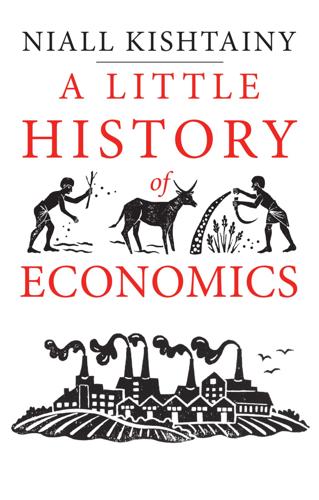
A Little History of Economics
by
Niall Kishtainy
Published 15 Jan 2017
Veblen certainly seemed to live out his criticism in his own rather modest consumption. His clothes were too big and often looked as if he’d slept in them, and he kept his watch crudely attached to his vest with a safety pin. He suggested doing away with silks and tweeds altogether and making clothes out of paper instead. Modern America’s tribal chiefs were men like Cornelius Vanderbilt, who over the nineteenth century rose from being an uneducated ferry boy to a fabulously wealthy railway owner, leaving an estate worth billions in today’s money. The Vanderbilt family built giant mansions and summer estates. One of them gave his wife for her birthday the Marble House in Rhode Island, a lavish palace made from 500,000 cubic feet of white marble.
…
One of them gave his wife for her birthday the Marble House in Rhode Island, a lavish palace made from 500,000 cubic feet of white marble. Underneath the conspicuous consumption of men like Vanderbilt was an instinct that Veblen called ‘predation’. Where barbarian kings attacked each other with spears, the modern leisure class defeated their rivals with financial trickery. Take the battle between Cornelius Vanderbilt and another businessman, Daniel Drew, for control of the railway line that ran between Chicago and New York City. Drew cooked up a scheme to outwit Vanderbilt by influencing the price of the railway company’s shares. To pull it off he needed the price to go sky high. He visited a New York bar frequented by stockbrokers, and while chatting to some of them pulled out a handkerchief to wipe his brow.
…
The contrast between old and new also runs through his theory of capitalism, which he set out in his book Capitalism, Socialism and Democracy. According to Schumpeter, the fruits of modern capitalism – the vast array of goods on offer and the new technologies used to produce them – are created by heroic figures who are modern-day versions of the swashbuckling knights of old. They’re entrepreneurs, men like the railway owner Cornelius Vanderbilt, or Andrew Carnegie, who amassed a huge fortune through expanding the American steel industry. Thorstein Veblen had seen Vanderbilt and his type as throwbacks to ancient societies of violent barbarians, ‘robber barons’ whose aggression made them rich but didn’t benefit society as a whole. But Schumpeter said that it was because they’d channelled their excess energy into industry instead of battle that they’d become society’s wealth creators.

The Survival of the City: Human Flourishing in an Age of Isolation
by
Edward Glaeser
and
David Cutler
Published 14 Sep 2021
John Stephenson: “Death of John Stephenson; the Builder of Street Cars Passes Away Suddenly,” The New York Times. George Stephenson: “George Stephenson,” Encyclopædia Britannica Online. “owner of large tracts”: Carman, The Street Surface Railway Franchises of New York City, 23. “as well as being”: Carman, 23. Cornelius Vanderbilt: “Cornelius Vanderbilt,” Encyclopædia Britannica Online. sold for $270,000: Rohde, “Why Investors Should Consider Chicago’s Real Estate Market in 2021.” Boston was $494,000: Andreevska, “Where Should You Invest in the Boston Real Estate Market?” $985,000 in San Francisco: National Association of Realtors, “Metro Home Prices Rise in 96% of Metro Areas in First Quarter of 2020.”
…
“Peter Cooper’s Vision.” https://cooper.edu/about/history/peter-coopers-vision. Cope, Zachary. “Dr. Thomas Percival And Jane Austen.” British Medical Journal 1, no. 5635 (1969): 55–56. Coppola, Francis Ford, dir. The Godfather Part II. Paramount Pictures/Coppola Company/American Zoetrope, 1974. “Cornelius Vanderbilt.” Encyclopædia Britannica Online. Accessed January 18, 2021. www.britannica.com/biography/Cornelius-Vanderbilt-1794-1877. “Coronavirus (COVID-19) Deaths—Statistics and Research.” Our World in Data. https://ourworldindata.org/covid-deaths. “Coronavirus: How New Zealand Relied on Science and Empathy.” BBC News, April 20, 2020. www.bbc.com/news/world-asia-52344299.
…
Historian Harry Carman notes how Samuel Ruggles, the “owner of large tracts of real property between Third and Fourth Avenue, in the vicinity of Irving Place and Lexington Avenue, was untiring in his efforts to obtain public support and approval” for the railroad during the 1830s. He had strong financial incentives to do so, for “as well as being a large landholder, he was also a director and one of the largest stockholders of the New York and Harlem Railroad Company.” Cornelius Vanderbilt was another director of the New York and Harlem. He pushed the construction of the Grand Central Depot that would eventually morph into Grand Central Station. As the railroad stretched north from Grand Central, the city expanded alongside the rails. All cities are both nodes on the vast transportation network that spans the globe and hubs of their own local transportation system that allows travel across their metropolitan region.
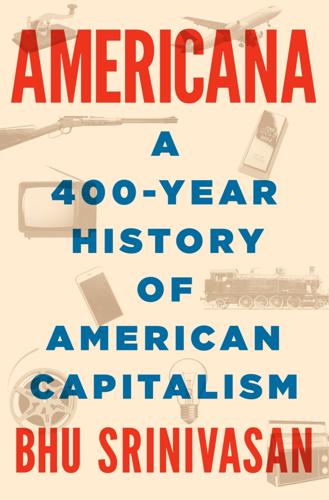
Americana: A 400-Year History of American Capitalism
by
Bhu Srinivasan
Published 25 Sep 2017
Knopf, 2009), 43. refused to duel: Herbert A. Johnson, Gibbons v. Ogden: John Marshall, Steamboats, and the Commerce Clause (Lawrence: University Press of Kansas, 2010), 42–43. “strongest I ever knew”: Cornelius Vanderbilt, in Den D. Trumbull et al. v. Gibbons, April 10, 1849, quoted in Stiles, First Tycoon, 37. his young captain: Memorandum of Agreement between Thomas Gibbons and Cornelius Vanderbilt, June 26, 1818, Gibbons Family Papers, Archives and Special Collections, Drew University, Madison, New Jersey, quoted in Stiles, First Tycoon, 46. advice from Aaron Burr: Aaron Burr, “Of the Validity of the Laws Granting Livingston & Fulton the Exclusive Right of Using Fire and Steam to Propel Boats or Vessels,” Gilder Lehrman Institute of American History, New York Historical Society, quoted in Stiles, First Tycoon, 47.
…
He simply began operating his service. But he soon had a labor problem that needed solving. When the captain of the Stoudinger quit suddenly, Gibbons found himself on the wharves of New York, where he learned of the reliability and courage of a twenty-three-year-old ferry operator. Young Cornelius Vanderbilt would become a key participant in the battle to end the monopoly on the Hudson. One day the proudly uneducated Vanderbilt would become the richest man in America. For now, he was looking to make a switch from sail to steam. Born to a working-class family with Dutch roots dating back to 1650, Vanderbilt ran small sailboats between Staten Island and Manhattan.
…
To Adam Smith, these emerging industrial artists were “philosophers,” enterprising men whose role in society was “to observe everything” and by so doing become “capable of combining together the powers of the most distant and dissimilar objects.” It is unlikely that anyone who knew him would have called Cornelius Vanderbilt a philosopher. By 1840 the unschooled Vanderbilt had bought and sold steamships and routes enough times to amass a fortune, estimated at half a million dollars by some. His waters now extended well beyond the Hudson River and around Manhattan. His new battleground was the waters between Long Island and Connecticut, known as the Long Island Sound.

Americana
by
Bhu Srinivasan
Knopf, 2009), 43. refused to duel: Herbert A. Johnson, Gibbons v. Ogden: John Marshall, Steamboats, and the Commerce Clause (Lawrence: University Press of Kansas, 2010), 42–43. “strongest I ever knew”: Cornelius Vanderbilt, in Den D. Trumbull et al. v. Gibbons, April 10, 1849, quoted in Stiles, First Tycoon, 37. his young captain: Memorandum of Agreement between Thomas Gibbons and Cornelius Vanderbilt, June 26, 1818, Gibbons Family Papers, Archives and Special Collections, Drew University, Madison, New Jersey, quoted in Stiles, First Tycoon, 46. advice from Aaron Burr: Aaron Burr, “Of the Validity of the Laws Granting Livingston & Fulton the Exclusive Right of Using Fire and Steam to Propel Boats or Vessels,” Gilder Lehrman Institute of American History, New York Historical Society, quoted in Stiles, First Tycoon, 47.
…
He simply began operating his service. But he soon had a labor problem that needed solving. When the captain of the Stoudinger quit suddenly, Gibbons found himself on the wharves of New York, where he learned of the reliability and courage of a twenty-three-year-old ferry operator. Young Cornelius Vanderbilt would become a key participant in the battle to end the monopoly on the Hudson. One day the proudly uneducated Vanderbilt would become the richest man in America. For now, he was looking to make a switch from sail to steam. Born to a working-class family with Dutch roots dating back to 1650, Vanderbilt ran small sailboats between Staten Island and Manhattan.
…
To Adam Smith, these emerging industrial artists were “philosophers,” enterprising men whose role in society was “to observe everything” and by so doing become “capable of combining together the powers of the most distant and dissimilar objects.” It is unlikely that anyone who knew him would have called Cornelius Vanderbilt a philosopher. By 1840 the unschooled Vanderbilt had bought and sold steamships and routes enough times to amass a fortune, estimated at half a million dollars by some. His waters now extended well beyond the Hudson River and around Manhattan. His new battleground was the waters between Long Island and Connecticut, known as the Long Island Sound.
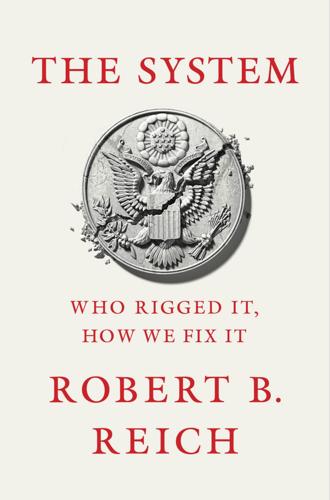
The System: Who Rigged It, How We Fix It
by
Robert B. Reich
Published 24 Mar 2020
Most whites were farmers, indentured servants, farmhands, traders, day laborers, and artisans. A fifth of the population was black, almost all of them slaves. A century later a new oligarchy emerged, comprised of men who amassed fortunes through their railroad, steel, oil, and financial empires—men such as J. Pierpont Morgan, John D. Rockefeller, Andrew Carnegie, Cornelius Vanderbilt, and Andrew Mellon. They ushered the nation into an industrial revolution that vastly expanded economic output. But they also corrupted government, brutally suppressed wages, generated unprecedented levels of inequality and urban poverty, shut down competitors, and made out like bandits—which is how they earned the sobriquet “robber barons.”
…
Recall that this was the era of the robber barons, whose steel mills, oil rigs and refineries, and railroads laid the foundation for America’s industrial might but who also squeezed out rivals who threatened their dominance, ran their own slates for office, and brazenly bribed public officials—even sending lackeys with sacks of money to be placed on the desks of pliant legislators. “What do I care about the law?” railroad magnate Cornelius Vanderbilt famously growled. “Hain’t I got the power?” Forty-eight of the seventy-three men who held cabinet posts between 1868 and 1896 either lobbied for railroads, served railroad clients, sat on railroad boards, or had relatives connected to the railroads. The public was appropriately enraged.

The Rational Optimist: How Prosperity Evolves
by
Matt Ridley
Published 17 May 2010
The average British working man in 1957, when Harold Macmillan told him he had ‘never had it so good’, was earning less in real terms than his modern equivalent could now get in state benefit if unemployed with three children. Today, of Americans officially designated as ‘poor’, 99 per cent have electricity, running water, flush toilets, and a refrigerator; 95 per cent have a television, 88 per cent a telephone, 71 per cent a car and 70 per cent air conditioning. Cornelius Vanderbilt had none of these. Even in 1970 only 36 per cent of all Americans had air conditioning: in 2005 79 per cent of poor households did. Even in urban China 90 per cent of people now have electric light, refrigerators and running water. Many of them also have mobile phones, inter net access and satellite television, not to mention all sorts of improved and cheaper versions of everything from cars and toys to vaccines and restaurants.
…
In the 1950s it took thirty minutes work to earn the price of a McDonald’s cheeseburger; today it takes three minutes. Healthcare and education are among the few things that cost more in terms of hours worked now than they did in the 1950s. Even the most notorious of capitalists, the robber barons of the late nineteenth century, usually got rich by making things cheaper. Cornelius Vanderbilt is the man for whom the New York Times first used the word ‘robber baron’. He is the very epitome of the phrase. Yet observe what Harper’s Weekly had to say about his railways in 1859: The results in every case of the establishment of opposition lines by Vanderbilt has been the permanent reduction of fares.
…
Wherever he ‘laid on’ an opposition line, the fares were instantly reduced, and however the contest terminated, whether he bought out his opponents, as he often did, or they bought him out, the fares were never again raised to the old standard. This great boon – cheap travel – this community owes mainly to Cornelius Vanderbilt. Rail freight charges fell by 90 per cent between 1870 and 1900. There is little doubt that Vanderbilt sometime bribed and bullied his way to success, and that he sometimes paid his workers lower wages than others – I am not trying to make him into a saint – but there is also no doubt that along the way he delivered to consumers an enormous benefit that would otherwise have eluded them – affordable transport.

The Relentless Revolution: A History of Capitalism
by
Joyce Appleby
Published 22 Dec 2009
Because capitalism created unparalleled freedom of action in the economy, its history is studded with stories of personal endeavors. Major accomplishments in science and engineering gave direction to nineteenth-century entrepreneurs who scoured these advances for their commercial potential. As the scope of enterprise grew larger and larger, a few individuals carved out large economic domains of their own. Cornelius Vanderbilt, Andrew Carnegie, and John D. Rockefeller in the United States and August Thyssen, Carl Zeiss, and Siemens in Germany were the giants who carried their nations to economic preeminence in the nineteenth century. They founded the companies of Carl Zeiss, Thyssen, Krupp, and Siemens in Germany and the New York Central Railroad, U.S.
…
The German industrialist Alfred Krupp took over the management of his father’s ironworks firm. Thyssen’s was a family of successful entrepreneurs. In our own time, Bill Gates got a boost from a wealthy father. Yet other industrial giants sprang de novo into the world of trade with little in their backgrounds to suggest a future fabulous success. The perfect example, Cornelius Vanderbilt, began his ascent from a modest waterside farm on Staten Island. Carnegie came from a poor immigrant family, and Rockefeller started at the bottom of the business hierarchy. Siemens got his start through service in the German Army, and Zeiss grew up in a family of toymakers. Vanderbilt’s talents unfolded with the country’s revolution in transportation as he moved from running ferries to transatlantic steamships to railroads.
…
Matthew Gardner, The Autobiography of Elder Matthew Gardner, Dayton, 1874), 69; Christopher Clark, “The Agrarian Context of American Capitalist Development” and Jonathan Levy, “The Mortgage Worked the Hardest’: The Nineteenth-Century Mortgage Market and the Law of Usury,” in Michael Zakim and Gary Kornbluth, eds., For Purposes of Profit: Essays on Capitalism in Nineteenth-Century America (Chicago, 2009). 16. John C. Pease and John M. Niles, A Gazetteer…of Connecticut and Rhode Island (Hartford, 1819), 6. 17. T. J. Stiles, The First Tycoon: The Epic Life of Cornelius Vanderbilt (New York, 2009), 90–95. 18. Thomas P. Hughes, Human-Built World: How to Think about Technology and Culture (Chicago, 2004), 35. 19. Henry L. Ellsworth, A Digest of Patents Issued by the United States, from 1790 to January 1, 1839 (Washington, 1840); see also Kenneth Sokoloff, “Inventive Activity in Early Industrial America: Evidence from Patent Records, 1790–1846,” Journal of Economic History, 48 (1988): 818–20. 20.
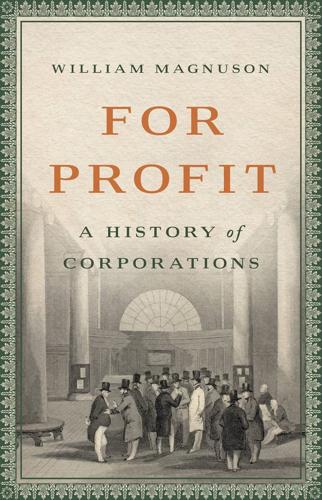
For Profit: A History of Corporations
by
William Magnuson
Published 8 Nov 2022
The wealthy capitalists of the late nineteenth century understood that this was a formula for high profit. Titans of industry like Andrew Carnegie, Cornelius Vanderbilt, and J. P. Morgan all piled into the railroad business, earning themselves reputations as schemers and connivers at the same time that they earned large dividends. The robber barons were railroaders. By universal acclamation, the worst robber baron of all was a man named Jay Gould. Gould had earned notoriety in the late 1860s for his role in the so-called Erie Wars, in which he and his associate Daniel Drew duped Cornelius Vanderbilt into purchasing boatloads of essentially worthless “watered” shares in the Erie Railroad.
…
It took some time for Gould’s real strategy to become clear, though.33 Years later, when asked by a World reporter why he had become interested in the Union Pacific, Gould would explain it in the simplest of terms: “There is nothing strange or mysterious about it. I knew it [i.e., the Union Pacific] very intimately when I was a child, and I have merely returned to my first love.” This may well have been true, but there were also other, less romantic reasons for his acquisition. The first was that Horace F. Clark, son-in-law of Cornelius Vanderbilt and a railroad executive himself, had toured the railroad in May 1873 and came back deeply impressed. Clark told Gould about the trip, and Gould, seeing an opportunity, placed an order to buy any Union Pacific shares for sale at less than thirty-five dollars. Clark died shortly thereafter, and Clark’s own sizeable stake in the company was dumped on the market.
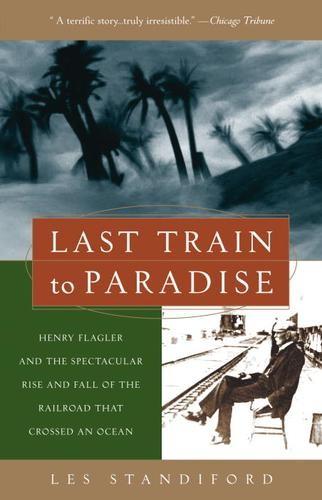
Last Train to Paradise: Henry Flagler and the Spectacular Rise and Fall of the Railroad That Crossed an Ocean
by
Les Standiford
Published 4 Aug 2003
By 1877 the company had become a behemoth that had far outgrown its Cleveland roots. Rockefeller and Flagler determined to move their operations to the burgeoning city of New York, where the company’s far-flung holdings could more easily be managed and where other titans such as railroad builder Cornelius Vanderbilt, fur mogul William B. Astor, and department store maven Alexander T. Stewart had made their homes. Despite the heady move, Flagler was not keen to join the New York City social swirl. Even in Cleveland, he had virtually no social life. His wife had been plagued by a lifetime of chronic bronchitis, and when Flagler was not at his office, he was with her.
…
surveillance blimp Sybill (tugboat) Taft, William Howard Tampa, Florida: cigar business in port facilities in railroad in Tampa Bay Hotel Tavernier, Florida Tavernier Creek bridge Theater of the Sea tidal waves Tifft, Susan tornadoes, force of Torricelli, Evangelista tourists, on US Truman, Harry S Trumbo, Howard Trumbo Island Tuttle, Julia Twain, Mark Umbrella Keys Union Pacific Railroad Upper Keys Upper Matecumbe Key US Highway accidents on built on railroad span driving along as escape route MMs (mile markers) along over open water in Uniform System, n Vanderbilt, Cornelius Vanderbilt family Van Horne, Sir William Van Vechten, Charles Venable, William Mayo Veterans’ Work Program Vines, Rev. Benito Volstead Act (1920) Walker, Will Ward, George M. water, fresh Weather Bureau, U.S. Weather Channel West Palm Beach, Florida Wilkinson, Jerry Williams, Joy Windley Key Windward Islands Wood, Franklin Works Progress Administration (WPA) wreckers yellow fever Yucatán Peninsula, Mexico About the Author Les Standiford is the author of eight critically acclaimed novels as well as several works of nonfiction.
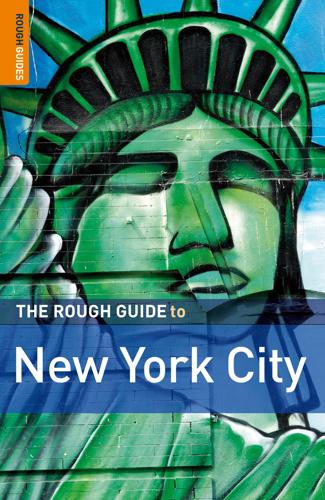
The Rough Guide to New York City
by
Martin Dunford
Published 2 Jan 2009
All that’s left to hint that this might once have been more than a down-at-heel gathering of industrial buildings is Colonnade Row, a strip of four 1833 Greek-Revival houses with twelve Corinthian columns, just south of Astor Place. Originally over twice as long, the row was constructed as residences for the likes of Cornelius Vanderbilt; it now holds the Astor Place Theater (longtime home to The Blue Man Group; see p.361).The stocky brownstone-and-brick building across Lafayette was once the Astor Library. Built with a bequest from John Jacob Astor between 1853 and 1881 (in a belated gesture of noblesse oblige), it was the first public library in New York.
…
Madison Square Garden has moved twice since then, first to a site on Eighth Avenue and 50th Street in 1925, and finally in 1968 to its present location in a hideous drum-shaped eyesore on the corner of 32nd Street and Seventh Avenue (see p.145). 123 H MIDTOW N E AS T Midtown East | Fifth Avenue argely corporate and commercial, and anchored by Grand Central Terminal, Cornelius Vanderbilt’s Beaux-Arts transportation hub, the area known as Midtown East rolls north from the 30s through the 50s, and east from Fifth Avenue. Some of the city’s most determinedly modish boutiques, richest Art Deco facades, and most sophisticated Modernist skyscrapers are in this district, primarily scattered along Fifth, Madison, and Park avenues.
…
Park Avenue Grand Central Terminal | Park Avenue Park Avenue hits 42nd Street at Pershing Square, where it lifts off the ground to make room for the massive Grand Central Terminal (W www .grandcentralterminal.com). More than just a train station, the terminal is a fullblown destination unto itself. When it was constructed in 1913 at the order of railroad magnate Cornelius Vanderbilt, the terminal was a masterly piece of urban planning. After the electrification of the railways made it possible to reroute trains underground, the rail lines behind the existing station were sold off to developers and the profits went toward the building of a new terminal – built around a basic iron frame but clothed with a Beaux-Arts skin.
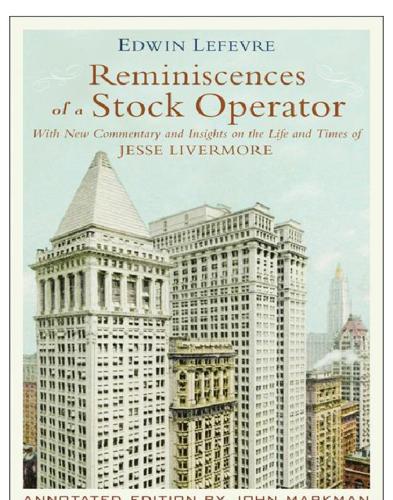
Reminiscences of a Stock Operator
by
Edwin Lefèvre
and
William J. O'Neil
Published 14 May 1923
There was no more vindictiveness about the process than is felt by a hydraulic press—or no more squeamishness, either. 18.1 Known as the Old Man of the Street, Daniel Drew was born in New York in 1797 to a family of poor farmers and became one of the fiercest stock operators of the mid-1800s. He locked horns with Cornelius Vanderbilt, was alternately friends and enemies with Jim Fisk and Jay Gould, and used his directorship of the Erie Railroad to manipulate its stock. Drew’s intense and hardnosed attitude was on display early in his life. In 1814, he sold himself as a military service stand-in for $100. After a few months, he mustered out and started an illegal “bob veal” business.
…
In these early days, before standardized track widths, Erie’s first president, Eleazor Lord, chose a unique six-foot gauge. This, combined with a poorly chosen route through sparsely populated areas, resulted in the railroad’s bankruptcy in 1859. It was then that Drew, Jim Fisk, and Jay Gould took control and battled with Cornelius Vanderbilt by selling him 150,000 counterfeit shares. Before this, in 1852, Drew secured a directorship through underhanded means. First, he started giving the rival New York Central railway preferential rates on his steamboats. Then he took control of the steamers that operated on Lake Erie and served the New York & Erie Railway.
…
To make matters worse, the bears were mad with desire for revenge and started raiding Ryan’s other holdings. And bankers were closing in as well. On July 21, 1922, Ryan filed for bankruptcy, listing debts of over $32 million and assets of $643,533. Stutz Motors stock was sold at public auction for $20 a share. The company eventually failed in 1937. Ryan never recovered and died in 1940. 19.7 Cornelius Vanderbilt was born in 1794 into a Staten Island farming family that sailed its produce to market in Manhattan. After earning a small sum from his mother for fieldwork, Vanderbilt bought himself a two-masted, flat-bottomed sail-boat with which he carried passengers and freight across the bay. Two years later, during the War of 1812, Vanderbilt was awarded a U.S.
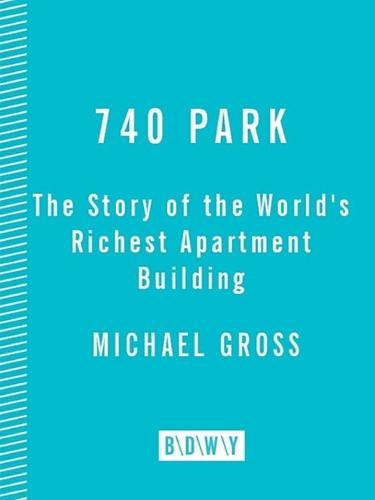
740 Park: The Story of the World's Richest Apartment Building
by
Michael Gross
Published 18 Dec 2007
Four years later, William Hale Harkness, scion of another family with ties to Standard Oil, and a friend of George Brewster’s family as well, joined the firm, and in 1929 it merged with Webb, Patterson & Hadley and became Murray, Aldrich & Webb. Harkness, his new partner Morris Hadley, and their partner Vanderbilt Webb’s brother, J. Watson Webb (both of them great-grandsons of Cornelius Vanderbilt), would all buy apartments in 740 Park. So, just a bit later, would Junior. MEANWHILE, WINTHROP ALDRICH WAS AT JUNIOR’S RIGHT HAND WHEN he orchestrated a proxy fight that forced the chairman of Standard Oil of Indiana, one of the tent poles of the Rockefeller empire, out of his job after he vexed a Senate committee investigating the oil industry.
…
Unsatisfied with the mere duplex penthouse Rosario Candela planned for the building, the Webbs added a third floor—even though there were several triplex Candela penthouses already for sale on Park Avenue. They wanted one built just for them. The Webbs weren’t rich; they were dynastic. Webb’s mother was a granddaughter of Cornelius Vanderbilt. His family had been in America for eight generations when the Commodore, as he was known, made his fortune, but despite his colonial roots, he was deemed too vulgar for society. Lila Webb was the youngest daughter of the Commodore’s eldest son, William Henry, who inherited his father’s steamship and railroad fortune—the largest cash stash in the world—and promptly doubled it.
…
Peggy was pregnant and bore Charles a son, Pierre-Frédérick Henri Charles Bernard William, that fall, but the court ordered that Muffie remain in New York. A new Cholly Knickerbocker wannabe, calling herself Suzy, reported in the New York Mirror that Peggy wanted it all hushed up, but “when you were once supposed to be the chief aspirant for the New York social throne left vacant by the late Mrs. Cornelius Vanderbilt, when you are one of the world’s best-dressed and most photographed women, when you’re young and rich and blonde and beautiful and married to a very important prince and all,” she wrote to the woman she called Madame la Princesse, that “ain’t exactly realistic.” One of Suzy’s competitors, Nancy Randolph of the Daily News, was scoring regular scoops at Peggy’s expense.

An Empire of Wealth: Rise of American Economy Power 1607-2000
by
John Steele Gordon
Published 12 Oct 2009
One man from New Jersey, Thomas Gibbons, decided to fight both in court and in the marketplace. He owned a steamboat named the Stoudinger (although, because it was very small, it was usually known as the Mouse), which he put on the New York–New Brunswick run, the first leg of the quickest route to Philadelphia. He hired as its captain a young man from Staten Island named Cornelius Vanderbilt. Vanderbilt, still in his twenties, had already owned a small fleet of sailing ships, but he realized that the future belonged to steam and went to work for Gibbons to gain experience and build up his capital. He soon convinced Gibbons to build a larger boat, designed by Vanderbilt, which Gibbons named Bellona, after the Roman goddess of war.
…
The board of the Erie, however, was largely unconcerned with such mundane, long-term matters as profitability or even viability. They were far more interested in short-term trading profits on the Street. This made the Erie the wild card of New York railroading (and caused Charles Francis Adams to dub the line the “Scarlet Woman of Wall Street”). An increasingly powerful figure in that market, Cornelius Vanderbilt, wanted to do something about it. Vanderbilt had left the employ of Thomas Gibbons in 1829 and struck out on his own in the steamboat business. He was soon the greatest shipowner in the country, and in 1837 the Journal of Commerce first used the honorary title by which he has been known to history ever since: Commodore.
…
Wherever he ‘laid on’ an opposition line, the fares were instantly reduced, and however the contest terminated, whether he bought out his opponents, as he often did, or they bought him out, the fares were never again raised to the old standard. This great boon—cheap travel—this community owes mainly to Cornelius Vanderbilt.” Even the Times would soon come around to this view of the Commodore. The term robber baron, of course, came to stand for the men, of whom Vanderbilt was one of the first, who built great industrial and transportation empires in the late nineteenth-century American economy. While many of these men were capable of ruthlessness, gross dishonesty, and self-aggrandizement (and others were honest men who scrupulously stayed within what were often inadequate laws), none of them merely transferred wealth to themselves from others by their activities.
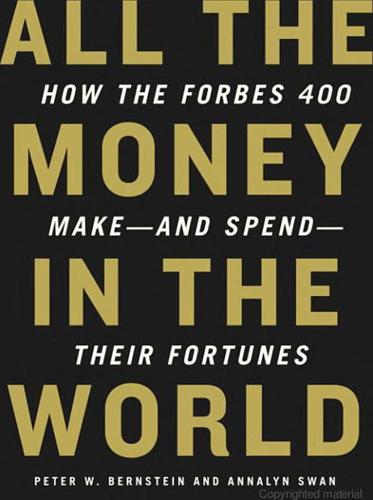
All the Money in the World
by
Peter W. Bernstein
Published 17 Dec 2008
The best is probably to contrast relative scale, treating earlier fortunes as a percentage of inflation-adjusted GDP and then translating that percentage into contemporary dollars. By this standard34 John D. Rockefeller would today be worth $305.3 billion, Andrew Carnegie $281.2 billion, and Cornelius Vanderbilt $168.4 billion. Today’s big rich are rather modest by comparison: Bill Gates, at $53 billion, would be the thirteenth richest American of all time. * * * All-time richest Americans To compile this list, each individual’s wealth was calculated (in billions) at its peak. The figure was compared to the U.S. gross domestic product at the time and converted to 2006 dollars.
…
Josiah Hornblower, heir to the Vanderbilt and Whitney fortunes, tells Johnson he became so depressed at college that he had to take a couple of years off, traveling to Texas where he did manual labor for an oil field services company. S. I. Newhouse IV said fellow pupils at a Quaker school beat him up when they found out how rich he was. * * * Wayward Heirs Huntington Hartford was not the first heir to squander his inheritance. A century after Cornelius Vanderbilt’s death in 1877, not a single one of his more than seven hundred descendants was wealthy enough to be counted among the Forbes 400. Many were the victims of an ever-growing family tree. But others found much more enjoyable ways of lightening their pockets. Commodore Vanderbilt’s son Corneel27 was the first in a line of profligate Vanderbilt heirs.
…
The centerpiece is the 175,000-square-foot Biltmore mansion, the largest private home ever built in America. His widow had to sell Biltmore in order to repay his debts. The Commodore’s great-grandson Reginald Claypoole Vanderbilt squandered his fortune on women, gambling, and booze. And the Commodore’s great-great-grandson Cornelius Vanderbilt IV went broke during the 1920s launching a newspaper empire that failed. Other heirs have taken a more circuitous route to ignominy. During the 1980s28 E. Newbold Smith and his wife, Margaret Du Pont Smith, were so worried that their son Lewis Du Pont Smith had fallen under the sway of fanatic Lyndon LaRouche that they placed him under the control of a financial guardian to stop him from squandering a $10 million inheritance on the extremist group.

Capitalism in America: A History
by
Adrian Wooldridge
and
Alan Greenspan
Published 15 Oct 2018
Carnegie started life as a bobbin boy, endeared himself to the leading businesspeople in Pittsburgh, and by his early thirties had become a millionaire even before investing a dollar in steel. Rockefeller borrowed a thousand dollars from his father at the start of the Civil War, invested it in a food distribution business, emerged from the war with seventy thousand dollars, and purchased a light-fuel factory. Cornelius Vanderbilt started his business career ferrying people in a flat-bottomed boat from New Jersey to New York, traded up to a steamer, and then traded up again to locomotives. “Law, rank, the traditional social bonds—these things meant nothing to him,” T. J. Stiles noted. “Only power earned his respect, and he felt his own strength gathering with every modest investment, every scrap of legal knowledge, every business lesson.”2 Collis Huntington came to California as part of the gold rush but quickly decided that there was more money to be made selling axes and shovels to the miners.
…
The railroads produced a breed of speculators, brilliantly satirized in Anthony Trollope’s The Way We Live Now (1875), who were more interested in gaming railroad stocks to make a quick buck than in actually building railroads. In the so-called Erie War of 1868, Daniel Drew and his allies James Fisk and Jay Gould secretly printed millions of dollars of bonds in the Erie Railway Company in order to stop Cornelius Vanderbilt from taking it over. Speculation was particularly common in the transcontinental railroads, which, as Richard White has demonstrated, were rife with overbuilding, insider dealing, and other sharp corporate practices. This combination of “building well ahead of demand” and endemic speculation meant that the industry was far from the model of rational planning that Alfred Chandler praised.
…
In 1867, Crédit Mobilier, a construction company founded by the principals of the Union Pacific Railroad, skimmed off millions from railroad construction, bribing politicians to turn a blind eye in the process. The politicians embroiled in the scandal would eventually include a vice president, Schuyler Colfax, and a vice-presidential nominee, Henry Wilson; the Speaker of the House, James Blaine; and a future president, James Garfield. The 1869 “war” between Cornelius Vanderbilt and Jay Gould for control of New York’s Erie Railroad involved hired judges, corrupted legislatures, and under-the-counter payments. The railroads changed the nature of lobbying as well as its scale. They used their lobbies to fight their competitors and to beg favors from the government, blurring the line between economic and political competition.

The Story of the Pony Express
by
Glenn D. Bradley
Published 1 Jan 1913
The steamship company, it appears, thought its remuneration too low and it further protested that the diversion of mail traffic, due to the daily Overland Stage Line and the Pony Express would reduce its revenues still further. Congress finally adjourned without effecting a settlement, and the mail, which was far too heavy for the overland facilities to handle at that time, was piling up by the ton awaiting shipment. Matters were getting serious when Cornelius Vanderbilt came to the Government's relief and agreed to furnish steamer service until Congress assembled in March, 1861, provided the Federal authorities would assure him "a fair and adequate compensation." This agreement was effected and the affair settled as agreed. At the expiration of the period, the war and the growing importance of the overland route made steamship service by way of the Isthmus quite obsolete
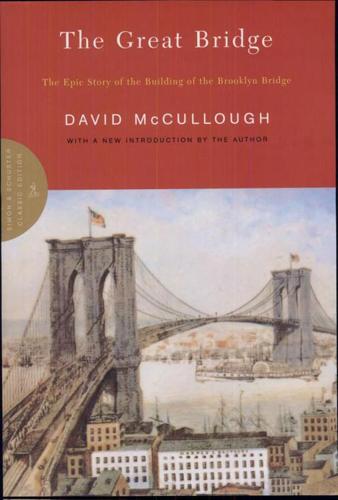
The Great Bridge: The Epic Story of the Building of the Brooklyn Bridge
by
David McCullough
Published 1 Jun 2001
The Union Pacific was laying track at a rate of eight miles a day by this time. In Massachusetts a hole was being bored nearly five miles through the solid rock of Hoosac Mountain, just to slice a little time off the railroad run from Boston to Albany. Boston itself was being doubled in size by filling in Back Bay swamp. In New York Cornelius Vanderbilt was erecting a very grand new Grand Central Depot, the train-shed roof of which, an immense vault of glass and iron, would contain the largest interior space in the country. There was a new tunnel under the Chicago River, a first bridge over the Missouri at Kansas City, and at St. Louis a river captain named Eads had begun building a railroad bridge over the Mississippi.
…
But nowhere else was quite so much happening every day or was there so much opportunity for the young, the talented, the ambitious, not to mention the lucky or the unscrupulous. Yesterday’s ragpicker or coal heaver was today’s millionaire (a new word). It not only happened in stories, it happened. A. T. Stewart had once been an ordinary shopkeeper, living over a store with his wife in a single room. Cornelius Vanderbilt began penniless, everyone knew. The city was the undisputed center of the new America that had been emerging since the war. It was a place of a thousand and one overnight schemes, some brilliant, some preposterous, some plain evil, and all, it seemed, calling for enormous outlays of capital and pure nerve.
…
But there was no easy way to delay the direct question and so the usually amiable Stranahan, who reminded people of an English statesman and who was looking more dignified than ever now that he was in his seventies, had been filled with great righteous indignation, basing his case, as it were, on the excellence of his personal character and past services. The tactic worked. Mayor Grace said he meant no harm and asked no further questions. Stranahan said there was really no reason for the gentlemen from New York to be apprehensive. He told them how ten years earlier he had talked with Cornelius Vanderbilt about linking up with the New York Central and how Colonel Roebling had met with Vanderbilt’s engineer to figure a way to handle the problem. It was thought that a sunken line could be run from Grand Central Depot south to the bridge, then the trains could be raised by hydraulic lifts to cross over the bridge.
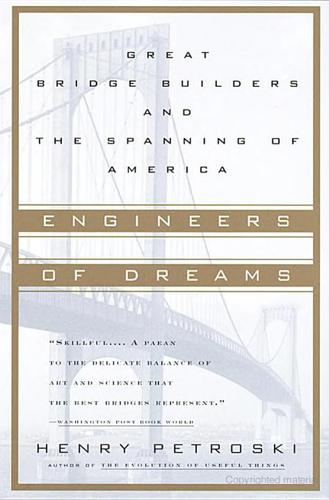
Engineers of Dreams: Great Bridge Builders and the Spanning of America
by
Henry Petroski
Published 2 Jan 1995
One chronicler of bridges has written that “the success of an engineering project may often be measured by the absence of any dramatic history,” but what may appear to be undramatic from one perspective can be very traumatic from another. To build a bridge from Brooklyn to Staten Island across the Narrows that ferryboat services, including one begun by Cornelius Vanderbilt in 1810, had plied for centuries required an enormous amount of land for approaches. Robert Moses called the bridge “the most important link in the great highway system stretching from Boston to Washington, or, if you please, Maine to Florida.” However, to close this link, especially on the Brooklyn side, meant disrupting long-established neighborhoods, and this was at least as difficult to accomplish as any engineering aspect of the problem.
…
One project that had been shelved during the 1940s was the crossing of the Straits of Mackinac, which had so separated the Upper from the Lower Peninsula of Michigan that the Upper Peninsula was for all practical and economic purposes more a part of Wisconsin than of Michigan. Thousands of cars would wait sometimes almost a full day to get ferry service across the straits during summer-vacation time. At least as far back as 1888, when Cornelius Vanderbilt was attending a directors’ meeting at the Grand Hotel on Mackinac Island and said, “What this area needs is a bridge across the Straits,” an obvious advantage had been seen in such a structure. In one of his later poems, “The Bridge at Mackinac,” Steinman would not only set the scene but also use rhyme to clarify the pronunciation of the place name.
…
Katz, p. 36. 363. “at a thinly disguised”: NYT, Oct. 23, 1964, p. 26. 364. Italy also issued a stamp: NYT, Nov. 29, 1964, sect. II, p. 35. 365. “a brave vagrant”: NYT, Nov. 3, 1964, p. 30. 366. ever-popular numbers: Cohen, p. 739. 367. “the success of”: Joseph Gies, quoted in Talese, p. 38. 368. Cornelius Vanderbilt: Réthi, pp. 8, 10. 369. “the most important link”: ibid., foreword. 370. long-established neighborhoods: see Talese, ch. 2. 371. “essentially the application”: Ammann, in preface to Réthi. 372. upper and lower decks: Talese, p. 45. 373. The opening ceremonies: Triborough Bridge and Tunnel Authority, Verrazano-Narrows Bridge Dedication, Nov. 21, 1964, program. 374.

Streetfight: Handbook for an Urban Revolution
by
Janette Sadik-Khan
Published 8 Mar 2016
Car-free streets in dozens of neighborhoods, like this one on Montague Street in Brooklyn Heights, showed how quickly and easily a street could be transformed into inviting public space, revealing the street’s hidden potential using little more than artificial turf. NYC DOT Removing cars for a few hours revealed the city hidden beneath and within. A statue of railroad magnate Cornelius Vanderbilt, for decades visible only from cars driving along the viaduct that wraps around Grand Central Terminal, became a surprise attraction. Dozens of people stopped to snap pictures and pose for selfies. Notorious shoe gazers, New Yorkers in these first summer Saturdays started looking up, unafraid that they would block traffic or get hit by a car.
…
All the resources of the agency had been put into creating an opportunity to let New Yorkers experience their streets. I rode along the route with my son, Max, who shot free throws at a basketball clinic sponsored by the New York Knicks and was given pointers on his shooting style. My husband, Mark, Max, and I biked together and hung out by the Cornelius Vanderbilt statue, an opportunity for everyone at the agency to meet my family and for me to meet theirs. Coworkers brought their partners, friends, and family for a special moment when the professional and the personal merged. Seeing streets in Manhattan opened for free-range activities, communities in every borough started clamoring for their own versions of the event.
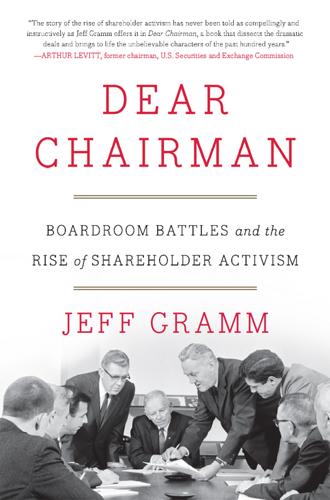
Dear Chairman: Boardroom Battles and the Rise of Shareholder Activism
by
Jeff Gramm
Published 23 Feb 2016
When real money is at stake, etiquette goes out the window. The large railroads were the first public companies to share detailed financial information with a widespread stockholder base. Before the turn of the twentieth century, many of them were subject to vicious, backstabbing fights for control, such as the Erie Railway proxy battle, and Cornelius Vanderbilt’s takeover of the New York Central.6 Benjamin Graham is often regarded as a distant intellectual forebear of today’s hedge fund managers and shareholder activists. But this view gives him much less credit than he deserves. Graham was a hedge fund pioneer, founding a partnership that shorted securities and collected performance-based fees more than a decade before the launch of A.
…
Cheffins, “Origins of ‘Offensive’ Shareholder Activism in the United States,” in Origins of Shareholder Advocacy, edited by Jonathan G. S. Koppell (New York: Palgrave Macmillan, 2011), 257. 4. “Cent. Leather Proxy Fight,” New York Times, January 31, 1911. 5. Armour and Cheffins, “Origins of ‘Offensive’ Shareholder Activism,” 257. 6. T. J. Stiles, The First Tycoon: The Epic Life of Cornelius Vanderbilt (New York: Vintage Books, 2010), 439, 449–65. 7. Jones is commonly credited with starting the world’s first hedge fund in 1949. Graham founded Newman & Graham in 1936. Alice Schroeder, The Snowball: Warren Buffett and the Business of Life (New York: Bantam, 2008). Newman & Graham, like A.

Money Moments: Simple Steps to Financial Well-Being
by
Jason Butler
Published 22 Nov 2017
Interestingly, the average will is made four years and one month prior to the individual’s death. So perhaps if you redo your will every four years you’ll live forever! 39 RULES OF THE ROAD LEGACIES THAT LAST ‘Inherited wealth is a real handicap to happiness. It is as certain a death to ambition as cocaine is to morality.’ William K. Vanderbilt, grandson of Cornelius Vanderbilt In 1810 Cornelius “Commodore” Vanderbilt, aged sixteen, used $100 borrowed from his mother to set up a passenger boat on Staten Island in New York. By all accounts Cornelius was a hard-driving, rough character. A Vanderbilt descendant described him as ‘illiterate, bad-tempered and foul-mouthed, and inclined, when trapped into a social event, to spit streams of tobacco juice and fondle the maids.’
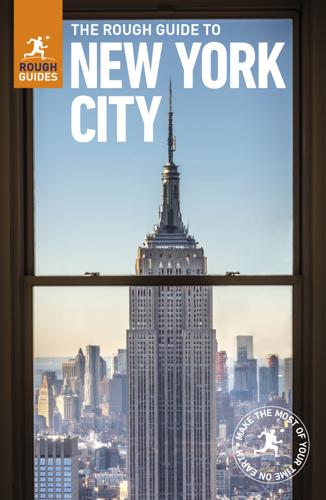
The Rough Guide to New York City
by
Rough Guides
Published 21 May 2018
Both will clue you in on the building’s architecture and history; the latter walk takes you to a few nearby spots outside Grand Central as well. A third option is a self-guided audio tour; pick it up at GCT Tour window on the main concourse (daily 9am–6pm; $9). Brief history When it was constructed in 1913 (on the site of the original station built by Cornelius Vanderbilt), the terminal was a masterly piece of urban planning. After the electrification of the railways made it possible to reroute trains underground, the rail lines behind the existing station were sold off to developers and the profits went towards the building of a new terminal – built around a basic iron frame but clothed with a Beaux Arts skin.
…
Eleanor was born at 56 W 37th St in 1884, but moved into 49 E 65th St with her husband in 1908 (a wedding gift from FDR’s overbearing mother). The couple owned the property until 1941 (it’s now the Roosevelt House at Hunter College); after a spell in the West Village, Eleanor (now a widow) moved to 211 E 62nd St in 1953 and then to 55 E 74th St in 1959 – she died there three years later. The Vanderbilts Commodore Cornelius Vanderbilt (1794–1877) made his millions through railways and shipping – he built the first Grand Central station. The family erected huge mansions on Fifth Avenue between 50th and 59th streets in the nineteenth century, with socialite Grace Vanderbilt later moving into 1048 Fifth Ave (now the Neue Galerie).
…
If you don’t have much time, consider buying the “premium admission” tickets online, which guarantee that you’ll jump the queue. The gallery occupies an ornate Georgian-style mansion completed in 1914 by Carrère & Hastings for industrialist William Starr Miller, but became the residence of formidable New York socialite Grace Vanderbilt between 1944 and 1953, after the death of her millionaire husband, Cornelius Vanderbilt III. In 2001, it was transformed into the museum, thanks largely to the work of New York art collectors Serge Sabarsky and Ronald S. Lauder. At the Neue’s Café Sabarsky, you can pause for exquisite Viennese pastries before heading back to Museum Mile. Guggenheim Museum 1071 Fifth Ave, at E 89th St • Mon–Wed, Fri & Sun 10am–5.45pm, Sat 10am–7.45pm • $25, pay what you wish Sat 5.45–7.45pm; multimedia tours free or free apps from iTunes or Google Play via free wi-fi; guided tours daily 2pm (free) • 212 423 3500, guggenheim.org • Subway #4, #5, #6 to 86th St Multistorey car park or upturned beehive?
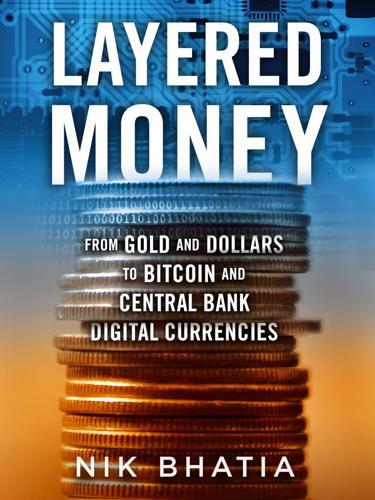
Layered Money: From Gold and Dollars to Bitcoin and Central Bank Digital Currencies
by
Nik Bhatia
Published 18 Jan 2021
Chapter 4 Federal Reserve System Gold is money. Everything else is credit. —J.P. Morgan to United States Congress in 1912 At the turn of the twentieth century, the pound remained the world’s reserve currency but was losing ground to the United States dollar. During the Industrial Revolution, corporate barons Cornelius Vanderbilt, John D. Rockefeller, Andrew Carnegie, J.P. Morgan, and Henry Ford built companies that attracted demand for American currency. The world needed dollars in order to purchase the goods, services, and shares of these new elite corporate institutions. During this span, the United States did not have a central bank.
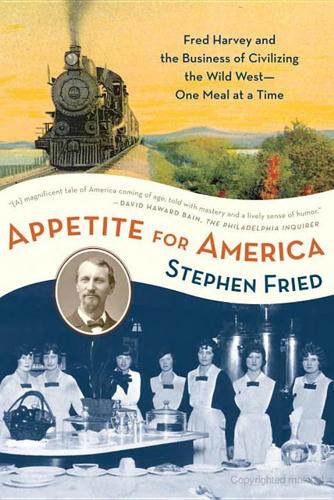
Appetite for America: Fred Harvey and the Business of Civilizing the Wild West--One Meal at a Time
by
Stephen Fried
Published 23 Mar 2010
The railroad he worked for, the Northern Missouri, was part of “the Joy System”—a loose conglomeration of regional railroads controlled by Detroit lawyer James F. Joy. While less well-known than the tycoons who were buying up railroads and railroad stock in the East—Jay Cooke, Jay Gould, Andrew Carnegie, Cornelius Vanderbilt, J. P. Morgan—Joy was the most powerful railroad magnate on the western frontier, starting out with the Michigan Central and eventually controlling major lines in Illinois, Iowa, and Missouri. Unfortunately, Joy wanted to build his bridge and his hub thirty miles downriver from Leavenworth, in a sparsely populated area called “City of Kansas” on the Missouri side and Wyandotte on the Kansas side.
…
As France and Britain quickly joined the war, Americans abroad could no longer cash personal checks, traveler’s checks, or letters of credit—so even the richest among them were effectively broke. Worse, they had no way of getting home. Of the hundreds of steamships Americans used to cross the Atlantic, only a handful actually flew the American flag. European-owned liners were needed for troops. Cornelius Vanderbilt III and his wife soon figured out how to charter a private yacht—flying Old Glory—and went home to Newport, but ordinary well-to-do people like Dave and his wife were stuck. From the resort town of Rorschach, Switzerland, they headed to Zurich, then Lucerne, then Bern, seeking help at the American and British consulates, as well as at the bank, the telegraph office, and the travel bureau.
…
By year’s end, health officials finally declared an all-out war, but without medicinal weapons they could only resort to increased fines for spitting and, in some cities, a ban on kissing and “all forms of petting.” Many people, including many celebrated patients, survived the illness: among them Charlie Chaplin, Ethel Barrymore, Jackie Coogan, Lon Chaney, Mrs. Cornelius Vanderbilt Jr., journalist Ida Tarbell, opera prima donna Ganna Walska, and, at the beginning of baseball season, Babe Ruth. But more than a hundred thousand Americans did not survive. And unlike previous epidemics, which mostly struck in cities, this one killed in even the most remote territories: More than 10 percent of the entire Indian population of the Northwest was wiped out.
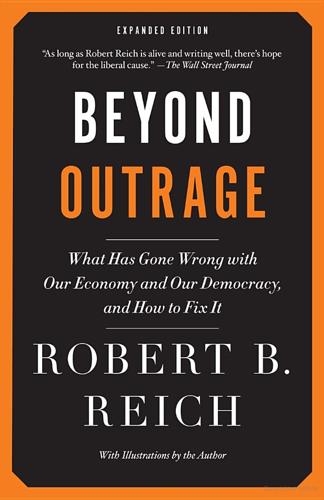
Beyond Outrage: Expanded Edition: What Has Gone Wrong With Our Economy and Our Democracy, and How to Fix It
by
Robert B. Reich
Published 3 Sep 2012
It was a time when so-called robber barons—railroad, financial, and oil titans—ran the country; a time of wrenching squalor for the many and mind-numbing wealth for the few, when the federal government was small, the Fed and the Internal Revenue Service had yet to be invented, state laws determined worker safety and hours, evolution was still considered contentious, immigrants were almost all European, big corporations and robber barons ran the government, the poor were desperate, and the rich lived like old-world aristocrats. It was an era when the nation was mesmerized by the doctrine of free enterprise but few Americans actually enjoyed much freedom. The financier Jay Gould, the railroad magnate Cornelius Vanderbilt, and the oil tycoon John D. Rockefeller controlled much of American industry; the gap between rich and poor had turned into a chasm; urban slums festered; children worked long hours in factories; women couldn’t vote, and black Americans were subject to Jim Crow; and the lackeys of the rich literally deposited sacks of money on desks of pliant legislators.
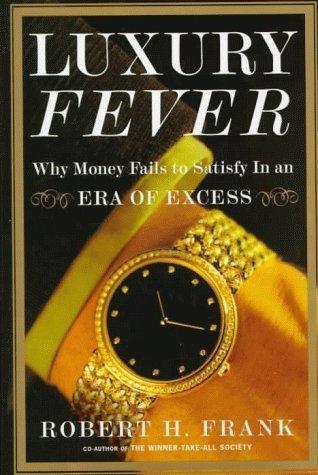
Luxury Fever: Why Money Fails to Satisfy in an Era of Excess
by
Robert H. Frank
Published 15 Jan 1999
CHAPTER 2 THE LUXURY SPENDING BOOM The economist Thorstein Veblen’s term conspicuous consumption was inspired by the spectacular excesses of America’s Gilded Age—roughly, from 1890 until the beginning of World War I. Among the most visible players of that era were the high-living descendants of railroad tycoon Commodore Cornelius Vanderbilt. By 1900, the clan had constructed eight lavish mansions between 51st and 59th Streets in Manhattan—including One 57th Street, whose 137 rooms made it the largest house ever built in an American city.1 The Vanderbilts also built 10 major summer estates, including Newport, Rhode Island’s Marble House, an $11 million birthday present from Cornelius Vanderbilt II to his wife Alva in 1892.2 (During the 1890s, a construction foreman earned about $1.25 a day and a common laborer could be hired for as little as 2 cents an hour.)3 To this day, George Vanderbilt’s Biltmore Estate in Asheville, North Carolina, a 250-room Renaissance-style chateau completed in 1895, remains the largest private house ever built in America.4 Of these grandiose expenditures by the superrich, Veblen wrote that “since the consumption of these … excellent goods is an evidence of wealth, it becomes honorific; and conversely, the failure to consume in due quantity and quality becomes a mark of inferiority and demerit.”5 It was Veblen’s view, in other words, that the rich often spent lavishly merely to demonstrate to others that they could afford to do so.
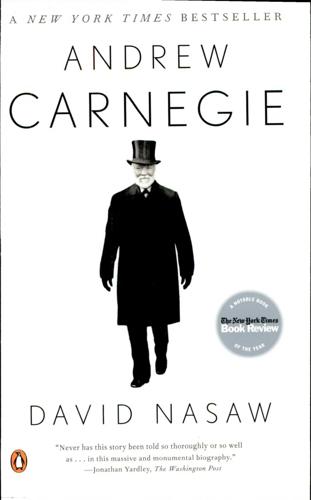
Andrew Carnegie
by
David Nasaw
Published 15 Nov 2007
What Carnegie didn’t mention was that in sweetening the deal for the bridge company, Thomson was taking money from the railroad’s stockholders to give it to a privately held company in which he held stock.36 In 1868, Thomson increased his investment in Keystone Bridge and directed his chief engineer to have all remaining wooden bridges on the Pennsylvania replaced by iron ones. Scott also remained a very active, though silent partner in the bridge company. When, in the spring of 1869, Carnegie got word that Cornelius Vanderbilt intended to build a “new bridge across the Hudson at Albany,” he wrote Scott asking for “a letter of introduction—making reference to the Keystone Bridge Co., and its bridges in such terms as the facts may seem to you to warrant.”37 The connection between Keystone and the Pennsylvania was no secret, though few were privy to the fact that Thomson and Scott were investors.
…
When, the next morning, he received a return cable approving the changes, he had his deal.2 The young and now successful bond trader spent the rest of the week in London helping Morgan resell the bonds by telling whoever would listen—principally the financial editors of the London papers—that the Erie Railroad scandals of the late 1860s, in which Cornelius Vanderbilt, Jim Fisk, Jay Gould, and Daniel Drew had gambled with the lives and fortunes of investors by driving up, down, and sideways the price of stock in the Erie, had been a once in a lifetime aberration. There was, Carnegie insisted, no connection whatsoever between his rock-solid bridge bonds and the water-soaked railroad stock.
…
William Henry Vanderbilt’s twin palaces occupied the entire block front on the west side of Fifth Avenue, from Fifty-first to Fifty-second Streets. Vanderbilt’s son, William Kissam Vanderbilt, had built his own French Renaissance mansion across the street. Farther north on Fifty-seventh and Fifth sat the mansion of William Kissam’s older brother, Cornelius Vanderbilt II, this one also in the style of the French Renaissance—but more restrained and classical. Across Fifty-seventh Street, Collis Huntington, having sold the Fifty-first Street house which Arabella found wanting, constructed a city château that was so oversized, even by New York standards, that it took up five 25-foot lots.
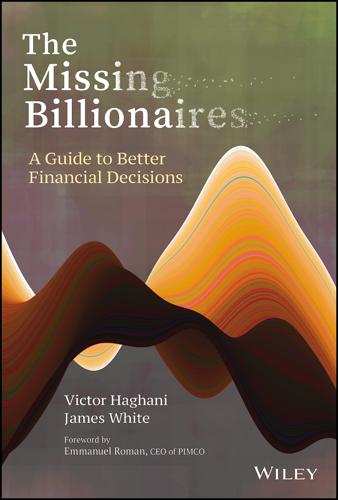
The Missing Billionaires: A Guide to Better Financial Decisions
by
Victor Haghani
and
James White
Published 27 Aug 2023
Finally, we must thank all those “missing billionaires” who have helped us realize that there was a book that needed to be written about making better financial decisions. 1 Introduction: The Puzzle of the Missing Billionaires Any fool can make a fortune; it takes a man of brains to hold onto it. —Cornelius “Commodore” Vanderbilt A beautiful statue of Cornelius Vanderbilt, the nineteenth‐century rail and shipping tycoon, adorns the outside of Grand Central Station in New York City. It's there because “the Commodore” ordered the station's construction. Although partially obscured today by an eyesore called the Park Avenue Viaduct, the statue sits right at the heart of midtown Manhattan, the global center of finance, regularly visible to many of today's financial titans.
…
And when giving resources to projects presently, how should individuals think about the risk inherent in how those charitable projects perform in improving the welfare of those they are trying to help? Should an assessment of the risk of the charitable projects themselves come into play? When Cornelius Vanderbilt made his million dollar gift to found Vanderbilt University, would he have gotten more Expected Utility if he thought it was likely to turn into such a successful investment? This topic warrants much greater examination than we are giving it here, although it's likely that some of the big questions involved will not have a single answer that satisfies all readers.

St Pancras Station
by
Simon Bradley
Published 14 Apr 2007
But the pointed-arched shape was repeated too, for instance at the later train sheds at Cologne and Berlin Friedrichstrasse. America took to the St Pancras model especially avidly. The 1871 incarnation of New York’s Grand Central, truly the grandest station built in the United States up to that time, was meant to rival the best that Old Europe could show. Its paymaster, the railroad baron Cornelius Vanderbilt, therefore insisted that it be the largest station in the world: five acres in extent rather than the four and a half of St Pancras. The train shed adopted Barlow’s model of soaring arches tied below the tracks, but of segmental form. At Park Square station at Boston (1872) the pointed form prevailed.
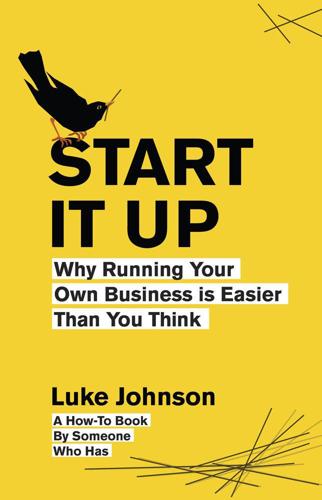
Start It Up: Why Running Your Own Business Is Easier Than You Think
by
Luke Johnson
Published 31 Aug 2011
For Captain Bob had surely sold his soul to the devil many years before. But the Bouncing Czech is not typical of the breed. Most wealth creators retain at least a veneer of civilized behaviour. Nevertheless, when cornered or roused to fury, they can be ruthless. In 1853, the shipping and railroad magnate Cornelius Vanderbilt wrote to two former business associates, Morgan and Garrison: ‘You have undertaken to cheat me. I won’t sue you, for the law is too slow. I’ll ruin you.’ He then proceeded to make good on his promise. The modern-day autocrats are surely the Russian oligarchs. They looted their nation’s assets in an orgy of corruption under the drunken President Boris Yeltsin.

The Psychology of Money: Timeless Lessons on Wealth, Greed, and Happiness
by
Morgan Housel
Published 7 Sep 2020
We have brains that prefer easy answers without much appetite for nuance. So identifying the traits we should emulate or avoid can be agonizingly hard. Let me tell you another story of someone who, like Bill Gates, was wildly successful, but whose success is hard to pin down as being caused by luck or skill. Cornelius Vanderbilt had just finished a series of business deals to expand his railroad empire. One of his business advisors leaned in to tell Vanderbilt that every transaction he agreed to broke the law. “My God, John,” said Vanderbilt, “You don’t suppose you can run a railroad in accordance with the statutes of the State of New York, do you?”
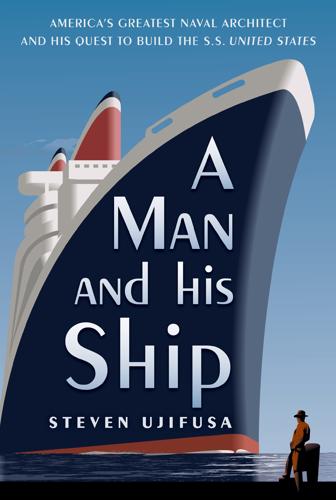
A Man and His Ship: America's Greatest Naval Architect and His Quest to Build the S.S. United States
by
Steven Ujifusa
Published 9 Jul 2012
Three of his luxurious ships took the new Blue Riband, making 13 knots and beating the British ships by an average of seven hours.10 But after two of his money-losing ships sank and drowned hundreds of passengers, Congress killed the line’s subsidy. Urging the move was Collin’s unsubsidized rival in the transatlantic steamship business, a brash New Yorker named Cornelius Vanderbilt, known by the public as “the Commodore.” The Collins Line collapsed without the subsidy, but Vanderbilt’s transatlantic line also failed—he sold his ships and purchased the New York Central Railroad. While Washington gave away millions of acres of land out West to the railroads, the American merchant marine got little support.
…
During the high summer season, men in straw boaters and women in cloche hats crammed the pier heads, waving handkerchiefs as the giants backed away from their piers into the Hudson, blasting their whistles and belching black smoke from their stacks. The five- or six-day trip was filled with masquerades, passenger talent shows, shuffleboard tournaments, and smoking room bridge games. After dark, the booze flowed and hot jazz bands blared from the ballroom stage. The Prince of Wales and Queen Marie of Romania joined Cornelius Vanderbilt III and Vincent Astor at captain’s tables overflowing with grilled antelope, quail eggs, and caviar. New York’s corrupt mayor, Jimmy Walker, set a new standard for shipboard dandyism: he packed his steamer trunks with forty-four suits, twenty pique vests (to go with his tailcoats), twelve pairs of trousers, and a hundred cravats.

Animal Spirits: The American Pursuit of Vitality From Camp Meeting to Wall Street
by
Jackson Lears
Debt was the other side of credit, and credit was as essential (and as ephemeral) as air. Cooke’s high reputation as savior of the Union helped him attract the capital to create the Northern Pacific Railroad. The Northern Pacific purported eventually to connect Chicago with the Pacific Northwest but during its brief paper existence it ran “from nowhere to nowhere,” as Cornelius Vanderbilt acidly observed when Cooke’s venture finally crashed on September 18, 1873. This high-profile disaster could hardly have come at a worse time. Ominous clouds had been gathering over Wall Street for days. The classic pattern of the business cycle was beginning to repeat itself. Banks had overextended credit to reckless borrowers who were unable to meet their obligations to the banks; the banks in turn, having exceeded their reserves, were unable to meet their obligations to their depositors.
…
Evans, “The Aesthetic Sense and Religious Sentiment in Animals,” Popular Science Monthly 42 (Feb. 1893), 475. “The terror of the dog”: Ibid., 478. “The adherents of both”: “Chicago! The Great Convention,” Evening Star, June 5, 1880, 9. “new virtual world”: Richard White, Railroaded: The Transcontinentals and the Making of Modern America (2011), 68. “from nowhere to nowhere”: Cornelius Vanderbilt, cited in M. John Lubetkin, Jay Cooke’s Gamble: The Northern Pacific Railroad, the Sioux, and the Panic of 1873 (2006), 287. “Gradually fevered blood commenced”: A journalist, History of the Terrible Panic of 1873 (1873), 5. “Thus, while men rushed wildly”: Ibid., 14. “life itself is essentially appropriation”: Friedrich Nietzsche, Beyond Good and Evil, cited and translated in Frederick Amrine, “‘The Triumph of Life’: Nietzsche’s Verbicide,” in Burwick and Douglass, The Crisis in Modernism, 146.

Frommer's Memorable Walks in San Francisco
by
Erika Lenkert
Published 15 Mar 2003
Acquitted by an American jury after attempting (and failing)to conquer Southern California and the Sonora region of Mexico, Walker moved on to bigger things. In 1855, he set out to conquer Nicaragua, which he accomplished after capturing Granada in 1856; he then declared himself president. With the help of Cornelius Vanderbilt (who originally backed Walker’s venture), a Central American alliance defeated Walker the next year, and again he was brought back to the United States for trial. Again, he was acquitted. He made a final attempt to conquer all of Central America in 1860 but was held back by the British navy.

The Thank You Economy
by
Gary Vaynerchuk
Published 1 Jan 2010
The Time magazine article that accompanied Bezos’s Person of the Year award describes it best: Every time a seismic shift takes place in our economy, there are people who feel the vibrations long before the rest of us do, vibrations so strong they demand action—action that can seem rash, even stupid. Ferry owner Cornelius Vanderbilt jumped ship when he saw the railroads coming. Thomas Watson Jr., overwhelmed by his sense that computers would be everywhere even when they were nowhere, bet his father’s office-machine company on it: IBM. Jeffrey Preston Bezos had that same experience when he first peered into the maze of connected computers called the World Wide Web and realized that the future of retailing was glowing back at him.

On Power and Ideology
by
Noam Chomsky
Published 7 Jul 2015
Everything was just fine in El Salvador too, in one of the world’s most miserable countries, until 1960-1, when the U.S. sponsored a right-wing military coup to block another potential threat to the Fifth Freedom, in accord with President Kennedy’s doctrine that “governments of the civil-military type of El Salvador are the most effective in containing Communist penetration in Latin America.” We return to the aftermath. In Nicaragua, the first major U.S. military operation took place in 1854, when the U.S. Navy burned down the port town of San Juan del Norte to avenge an alleged insult to American officials and the millionaire entrepreneur Cornelius Vanderbilt. Marines landed in 1909 and again in 1912, establishing a military occupation that lasted (apart from one year) until 1933, leading to the establishment of the Somoza dictatorship after a murderous counterinsurgency campaign and the assassination of Sandino by a ruse. The bloody and corrupt rule of the Somoza dynasty lasted until 1979, with full U.S. support, while Somoza turned his country into a base for the projection of U.S. power in the region.

Slouching Towards Bethlehem
by
Joan Didion
Published 1 Jan 1968
What Newport turns out to be, then, is homiletic, a fantastically elaborate stage setting for an American morality play in which money and happiness are presented as antithetical. It is a curious theatrical for these particular men to have conceived, but then we all judge ourselves sometime; it is hard for me to believe that Cornelius Vanderbilt did not sense, at some point in time, in some dim billiard room of his unconscious, that when he built “The Breakers” he damned himself. The world must have seemed greener to all of them, out there when they were young and began laying the rails or digging for high-grade ore in the Comstock or daring to think that they might corner copper.

Damsel in Distressed: My Life in the Golden Age of Hedge Funds
by
Dominique Mielle
Published 6 Sep 2021
It was akin to plucking Voltaire from his richly intellectual century (aka the Enlightenment) and plunging him into Wall Street on the first day of school. Not that I fancied myself a modern Voltaire, of course, but if I had to pick, the man seemed eminently more worthy of emulation than John Rockefeller or Cornelius Vanderbilt. At the time, my interests were pure and theoretical. I had a vague idea that I would need a profession somewhere down the road but held a quiet hope that that road would be long and winding. I had never worked and was in no hurry to start. Management and business classes seemed tedious; I lived for the electives.
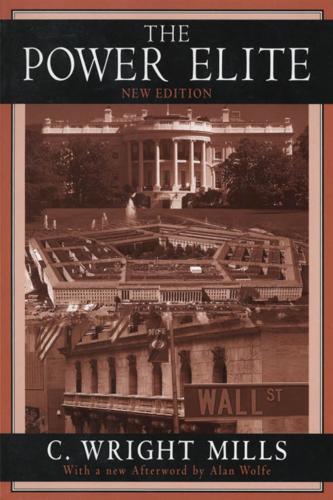
The Power Elite
by
C. Wright Mills
and
Alan Wolfe
Published 1 Jan 1956
See ‘The Yankee Doodle Salon,’ op. cit. pp. 183, 186. 12. Time, 31 January 1955, p. 57. 13. See Time, 18 January 1954, p. 30. 14. Perhaps it is also revealed by two contrasting stories recently carried in a national news magazine: (1) Upon her death in 1953, no less a Society Lady than Mrs. Cornelius Vanderbilt is treated as a quaint sort of curiosity (Cf. Time, 19 January 1953, p. 21). (2) About the same time, we read of Prince Mike Romanoff, probably born one Harry F. Cerguson in Brooklyn, of cafe society fame. In the account of his personality, Harry F. Gerguson is treated with due deference and quite some jolly admiration for being such a successful fake.
…
It is awakening to the realization that it cannot have horseplay in economics … Charming as politics may be at times on the stage, she is often petulant and petty in the dressing rooms … Nothing is clearer, from the experiences of the last ten years, than the necessity of keeping our economic machinery and especially our finance free from the domination and control of politics.’29 ** Thus Harold Ickes writes concerning a ‘state visit from the heads of one political entity to those of another political entity’: ‘Only a few chosen souls were asked to sit on the porch where the King and Queen spent most of their time, and apparently Jim Farley was the only member of the Cabinet, aside from the Hulls, who was considered worthy of inclusion among the elect. But J. P. Morgan was there and John D. Rockefeller, Jr., and Mrs. Cornelius Vanderbilt, etc. The rest of the members of the Cabinet milled about with the common herd down on the lawn, some fifteen hundred of them, and at not too frequent intervals the King and Queen would graciously go down among the herd bowing here and there and being introduced to some of the more select.’30 * In France ‘prestige’ carries an emotional association of fraudulence, of the art of illusion, or at least of something adventitious.

Lonely Planet Nicaragua (Travel Guide)
by
Lonely Planet
,
Alex Egerton
and
Greg Benchwick
Published 30 Jun 2013
In the 17th and 18th centuries Granada was growing wealthier by the year, which attracted unwanted attention from English, French and Dutch pirates, who sacked the city three times in five years. A series of forts, including one in San Carlos and another in El Castillo, were built along the river and lake to ward them off. When the gold fever took hold in North America in the 1800s, the Río San Juan became part of the fastest route between New York and San Francisco. American Cornelius Vanderbilt’s ships sailed from New York to New Orleans and then steamed down to Greytown before continuing upriver to Lago de Nicaragua, where voyagers traveled overland to an awaiting steamship on the Pacific. After the Panama Canal was built in 1914, dashing hopes for a local version, Greytown (by then reincorporated into Nicaragua as San Juan del Norte) reverted to a sleepy outpost at the end of a rarely transited jungle river.
…
About an hour further along from the mouth of the Río Sarapiquí, the San Juan Delta begins to weave through the wetlands, meeting up with the almost-as-enormous Río Colorado. Birding becomes increasingly interesting, and fishing even better – but note that you have officially entered the bull sharks’ territory, so no swimming. When you finally enter the expansive Bahía de San Juan del Norte, you’ll notice the rusted old dredger owned by Cornelius Vanderbilt’s Transit Company, which kept the shipping lanes open for would-be gold prospectors en route to San Francisco. The dilapidated dock to the south marks the entrance to what’s left of Greytown, founded on what was then the mouth of the Río San Juan, now a sandy extension of dry land. After you cross the bay to the mouth of the remarkable Río Indio, you’ll reach San Juan de Nicaragua, where you can explore black-water creeks, hidden lagoons and thick jungle within the wide reach of the Indio-Maíz.
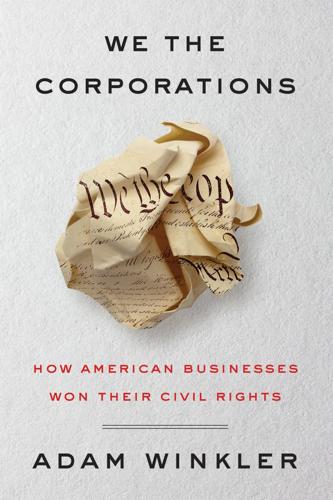
We the Corporations: How American Businesses Won Their Civil Rights
by
Adam Winkler
Published 27 Feb 2018
With a powerful, almost musical voice, Conkling peppered his speeches with precise quotations of Shakespeare, Edmund Burke, and the Bible, all from memory. Conkling, it was said, much like Webster, did not merely persuade juries, “he overpowered them and made his will theirs.” As a young lawyer, Conkling once won a startling $18,000 verdict against one of Cornelius Vanderbilt’s railroads; when the losing lawyer suggested an appeal, Vanderbilt scolded, “Pay it! If Conkling tries this case again, he may get fifty thousand!”10 For most of his adult life, Conkling employed his oratorical skills on behalf of the Republican Party while serving in Congress, first as a congressman from Utica, New York, and then as a senator.
…
Called one of “the great lawyers of the city,” Nicoll was ranked by contemporaries alongside Clarence Darrow, the legendary defender of unpopular causes, as masters of the courtroom. Nicoll came from one of the oldest families in New York—Sir Richard Nicoll had arrived in the New World in 1664—and the esteemed lawyer counted among his clients railroad magnate Cornelius Vanderbilt and financier Thomas Ryan. He was, in other words, not the type of lawyer one would expect to represent a plebeian fellow like Edwin Hale. In fact, Nicoll was only at Hale’s side as a service to another, far more important client: the American Tobacco Company, the ringleader of the powerful Tobacco Trust.1 Hale, the secretary and treasurer of MacAndrews & Forbes Licorice Company, walked into the grand-jury room with trepidation.

Pocket New York City Travel Guide
by
Lonely Planet
Published 27 Sep 2012
More than 80 years on, Chrysler’s ambitious $15-million statement remains one of New York City’s most poignant symbols. (Lexington Ave at 42nd St; lobby 8am-6pm Mon-Fri; S, 4/5/6, 7 to Grand Central-42nd St) 2 Grand Central Terminal Notable Building Offline map Google map Threatened by the debut of rival Penn Station (the majestic original, not the current eyesore), shipping and railroad magnate Cornelius Vanderbilt set to work on transforming his 19th-century Grand Central Depot into a 20th-century showpiece. The fruit of his envy is Grand Central Terminal, New York City’s most breathtaking beaux arts building. More than just a station, Grand Central is an enchanted time machine, its swirl of chandeliers, marble, and historic bars and restaurants a porthole into an era where train travel and romance were not mutually exclusive.
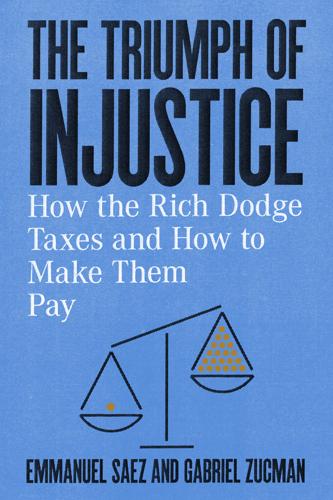
The Triumph of Injustice: How the Rich Dodge Taxes and How to Make Them Pay
by
Emmanuel Saez
and
Gabriel Zucman
Published 14 Oct 2019
The law mandated a public disclosure of income tax payments, and in 1865 the front page of the New York Times listed the income of New York’s moneyed elite: William B. Astor declared an income of $1.3 million (5,200 times the average income of the time, the equivalent of $400 million today); Cornelius Vanderbilt, $576,551 (the equivalent of $170 million today), and so on.8 The Union also borrowed heavily to fund the war and inflation increased a result, but much less than in the South.9 WHEN THE INCOME TAX WAS UNCONSTITUTIONAL After the abolition of slavery in 1865, wealthy industrialists piggybacked on the slaveholders’ rhetoric to fight the income tax created during the Civil war.
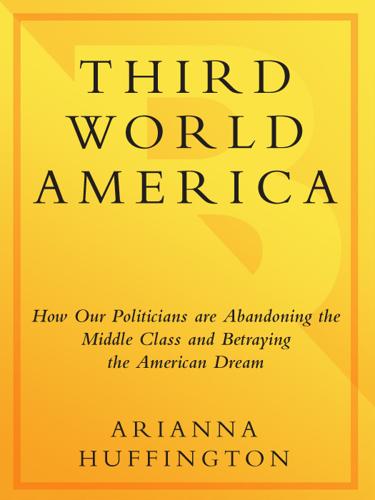
Third World America: How Our Politicians Are Abandoning the Middle Class and Betraying the American Dream
by
Arianna Huffington
Published 7 Sep 2010
The pair has launched The Giving Pledge, a campaign to convince the world’s billionaires to give at least 50 percent of their money away.174 Buffett has promised to give 99 percent of his roughly $46 billion to charity; Gates has made a similar pledge.175 And others are starting to join in, including Michael Bloomberg, who, echoing Carnegie, says: “I am a big believer in giving it all away and have always said that the best financial planning ends with bouncing the check to the undertaker.”176 If The Giving Pledge catches on, Gates and Buffett believe they can generate $600 billion for philanthropic causes.177 At the tail end of the last Gilded Age, the opulently rich—men like Andrew Carnegie, Cornelius Vanderbilt, John D. Rockefeller and Andrew W. Mellon—led a nationwide wave of philanthropy. If Buffett and Gates are successful, as our own Gilded Age nears its end, a second great wave of giving is coming. And it couldn’t be more timely. HOPE 2.0 The 2008 election was all about “hope.” But just hoping that our leaders in Washington will somehow miraculously start doing the right thing—especially when they are locked inside a system with overwhelmingly powerful incentives to do the wrong thing—simply won’t cut it.
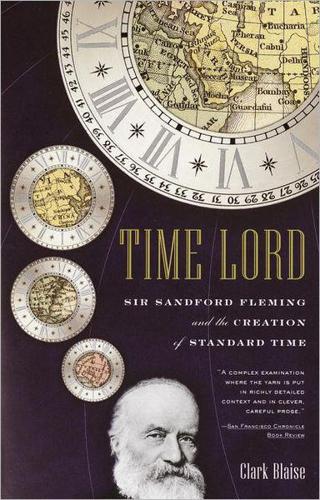
Time Lord: Sir Sandford Fleming and the Creation of Standard Time
by
Clark Blaise
Published 27 Oct 2000
It was a greater undertaking than any one man could master under the conditions imposed by Parliament, especially upon an engineer still involved with the earlier and smaller Intercolonial. He was a civil servant, answerable to elected officials, a chief in name only. Funding came from Parliament. His salary, though generous for the times, was that of a government official—and this in the era of the railroad barons, the Cornelius Vanderbilts and James J. Hills. Canada itself was only nine years old in 1876; the lines of parliamentary authority were still being drawn, and partisan hatreds virtually guaranteed continual chaos. Adding to pressures not of Fleming’s making, Alexander Mackenzie, the Liberal Party leader, had promised the leaders in distant British Columbia a transcontinental Canadian railroad within ten years of confederation—on the threat of their opting out of the agreement and going it alone, or, worse, joining the United States.
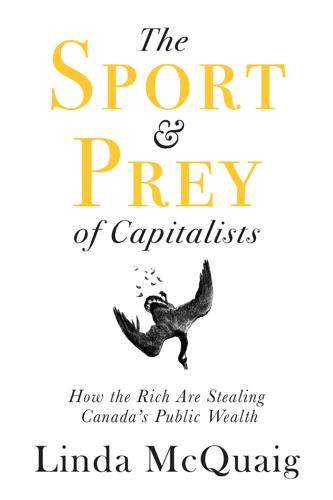
The Sport and Prey of Capitalists
by
Linda McQuaig
Published 30 Aug 2019
Newman and the late Pierre Berton made successful literary careers out of celebrating Canadian private enterprise heroes, often portraying them as more swashbuckling and trail-blazing than they really were. In fact, Canada has never had the dynamic, hyperindividualistic tycoons who strode boldly (for good and for bad) across the U.S. stage — Andrew Carnegie, John D. Rockefeller, Cornelius Vanderbilt, Jay Gould, John Jacob Astor, and Henry Ford. Our elite have displayed little of that free-enterprise entrepreneurial talent and grit. In French Canada, our elite came from repressive clerical and semi-feudal traditions; in Upper Canada (Ontario), they were a pale version of the British aristocracy, with a clique of powerful men known as the Family Compact ruling the colony and siphoning off profits for themselves along the way.

QI: The Third Book of General Ignorance (Qi: Book of General Ignorance)
by
John Lloyd
and
John Mitchinson
Published 28 Sep 2015
It was the first road built solely for the use of motor cars, the first to be made from concrete and the first to use overpasses and bridges to avoid intersections. The world’s first motorway was 45 miles long and ran from Queens in New York City to Lake Ronkonkoma on Long Island. It was privately financed by the racing enthusiast William Kissam Vanderbilt II, the great-grandson of Cornelius Vanderbilt (1794–1877), founding patriarch of one of America’s wealthiest families. Automobile magazine welcomed it with the headline ‘First of the motorways is opened – an epoch in motor-driven land transportation’. It wasn’t cheap to use – the standard toll was $2 (about $45 today) – and by the mid-1930s it had closed.

The New Class Conflict
by
Joel Kotkin
Published 31 Aug 2014
By the dawn of the twentieth century, noted historians Charles and Mary Beard, masters of great urban wealth formed a “young plutocracy” with riches beyond the dreams of Midas, garnered from mines of the West, the factories of the Midwest, and the forests of the Pacific, and spent it in “the most powerful center of accumulation, New York City.”7 In the nineteenth century, for example, vast wealth gained from cotton, silver, and other commodities helped create the foundation for such investment banking firms as Goldman Sachs, Oppenheimer, and Lehman Brothers, and for such publishing industry giants as the Hearst empire. Many of these people also went into politics, often entering the “millionaire’s club” of the U.S. Senate. Their wealth, in the era before income taxes, was immense; by the 1880s the revenues of Cornelius Vanderbilt’s railroad empire were greater than those of the federal government.8 Like John D. Rockefeller (Standard Oil), J. P. Morgan, and railway mogul Edward Harriman, the tech Oligarchs have taken advantage of the shift in the economic paradigm to garner enormous wealth and power. The information economy’s emergence is allowing them to establish sway over vast sections of the economy, including such areas as advertising, media, entertainment, and, increasingly, the political system as well.

How to Fix the Future: Staying Human in the Digital Age
by
Andrew Keen
Published 1 Mar 2018
Silicon Valley’s Dragon Slayer If Margrethe Vestager is the reincarnated Teddy Roosevelt, then in Google she is confronted, in many ways, with the reinvention of the late nineteenth century’s anti-innovation economy. It’s a return to the industrial monopolies of John D. Rockefeller’s Standard Oil, Cornelius Vanderbilt’s New York Central Railroad, and J. P. Morgan’s U.S. Steel—those “big things” that, Louis Brandeis suggested, “may be very bad and mean.” That’s why antitrust law is so important. Although it can be a rather dry, even arcane subject for nonlawyers, its importance for underwriting both innovation and fairness in our networked future can’t be overstated.

The House of Morgan: An American Banking Dynasty and the Rise of Modern Finance
by
Ron Chernow
Published 1 Jan 1990
At 13 Princes Gate, the London townhouse he inherited from Junius, he hung the painting in the cherished spot over the mantelpiece. In 1879, Pierpont began to emerge from his father’s shadow and take charge of major deals. He was picked to market the largest block of stock ever publicly offered—250,000 shares of New York Central. It was a landmark event for the Vanderbilts, who owned the railroad. Commodore Cornelius Vanderbilt had died two years before, at eighty-three, leaving a fortune of about $100 million. Though he rejected champagne as too expensive in his last days, he probably ranked as America’s richest man. Crude and tobacco chewing, a white-haired, red-cheeked rogue, he chased pretty maids to the end.
…
When they opted for that neighborhood, the “quality” were already moving uptown. Along Fifth Avenue, exhibitionist moguls built gaudy palaces, their styles plundered from European chateaus. From Fifty-first to Fifty-second streets, in elephantine splendor, rose William Henry Vanderbilt’s mansion. Between Fifty-seventh and Fifty-eighth streets, Cornelius Vanderbilt II, son of William Henry, built another palace on the present site of Bergdorf Goodman. Matthew Josephson has offered an unforgettable portrait of Gilded Age vulgarity: At Delmonico’s the Silver, Gold and Diamond dinners of the socially prominent succeeded each other unfailingly. At one, each lady present, opening her napkin, found a gold bracelet with the monogram of the host.
…
But it didn’t help the House of Morgan, for it reinforced the old stereotype of the firm’s being in league with the British crown. At a garden party at the British embassy in Washington, the king and queen sat up on the porch in remote splendor with several private citizens—Jack Morgan, John D. Rockefeller, Jr., and Mrs. Cornelius Vanderbilt. Only two New Dealers, James Farley and Cordell Hull, were allowed to join them. Stranded down on the lawn with other commoners, the saturnine Harold Ickes enviously watched Morgan and the other economic royalists up on the porch and felt demeaned. He wasn’t mollified when the king and queen descended to mingle with the “common herd.”33 In late August 1939, Jack Morgan and King George VI were shooting together at Balmoral in Scotland, complaining about the bird shortage, when Europe suddenly mobilized for war.
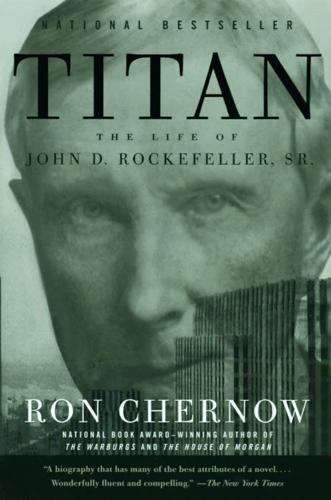
Titan: The Life of John D. Rockefeller, Sr.
by
Ron Chernow
Published 1 Jan 1997
The old New York aristocracy, huddled around Washington Square and Gramercy Park, shuddered at the pretentious uptown mansions, which paid tribute to postwar fortunes in railroads, steel, and oil. Along Fifth Avenue near the Rockefeller home, the palaces of the rich—notably the fantastic, turreted confections of William K. Vanderbilt at Fifty-first Street and Cornelius Vanderbilt II at Fifty-eighth Street—stretched uptown in gaudy profusion. With Standard Oil moving its headquarters to New York, the neighborhood was becoming a colony of company directors. At one point in this corporate relocation, twenty-eight Standard Oil executives arrived in a single Pullman car from Cleveland and were taken straight to the Saint James Hotel, where William presided over their first breakfast and John their first dinner.
…
When he agreed to ship the furniture, Bessie imagined he had merely changed his mind to please them.49 When it came time for Junior to dispense with private tutors, he went to the New York School of Languages, followed by a school run by C. N. Douglass, and then the tony Cutler School, whose student body included Albert Milbank, Cornelius N. Bliss, and Cornelius Vanderbilt. Junior trudged the pavement to school each morning while he watched poorer classmates rolling by in fine carriages. Though he belittled his own intelligence, this bright, dutiful boy always scored high grades and led a purposeful life that allowed small time for leisure. When not doing homework, he often practiced his violin, and for eight years he took lessons from Richard Arnold, first violinist of the Philharmonic Orchestra.
…
To an extent that some observers found unhealthy, Oliver doted on his lovely, gregarious sister Flora; when he arranged for her to meet Whitney in 1868, he already “knew that if they met, they would fall in love with each other,” he later admitted. 25 When they married a year later, he became their self-appointed benefactor, buying them a five-story Park Avenue brownstone. This was a mere curtain-raiser to his next gift, a showy $700,000 mansion, glistening with gorgeous paintings and Gobelin tapestries, at the corner of Fifth Avenue and Fifty-seventh Street, across from Cornelius Vanderbilt’s residence. One historian said that Oliver insouciantly “presented it to the Whitneys as one might present a poodle,” and with his sublime self-assurance, this lifelong bachelor moved into one of its sumptuous second-floor apartments.26 William C. Whitney was a dashing man with a matchless talent for attracting monied patrons.
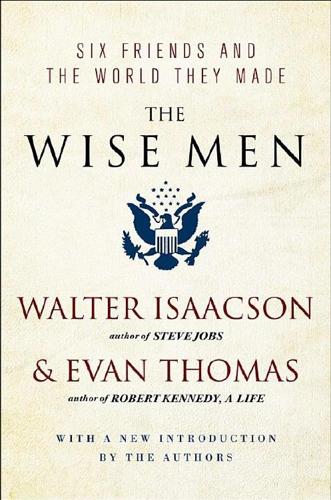
The Wise Men: Six Friends and the World They Made
by
Walter Isaacson
and
Evan Thomas
Published 28 Feb 2012
“I have become convinced that there is something else in life for me besides school and books,” he told his disapproving father. “I am going to work.” A compact dynamo, he plunged with relish into the cutthroat market of the Robber Baron era. With three thousand dollars borrowed from a wealthy uncle, he bought himself a seat on the Stock Exchange and captured Commodore Cornelius Vanderbilt and Jay Gould as his mentors and clients. By twenty-six, E. H. had parlayed his own first fortune of $150,000 by selling short in coal-mine stocks when he guessed that a speculator’s attempt to corner the market would fail. Marriage to Mary Williamson Averell in 1879 brought Harriman his first link to railroads.
…
But both were quiet and inward in different ways, and they soon drifted apart. Although he was not the sort to expend much energy chasing other women, Harriman gained the reputation as a man with a wandering eye. He and Kitty were divorced in 1929, and the following year he married Marie Norton Whitney, herself recently divorced from Cornelius Vanderbilt (“Sonny”) Whitney. Whereas Kitty had been shy and retiring, Marie was witty and outspoken, brash to the point of abrasiveness. “Oh, come off it, Ave!” she would snort in her husky voice whenever he became too ponderous. They shared an interest in Impressionist and Post-impressionist art, and on their honeymoon in Europe collected dozens of masterpieces by Van Gogh, Degas, Cézanne, Picasso, and Renoir.
…
P., 116, 134 War Department, U.S., 190 Heavenly Twins of, 18, 30, 192–93, 236–37, 337, 734–35 Lovett in, 192–96, 201, 202–9, 291–92, 309, 315 Lovett’s reports to, 184–85 McCloy in, 192–202, 235–38, 244 Wardwell, Allen, 214 War Labor Board, Acheson on, 89 Warnke, Paul, 713, 738 Warsaw uprising (1944), 230–32 Washington, George, 179, 447 Washington Post, 193, 361, 440, 449, 516–17, 681, 715, 736 Webb, Jim, 530–31, 542 Wedemeyer, Albert, 458 Westmoreland, William C., 680, 686–87, 689, 694, 696, 701 Wheeler, Earle, 678, 701–2 Wherry, Kenneth, 475–76, 492, 494, 530–31, 545–46 White, Lincoln, 412 White, Theodore H., 442–43, 585 White, William Allen, 185 Whitney, Cornelius Vanderbilt, 106 Whitney, Richard, 131 Wilcox, Francis, 450, 467 Willett, Edward, 383 William II, Emperor of Germany, 95 Willkie, Wendell, 186, 188 Willoughby, Charles, 536–37 Wilson, Charles E., 570 Wilson, Earl, 269 Wilson, Hugh, 142 Wilson, Woodrow, 28, 80, 84, 98, 104, 125, 154, 156 Winchell, Walter, 417–18, 469 Winston-Salem Journal and Sentinel, 696 Wise Men, 20, 28, 30, 122 Johnson and, 644–46, 650–53, 676–81, 696, 698–703 Wisner, Frank, 448, 454 Wister, Owen, 95 Witness to History (Bohlen and Phelps), 720–21 Woodin, William, 134 Wooley, Knight, 110–11 Woollcott, Alexander, 106–7 World Bank, 23, 68, 426, 428–29 Wrubel, Isaac, 52 Wyman, David, 201 X-Article, 383–85, 421–23 Yale Review, 154 Yale Unit, Lovett as pilot in, 90–93, 205 Yale University, 20–22, 80–87, 90, 93, 109 Yalta Conference (1945), 19, 245–47, 291 Yalu River, 535–36, 539–40, 548 Yergin, Daniel, 146, 416, 460 Yost, Charles, 430 Yugoslavia, 666–67 Greek insurgents supported by, 401–2 U.S. planes downed by, 372 Zhukov, Georgi, 305, 317–18 Zinsser, Frederick and Emma Scharman, 122 Zorin, Valerian A., 630, 710 ENDNOTES * The Bohlens were descendants of John Bohlen, who migrated from Germany to Philadelphia with his brother Henry in 1790.

The Battery: How Portable Power Sparked a Technological Revolution
by
Henry Schlesinger
Published 16 Mar 2010
If, however, any householder should desire to keep the electric girl constantly burning and to employ another servant to answer the bell, there can be no doubt that the electric girl, posing in a picturesque attitude, will add much to the decoration of the house. The Electric Girl Lighting Company was not the only one taking advantage of battery-powered lights. The innovative dancer Loie Fuller incorporated electric lights into her choreography, wiring her dancers with bulbs and batteries to perform on a darkened stage. Mrs. Cornelius Vanderbilt, the railroad mogul’s second wife and a grand dame of high society, was known to commission gowns and dresses with electric lights with which to stage tableaus—posed still lifes—to entertain dinner guests. For those of more modest means there was still access to electricity or at least the promise of battery-powered electric miracles for everyday use.
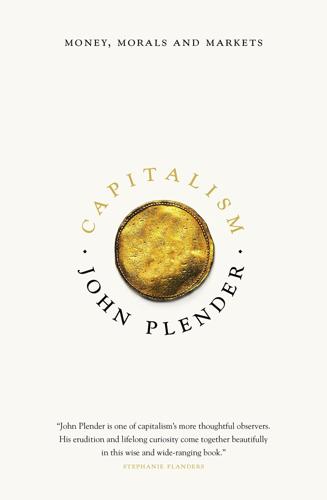
Capitalism: Money, Morals and Markets
by
John Plender
Published 27 Jul 2015
(I have a particular interest, having been a member of the steering group of the British company law review that provided a blueprint for the latest update in the UK: the Companies Act 2006.) While Britain was the pioneer of the company as the dominant organisational form for economic activity, similar corporate development soon followed in continental Europe, and also in the US, which spawned the so-called robber barons – the likes of Jay Gould and Cornelius Vanderbilt in rail, Andrew Carnegie and Henry Clay Frick in steel, John D. Rockefeller in oil and John Pierpont Morgan in banking. As well as indulging in various forms of business malpractice – Henry Frick famously employed armed Pinkerton detectives to break a strike, leaving many workers dead – the robber barons were accused of being monopolists.

The Upside of Irrationality: The Unexpected Benefits of Defying Logic at Work and at Home
by
Dan Ariely
Published 31 May 2010
When they are ousted from their positions as CEOs or presidents, they make revenge their life’s mission. Sometimes they succeed in either regaining their former position or creating a new and successful competitor to their former company. Near the end of the nineteenth century, for example, Cornelius Vanderbilt owned a steamship company called Accessory Transit Company. Everything was going well for him until he decided to vacation in Europe on his yacht. When he returned from his trip, he found that the two associates he had left in charge had sold his interest in the company to themselves. “Gentlemen, you have undertaken to cheat me.
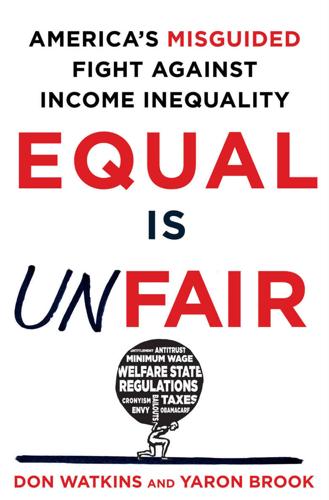
Equal Is Unfair: America's Misguided Fight Against Income Inequality
by
Don Watkins
and
Yaron Brook
Published 28 Mar 2016
Privilege The first steam ship to run through the New York harbor was launched by Robert Fulton in 1807. Fulton went on to secure a guarantee from the New York legislature that no one else would have the liberty to run steamboats through New York waters for thirty years. But ten years later, Fulton’s monopoly was challenged by twenty-three-year-old Cornelius Vanderbilt. Working for New Jersey steamboat man Thomas Gibbons, Vanderbilt began running passengers from Elizabeth, New Jersey, to New York City, his ship flying a flag declaring “New Jersey must be free.” New York authorities tried to capture Vanderbilt, but he dodged their efforts for sixty days, to the widespread support of the passengers benefiting from Vanderbilt’s lower fares.
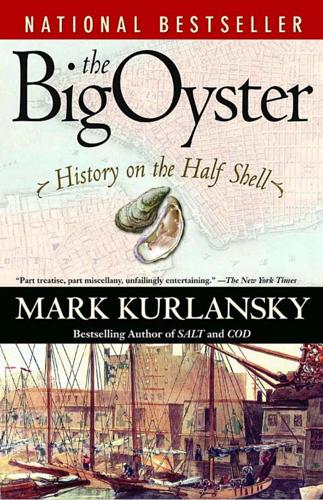
The Big Oyster
by
Mark Kurlansky
Published 20 Dec 2006
They were located throughout the city, as commonplace as hotdog stands today—street carts or dilapidated little shacks with a window through which the M a k i n g Yo u r O w n B e d • 195 Nicolino Calyo’s 1840 watercolor of a New York City oyster stand. c ol l e c t i on of t h e n e w - yor k h i s t or i c a l s o c i e t y oysters were passed. They were particularly common along the East River. Oysters were a penny each and a stew was ten cents. There, longshoremen, cartmen, sailors, and fishermen were the regular clientele. But the oyster stands at the markets were thought to be particularly good. Cornelius Vanderbilt, a native Staten Islander who accrued a fortune from maritime transportation, got his start shipping Staten Island oysters to the Washington Market. While most of the city was quietly sleeping, business at the Washington Market would actually pick up after midnight and reached its 1 9 6 • T h e B i g O y s te r height just before the first purple-and-orange light broke over the East River and the rest of New York started to wake up.

The Coming of Neo-Feudalism: A Warning to the Global Middle Class
by
Joel Kotkin
Published 11 May 2020
Americans, long enamored of the entrepreneurial spirit and technological progress, have been slow to see the tech oligarchy as a threat.38 Leftist historians, alert to the dangers of aristocracy, have tended to focus their ire on financial companies that may be large and powerful but aren’t nearly as wealthy or as influential in shaping the economy as the tech sector, which seeks to capture virtually every other industry, including finance.39 At the Occupy Wall Street protests in 2011, anticapitalist demonstrators held moments of silence and prayer for the memory of Steve Jobs, a particularly aggressive capitalist.40 Some people still see Bill Gates, a clear monopolist, as one of the “meritorious entrepreneurs,” notes Thomas Piketty.41 One progressive writer, David Callahan, portrays the tech oligarchs, along with their allies in the financial sector, as a kind of “benign plutocracy” in contrast to those who built their fortunes on resource extraction, manufacturing, and material consumption.42 Yet America’s tech titans have attained oligopolistic sway over markets comparable to that of moguls like John Rockefeller, Andrew Carnegie, or Cornelius Vanderbilt.43 They may wear baseball caps rather than top hats, but their economic and cultural power is vast, and likely to become far more so. CHAPTER 5 The Belief System of the New Oligarchy In important ways, the tech moguls are quite different from both the industrialists of the late nineteenth century and the managerial elite of the twentieth.
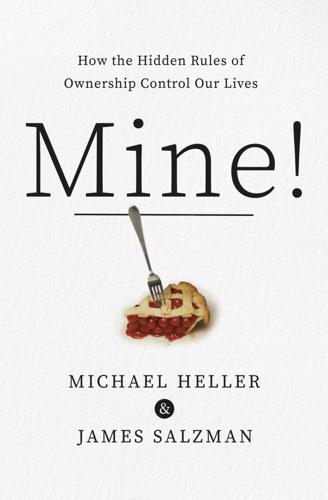
Mine!: How the Hidden Rules of Ownership Control Our Lives
by
Michael A. Heller
and
James Salzman
Published 2 Mar 2021
Passing vast wealth from generation to generation has long been denounced in America as a feudal and aristocratic affront to the country’s civic ethos. Nevertheless, by the end of the nineteenth century, America had drifted far from a country of yeoman farmers. It increasingly resembled the aristocracy and landed estates of old England. The Gilded Age—lorded over by John Rockefeller, Cornelius Vanderbilt, J. P. Morgan, Andrew Carnegie, and other robber barons—concentrated wealth to an extent that the country had never before seen and that the Founders had labored to prevent. Fears over the political power wielded by this small group of super-wealthy sparked a backlash. Teddy Roosevelt, making full use of his bully pulpit, called for both a progressive income tax and an inheritance tax.
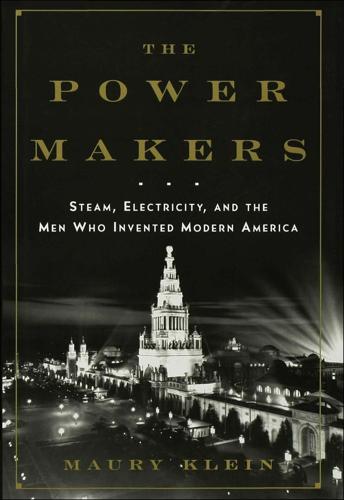
The Power Makers
by
Maury Klein
Published 26 May 2008
A year later he astounded the public with another invention, which he called the “teleautomaton,” based on wireless motors he had displayed in 1892. It took the form of a boat four feet long and three feet high, exhibited for a special audience of potential investors that included Westinghouse, Morgan, and Cornelius Vanderbilt. Using several transmitters, Tesla started, stopped, and steered the boat by remote control; he could even turn its lights on and off. From this remarkable model emerged the dawn of radio and remote control, but the investors did not bite. Neither could he interest the government in his vision of a wireless torpedo delivered by a crewless boat even though the nation was at war with Spain at the time.36 In 1898 Tesla moved into the Waldorf-Astoria Hotel, the social center of the moneyed elite.
…
Maury Klein tells a fascinating, heroic tale peopled by such giants as Thomas Edison, George Westinghouse, and J. P. Morgan, whose partnerships, subterranean deals, and marketplace battles redefined not just American commerce but the American landscape as well.” —Edward J. Renehan Jr., author of Commodore: The Life of Cornelius Vanderbilt Copyright © 2008 by Maury Klein All rights reserved. No part of this book may be used or reproduced in any manner whatsoever without written permission from the publisher except in the case of brief quotations embodied in critical articles or reviews. For information address Bloomsbury Press, 175 Fifth Avenue, New York, NY 10010.
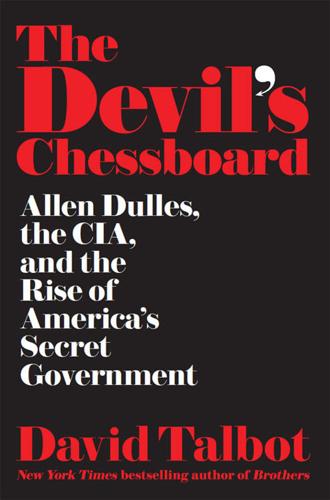
The Devil's Chessboard: Allen Dulles, the CIA, and the Rise of America's Secret Government
by
David Talbot
Published 5 Sep 2016
The class hatred against Roosevelt even resulted in at least two abortive coups against his presidency. In 1934, a group of Wall Street plotters—financed by wealthy Roosevelt enemies (and Dulles clients) like the Du Ponts—tried to recruit Marine war hero General Smedley Butler to lead an armed march on Washington. In 1940, newspaperman and socialite Cornelius Vanderbilt Jr.—one of FDR’s few friends in the New York club set—tipped off Eleanor Roosevelt to another anti-Roosevelt plot he had heard being hatched in his Fifth Avenue circles, involving tycoons as well as army officers. The First Lady was among those who wondered about the wisdom of allowing someone like Allen Dulles to set up spy operations in war-torn Europe, where he was certain to open lines of communication to Nazi interests.
…
Douglas, Go East Young Man: The Early Years (New York: Random House, 1974), 259. 24“I turned and gave him a quarter tip”: Ibid., 146. 24Roosevelt grew so fond of Douglas: Doris Kearns Goodwin, No Ordinary Time: Franklin and Eleanor Roosevelt—The Home Front in World War II (New York: Touchstone, 1995), 526. 24“You stood me on my head”: Ibid., 257. 25resulted in at least two abortive coups: See David Talbot, Devil Dog: The Amazing True Story of the Man Who Saved America (New York: Simon & Schuster, 2010). 25Vanderbilt . . . tipped off Eleanor Roosevelt: Cornelius Vanderbilt Jr., Man of the World: My Life on Five Continents (New York: Crown Publishers, 1959), 264. 25“He was a dangle”: Author interview with John Loftus. 26The secretive BIS became a crucial financial partner: See LeBor, Tower of Basel, 78–85; and first chapter of Charles Higham, Trading with the Enemy: The Nazi-American Money Plot, 1933–1949 (New York: Authors Guild Backprint Edition, 2007). 26“Somebody grabbed me from behind”: McKittrick interview. 27“an American [bank] president doing business with the Germans”: LeBor, Tower of Basel, 122. 27the “nasty crew in the Treasury”: McKittrick interview. 27Project Safehaven that sought to track down: Martin Lorenz-Meyer, Safehaven: The Allied Pursuit of Nazi Assets (Columbia: University of Missouri Press, 2007), 178; and Donald P.
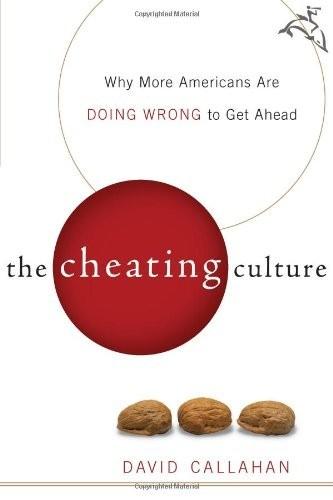
The Cheating Culture: Why More Americans Are Doing Wrong to Get Ahead
by
David Callahan
Published 1 Jan 2004
As the great sociologist Robert Merton once said, putting his finger on an ugly paradox: "A cardinal American virtue, 'ambition,' promotes a cardinal American vice, 'deviant behavior.'"3 During the Gilded Age in the late 1800s, America's new industrialists waged vicious battles as they built, and fought over, the engines of economic growth: railroads, steel mills, oil refineries, coal mines, and banks. These titans of industry cheated each other, they cheated and destroyed their smaller competitors, and they cheated consumers. The tycoon Cornelius Vanderbilt summed up the ethos of the day in a warning delivered to a business adversary who had swindled him: "You have undertaken to cheat me. I will not sue you, for law takes too long. I will ruin you."4 The political and cultural milieu of the Gilded Age was permissive of the abuses by the new capitalist overclass.
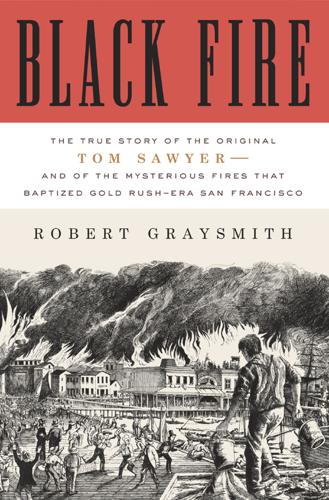
Black Fire: The True Story of the Original Tom Sawyer--And of the Mysterious Fires That Baptized Gold Rush-Era San Francisco
by
Robert Graysmith
Published 30 Oct 2012
Wakeman lifted his huge hand—bells jangled, wheels stopped and then reversed, churning the water to foam as the Independence docked. On October 4, 1851, when the Independence returned to San Francisco for a second time, Sawyer was on hand to sign aboard as a fireman. At 8:00 A.M., R. J. Vanderwater, the San Francisco agent for Cornelius Vanderbilt, lowered the wages of the crew and the stewards. Refusing to sail under diminished pay, the crew carted their sea chests ashore and dumped them at Vanderwater’s feet. An hour later, Wakeman, who also deemed the agent’s step improper, stepped onto the pier, his huge belly preceding him. Glowering with suppressed rage, “an earthquake without the noise,” he had belted a bowie knife and a brace of pistols outside his jacket.
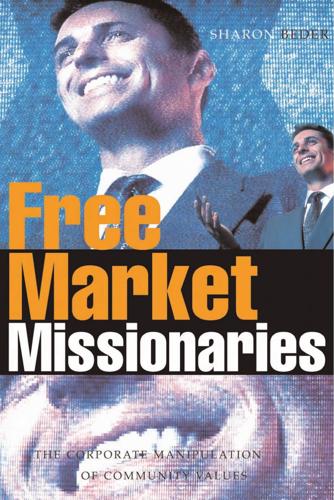
Free Market Missionaries: The Corporate Manipulation of Community Values
by
Sharon Beder
Published 30 Sep 2006
However, the profession and industry of public relations originated in the US in the early 20th century when corporations sought to defend themselves in the face of public hostility and worker unrest. Until this time, American business had taken a relatively contemptuous attitude towards public opinion. Typical of the period was the infamous pronouncement attributed to railroad magnate Cornelius Vanderbilt that ‘the public be damned’.4 Similarly, in 1901 when banker JP Morgan told a reporter that he owed ‘the public nothing’, he demonstrated a commonly held business attitude. However, the growth of democracy and the expansion of the voting franchise threatened business power. In the US, between 1880 and 1920, the voting franchise was extended from about 15 per cent of the adult population to around 50 per cent.5 The defence of propertied interests had been easier when the vote was largely restricted to property owners.
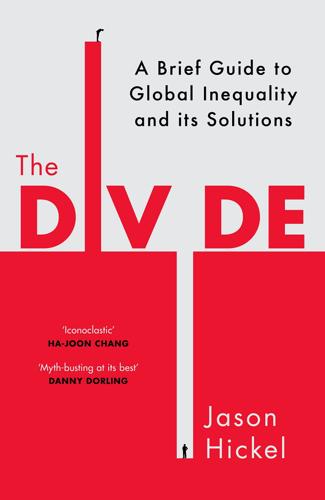
The Divide: A Brief Guide to Global Inequality and Its Solutions
by
Jason Hickel
Published 3 May 2017
Four: From Colonialism to the Coup 1 ‘In 1910, the richest …’ Thomas Piketty, Capital in the 21st Century (Cambridge, MA: Harvard University Press, 2014), p. 349. During this period (between 1870 and 1910), aggregate private wealth was six to seven years of national income in Europe (Piketty, p. 26). In the United States, this era saw the rise of powerful industrialists and financiers – John Rockefeller, Andrew Mellon, Andrew Carnegie, Cornelius Vanderbilt and J. P. Morgan – symbols of social inequality and known by their critics as ‘robber barons’ for the extent to which they made their riches through sometimes brutal monopoly power. 2 ‘The following decade became known …’ The accumulation of income and wealth among the rich was aided by tax cuts in their favour.

Stakeholder Capitalism: A Global Economy That Works for Progress, People and Planet
by
Klaus Schwab
Published 7 Jan 2021
The technological advances in transport, finance, and energy led to the formation of oligopolies and monopolies: companies with the most capital and initial resources could best afford to deploy the latest technology at the greatest scale, offer the best services, and in turn win a higher market share, make the most profit, and outcompete or buy up other companies. In the transportation sector, for example, it led to a dominant position for the railroad companies connecting the Midwest to New York, controlled by Cornelius Vanderbilt, a tycoon also active in shipping. In the energy sector, it allowed the astute John D. Rockefeller to come from almost nothing to build the world's largest oil company, Standard Oil, and later also created the first business trust (Standard Oil today lives on in ExxonMobil, still America's largest oil company).

How I Built This: The Unexpected Paths to Success From the World's Most Inspiring Entrepreneurs
by
Guy Raz
Published 14 Sep 2020
Instead, if Southwest just stuck to what they did best, he believed, if they operated within their means and according to their founding principles, if they stayed in their lane, everything would work out, and major opportunities would present themselves. In short, if they thought small and acted small, the sky would be the limit. This is really where the most valuable lessons and inspiring stories are to be found from the technological and industrial gold rushes that have pockmarked modern business history. They’re not with Cornelius Vanderbilt or Jay Gould or any of the other railroad tycoons from the late nineteenth and early twentieth centuries. They’re not with IBM or Apple or any of the giant software companies that rose to prominence in the 1980s and 1990s. And they’re not with Uber or Salesforce or Twitter or any of the other tech companies born out of the internet boom in the early 2000s, whose headquarters line San Francisco’s Mission Street and define one side of the boundary between where we are going and where we have been.

Stakeholder Capitalism: A Global Economy That Works for Progress, People and Planet
by
Klaus Schwab
and
Peter Vanham
Published 27 Jan 2021
The technological advances in transport, finance, and energy led to the formation of oligopolies and monopolies: companies with the most capital and initial resources could best afford to deploy the latest technology at the greatest scale, offer the best services, and in turn win a higher market share, make the most profit, and outcompete or buy up other companies. In the transportation sector, for example, it led to a dominant position for the railroad companies connecting the Midwest to New York, controlled by Cornelius Vanderbilt, a tycoon also active in shipping. In the energy sector, it allowed the astute John D. Rockefeller to come from almost nothing to build the world's largest oil company, Standard Oil, and later also created the first business trust (Standard Oil today lives on in ExxonMobil, still America's largest oil company).
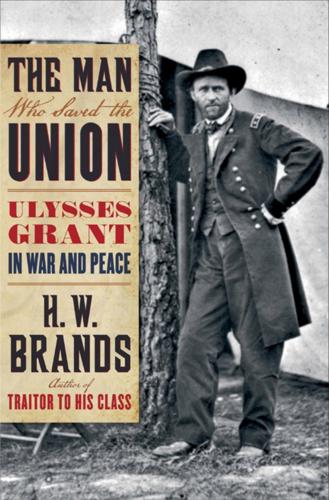
The Man Who Saved the Union: Ulysses Grant in War and Peace
by
H. W. Brands
Published 1 Oct 2012
He probably didn’t realize that his fame—or notoriety—would evolve so quickly. “Mr. Corbin is a very shrewd old gentleman,” Jay Gould told a congressional committee just months later. Gould was one of the most powerful men on Wall Street: a principal in the Erie Railroad, which he and partner James Fisk had wrested from transport titan Cornelius Vanderbilt in a series of raids dubbed the “Erie War,” and a speculator whose slightest gestures caused the markets to gyrate. “I used to meet him occasionally,” Gould said of Corbin. “He owned some real estate in Jersey City, where I was building a horse-railroad through some of our own lands and also through his.”
…
Thompson, Jeff Tift, Nelson Tilden, Samuel, 78.1, 79.1, 79.2, 80.1 Tilghman, Lloyd Tocqueville, Alexis de Tourgée, Albion transcontinental railroad Indian conflict and scandals and Treasury Department, U.S., 27.1, 29.1, 29.2, 35.1, 58.1, 58.2, 58.3, 59.1, 59.2, 69.1, 69.2, 76.1 Treaty of Washington of 1871, 67.1, 80.1 Trenton Gazette Trist, Nicholas Troy Press Trumbull, Lyman, 14.1, 65.1 Twain, Mark, see Clemens, Samuel Tweed, William, 67.1, 76.1, 78.1, 87.1 Tyler, John, 2.1, 2.2, 3.1 Uncle Sam (steamer) “Undeserved Stigma, An” (Grant) Union League Club Union Pacific Railroad, 55.1, 67.1, 84.1, 85.1 United States: Alabama claims of as built by conquest Manifest Destiny slogan of Texas annexed by, 2.1, 2.2 Tocqueville’s characterization of, 4.1, 4.2 United States Mail Company Utah Van Buren, Martin, 1.1, 2.1 Vanderbilt, Cornelius Vanderbilt, William Van Dorn, Earl, 27.1, 28.1, 28.2, 28.3, 30.1 Van Duzer (staff officer) Venable, Charles Vicksburg campaign, prl.1, 29.1, 30.1, 35.1 Battle of Champion Hill in Battle of Jackson in Battle of Raymond in Black River fight in Chickasaw Bayou fight in Confederate surrender in drinking episode in geography of Grant’s assumption of leadership in Grant’s initial plan for, 30.1, 30.2 Holly Springs situation in, 30.1, 30.2 hydraulic engineering projects in incountry campaign in Lincoln and onset of Port Gibson fight in Port Huron surrender and running of Confederate batteries in, 30.1, 30.2, 31.1 siege of Vicksburg in, 32.1, 33.1 Victoria, Queen of England Villepigue, John Virginia, 38.1, 56.1, 65.1 new constitution of secession of, 15.1, 15.2, 16.1 Virginia campaign of 1864, 39.1, 87.1 African American prisoners in casualties in Confederate peace feelers in Confederate shortages and desertions in, 39.1, 47.1 crossing of Rapidan in crossing of the James in Dana on, 39.1, 40.1 doubts and criticisms of, 41.1, 42.1, 42.2 drinking issue and Early’s raid in 1864 election and, 42.1, 42.2, 45.1 Grant-Lincoln meeting in Grant’s strategy in Hampton Roads conference in psychological balance in revised strategy in Shenandoah Valley campaign in siege of Petersburg in, see Petersburg, siege of see also specific battles Virginia Central Railroad Virginia Military Institute Virginius, CSS Wade, Benjamin Waite, Morrison, 70.1, 76.1 Walker, John Wallace, Lew, 22.1, 24.1, 24.2, 24.3, 42.1 Wallace, W.
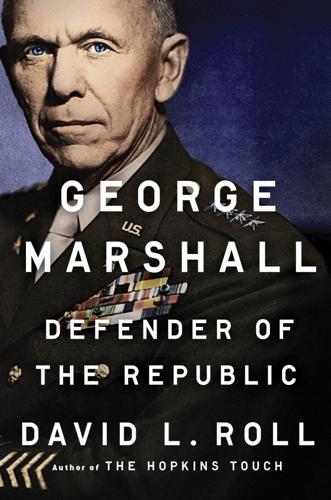
George Marshall: Defender of the Republic
by
David L. Roll
Published 8 Jul 2019
It was an impressive beginning, but it was hardly enough. To sustain a population of more than two million through the winter, it was estimated that an average of about 5,000 tons of food, medicine, coal, gasoline, and other supplies would have to be landed each day. Several top officials in Washington doubted that the airlift would work. Cornelius Vanderbilt Whitney, assistant secretary of the air force, told the NSC on July 17 that “the airlift was doomed to failure.”9 Lovett called it “unsatisfactory” and only a “temporary expedient.”10 Forrestal worried that the airlift would stall in late October when winter weather would cause flights to be canceled.
…
(Wedemeyer), 381 Weizmann, Chaim, 489–90, 493, 500–502, 508, 510 Weizmann, Vera, 502 Welles, Sumner, 142, 176 West Point, 67 Weygand, Maxime, 53 Wherry, Kenneth, 412 White, Theodore, 386 White, Wallace, 447 White, Walter Francis, 148 White Force (1914 Philippines attack simulation), 8–9, 205 Whitney, Cornelius Vanderbilt, 524 Why We Fight (film series), 302 Wiles, Geoff, 310–11, 474 Wilhelm II (Kaiser), 12, 15, 46–47, 50, 54 Wilkins, Fraser, 483–84, 511 William D. Porter (“Willie Dee”), 282 Williams, Aubrey, 109–10 Willkie, Wendell, 142, 207–08 Willoughby, Charles, 556 Wilson, Henry Maitland (“Jumbo”), 308, 337, 340 Wilson, Rose Page.

Nerds on Wall Street: Math, Machines and Wired Markets
by
David J. Leinweber
Published 31 Dec 2008
As always, the best advice is caveat emptor. Never, under any circumstances, should you buy stock recommended by your newfound e-mail friend in Nigeria. Thr ee Hundr ed Years of Stock Market Manipulations 271 Notes 1. Corners and short squeezes, including various railroad manipulations by Cornelius Vanderbilt and others at the turn of the twentieth century, represent another form of manipulation through scarcity as opposed to redirecting people’s beliefs. This chapter focuses on manipulations based on false information of one type or another. 2. The real cost of trading is the difference between the price at the time you decide to trade and the total price at the time you actually trade.
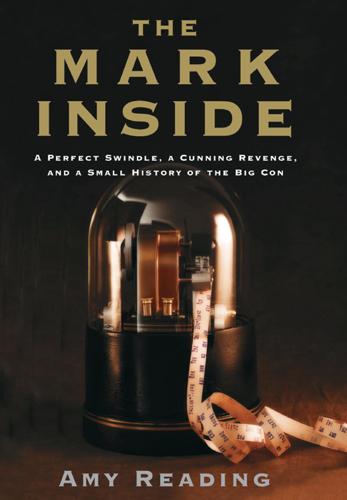
The Mark Inside: A Perfect Swindle, a Cunning Revenge, and a Small History of the Big Con
by
Amy Reading
Published 6 Mar 2012
But most entrepreneurs looking to finance the exploration and extraction of gold or silver formed joint-stock companies, hired promoters, and sent them to New York and Boston to chase down the money where it lived. The promoter would arrive in an eastern city with a prospectus carefully worded to appeal directly to the heart of the second-tier businessman, someone who admired the market manipulations of Jay Gould and Cornelius Vanderbilt in the newspapers but could not himself command enough capital to replicate those feats of enterprise and greed. Western mining, the prospectus would implicitly promise, afforded the proper scope for someone of modest capital and outsize daring. In the 1870s and 1880s, the conservative New York Stock Exchange did not list mining stocks.
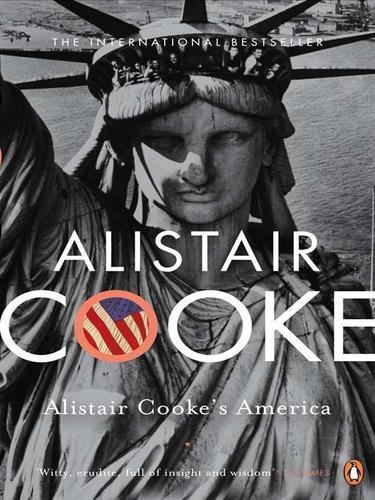
Alistair Cooke's America
by
Alistair Cooke
Published 1 Oct 2008
These first – or second-generation rich built what they always called, by a typical affectation of the day, ‘summer cottages,’ a name that would have been suitable only if they had been flanked by Blenheim or the Taj Mahal. The ‘cottage’ of the Vanderbilts, a massive Renaissance palace, was built by the mentor of the Newport colony, the third generation of a fortune originally assembled by the captain of a ferry boat that plied between New York and New Brunswick. From this humble craft Cornelius Vanderbilt developed a fleet of freighters and then a transatlantic steamship line. In his sixties he went into railroads, and before he died this formidable old codger, who read little and could not write very well, had the satisfaction of founding a university. When he died he left his son $94,000,000, which the son doubled in ten years.

The Theory of the Leisure Class
by
Thorstein Veblen
Published 10 Oct 2007
Published in the American Journal of Sociology between September 1898 and January 1899, this material appeared as separate chapters in the work completed in draft form by 1898 but which had been set aside out of dissatisfaction. By the final decades of the nineteenth century others had begun to question the ethics of ‘plutocrats’ such as John D. Rockefeller, J. P. Morgan, Cornelius Vanderbilt, Jim Fisk, Jay Gould, Andrew Carnegie, Henry Clay Frick, and Collis Huntington. On the heels of the publication in 1873 of The Gilded Age, the satiric novel centred on financial corruption co-authored by Mark Twain and Charles Dudley Warner, ‘muckraking’ exposés of the Big Money men began to be featured in newspapers and magazines, even as President Theodore Roosevelt vigorously moved to regulate the Trusts and curtail the Monopolies.
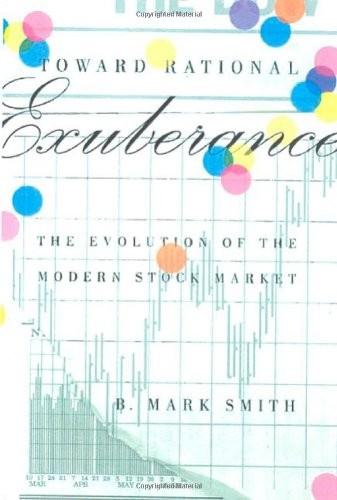
Toward Rational Exuberance: The Evolution of the Modern Stock Market
by
B. Mark Smith
Published 1 Jan 2001
Steel utilities, customer stock purchase plans of valuation based on future earnings growth; Capital Asset Pricing Model for; and crash of 1929; Dividend Discount Model for; interest rates and; of options; security analysis and Value Line Centurion Fund Value Line Investment Survey Vanderbilt, Cornelius Vanderbilt, William K. Vesco, Robert Vickers Associates Volker, Paul Volvo wage and price controls Wall Street Journal Wall $treet Week with Louis Rukeyser (television show) Wallich, Henry Walson & Company War Department, U.S. Washington Post “wash” sales watered stock “waterfall” effect wealth effect Western Electric Wharton School of Business Whelan, Richard J.

Transaction Man: The Rise of the Deal and the Decline of the American Dream
by
Nicholas Lemann
Published 9 Sep 2019
* * * The liberal reaction against big business had been going strong for nearly half a century, having taken a number of different forms, but mainly it had identified its target as a coterie of men who made themselves very rich by building up the kind of business empires that people in the Progressive Era called “trusts”: Cornelius Vanderbilt in railroads, Andrew Carnegie in steel, Thomas Edison in electric power, John D. Rockefeller in oil, J. P. Morgan in finance. Now, in the 1920s, these people were dead or fading. Berle’s legal career on Wall Street, which put him in the middle of a lot of detailed work on stock and bond offerings, proxy votes, and so on, allowed him to come to what became the great insight of his career: the old trusts were being succeeded by corporations that did not have identifiable owners.
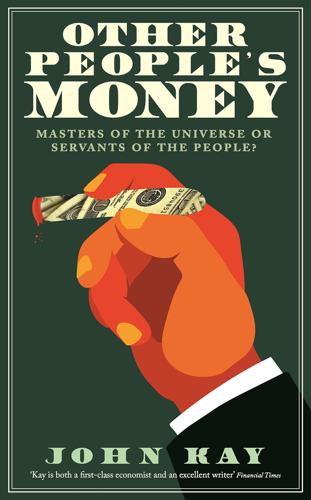
Other People's Money: Masters of the Universe or Servants of the People?
by
John Kay
Published 2 Sep 2015
Theodore Roosevelt, address at the Pilgrim Memorial Monument, Provincetown, MA, 20 August 1907 The late nineteenth century is described as ‘the gilded age’ of American capitalism. The dominant figures of that era – men such as Henry Clay Frick, Jay Gould, J.P. Morgan, John D. Rockefeller and Cornelius Vanderbilt – are often called ‘the robber barons’.28 They were both industrialists and financiers, in varying degrees. They built, or helped build, the railroads, oil supply systems and steel mills that made the USA an industrial powerhouse. But their immense personal wealth was as much the product of financial manipulation as of productive activity.
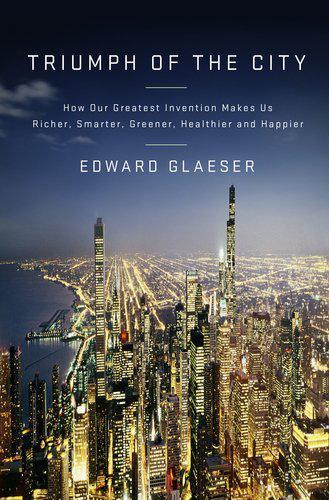
Triumph of the City: How Our Greatest Invention Makes Us Richer, Smarter, Greener, Healthier, and Happier
by
Edward L. Glaeser
Published 1 Jan 2011
Bureau of the Census, Current Population Reports, Income, Poverty, and Health Insurance Coverage in the United States: 2008, September 2009, Table 4: “People and Families in Poverty by Selected Characteristics: 2007 and 2008,” p. 14. Dennis, Jan. “Gas Prices, Global Warming Renewing Interest in High-Speed Rail.” Associated Press, Sept. 7, 2007. Derbyshire, Wyn. Six Tycoons: The Lives of John Jacob Astor, Cornelius Vanderbilt, Andrew Carnegie, John D. Rockefeller, Henry Ford, and Joseph P. Kennedy. London: Spiramus, 2008. Design for London. “Housing for a Compact City,” June 2003, www.london.gov.uk/archive/mayor/auu/docs/housing_compact_city_1.pdf. Diamond, Jared. Guns, Germs and Steel: The Fates of Human Societies, rev. ed.

Framing Class: Media Representations of Wealth and Poverty in America
by
Diana Elizabeth Kendall
Published 27 Jul 2005
Social historian Wecter reported that one well-known journalist told a class of college students, “Only the rich man is interesting.”8 Before the advent of television and other electronic media, newspapers and magazines provided people in the lower 9781442202238.print.indb 23 2/10/11 10:46 AM 24 Chapter 2 classes opportunities to see “magic phantoms,” such as the very wealthy Mrs. Cornelius Vanderbilt, and to gain entry to her residence by way of tabloid reporters who routinely covered her activities and described her lifestyle in intricate detail. For those within the top class, sneaking a peak at the society page afforded an opportunity to keep score of one’s position in relation to other elites.
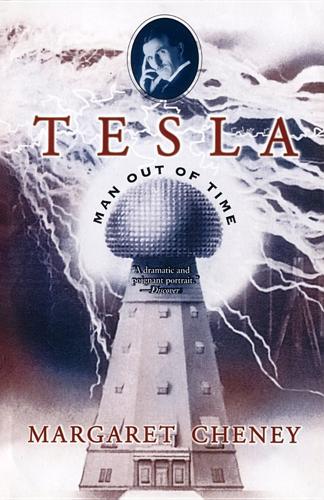
Tesla: Man Out of Time
by
Margaret Cheney
Published 1 Jan 1981
Industrialists therefore would be glad to draw upon the foreign talent pool: Tesla, Michael Pupin, Charles Proteus Steinmetz, Batchelor, and Fritz Lowenstein, among others. Yet it was primarily thanks to Edison’s rough-and-ready ingenuity that the lights were flickering on (and off) in New York City. Only the year before, Mrs. William K. Vanderbilt had staged the epic ball that signaled peace at last between the feuding Astors and the Vanderbilts, and Mrs. Cornelius Vanderbilt had sailed down the grand staircase of the family mansion dressed as “The Electric Light,” an apparition in white satin and diamonds that few at the ball would ever forget. So glamorous was the new energy source that a manufacturer advertised at Christmas urging fathers to “Surprise the whole family with a double socket.”
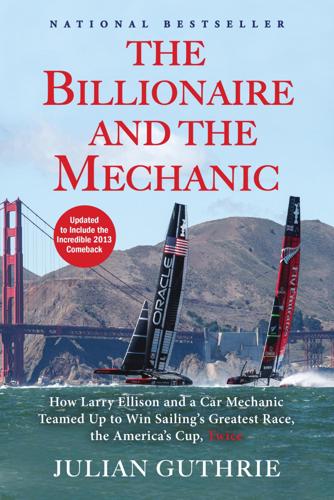
The Billionaire and the Mechanic: How Larry Ellison and a Car Mechanic Teamed Up to Win Sailing's Greatest Race, the Americas Cup, Twice
by
Julian Guthrie
Published 31 Mar 2014
The town once had a strong navy presence, and sailing for fun and commerce had defined the region; a downtown street was named America’s Cup Avenue. Many still called Newport the spiritual home of the Cup, as it had been the location for the high-stakes showdowns for more than half a century, from 1930 to 1983. It was at Marble House, a palatial spread once owned by Mike Vanderbilt, great-grandson of the railroad tycoon Cornelius Vanderbilt, that the trophy had been in Americans’ hands for so long before it was handed over to the Australians. And it was here that, decades earlier, in September 1962, John Kennedy spoke before the start of the America’s Cup about the allure of water and of the Cup, saying, “All of us have in our veins the exact same percentage of salt in our blood that exists in the ocean, and, therefore, we have salt in our blood, in our sweat, in our tears.

The Contrarian: Peter Thiel and Silicon Valley's Pursuit of Power
by
Max Chafkin
Published 14 Sep 2021
“Peter attracts these types,” author Ryan Holiday wrote of D’Souza in his book about Thiel and Gawker, referring to “a fit young man of indiscernible origin” who apparently had read Machiavelli’s Prince at age thirteen and was “fascinated by power.” Holiday, who’d been a guest at Thiel’s parties, enjoyed extensive access to Thiel—and came away seeing Thiel in epic terms. At various points in the book he compared the venture capitalist to General Sherman, the Count of Monte Cristo, and Andrew Carnegie, John D. Rockefeller, and Cornelius Vanderbilt combined. D’Souza had come to that dinner meeting—eight courses, followed by several hours at a hotel bar—with a plan for Thiel to get revenge on Gawker. He proposed that Thiel use him as a cutout. D’Souza would set up a secret shell company that would anonymously fund lawsuits against Gawker, overwhelming it with litigation until it shut down.
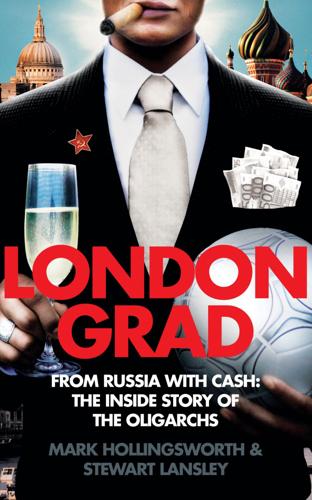
Londongrad: From Russia With Cash; The Inside Story of the Oligarchs
by
Mark Hollingsworth
and
Stewart Lansley
Published 22 Jul 2009
What happened there could be seen as the equivalent of Margaret Thatcher deciding to sell all Britain’s nationalized industries, from British Gas to British Telecom, for a fraction of their real value to a handful of her favourite tycoons who had donated money to the Conservative Party. Some of the beneficiaries liked to defend their activities by comparing themselves to the nineteenth-century industrial and financial tycoons such as John D. Rockefeller, J. P. Morgan, and Cornelius Vanderbilt, who built massive fortunes out of oil, finance, and the railroads in the United States in the late nineteenth and early twentieth centuries. Rockefeller, Morgan, and Vanderbilt were dubbed the ‘robber barons’ for their ruthless and exploitative tactics. Khodorkovsky once described his hero, ‘if he had one’, as John D.

Straphanger
by
Taras Grescoe
Published 8 Sep 2011
As the train pulled away, leaving us alone in the station, an elaborate bronze plaque on the other side of the tracks was revealed. Between seated damsels bearing the dates 1900 and 1904, it paid homage to “This first municipal rapid transit railroad…. Authorized by the state / Constructed by the city,” and bore the names of Cornelius Vanderbilt and August Belmont. We walked up a broad staircase to a domed mezzanine crowned by a glass oculus, once the spot where “ticket choppers” collected fares from commuters. Anyansi directed his flashlight beam up a staircase sealed by heavy metal doors. Had we been able to open them, we would have emerged next to the statue of Nathan Hale outside City Hall.
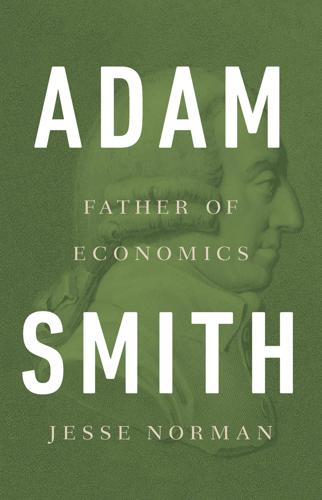
Adam Smith: Father of Economics
by
Jesse Norman
Published 30 Jun 2018
Some go still further and argue that it is morally right for a company to seek out legal subsidies and political favours, on the grounds that its management are under an obligation to maximize profits in the interests of shareholders. Crony capitalism comes in different varieties. Monopoly capitalism flourished in the USA at the end of the nineteenth century. At that time individuals such as Cornelius Vanderbilt and John D. Rockefeller were able to amass enormous wealth by agglomerating new industries such as railroads and oil into ‘trusts’, which exercised monopoly or oligopoly market power within markets, before they were regulated or broken up by Theodore Roosevelt using the Sherman Act. Licence capitalism flourished in India after 1947 under the so-called Licence Raj.
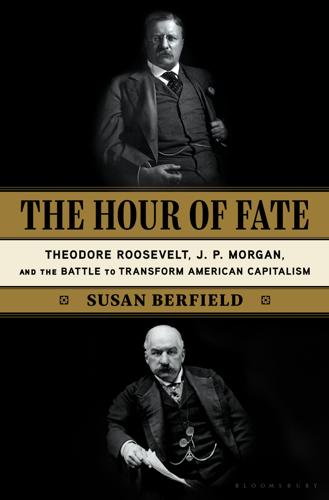
The Hour of Fate
by
Susan Berfield
Among them was William Clark, a senator and copper magnate from Montana, who was constructing a one hundred and twenty-one room home on Fifth Avenue. It included four art galleries, a swimming pool, and an underground rail line to supply heating coal. When Clark came across a bronze foundry whose work he liked, he bought it. Elsewhere on the avenue, descendants of the railroad tycoon Cornelius Vanderbilt lived in a row of mansions; they called one the Petit Château. Mrs. Astor’s new residence featured a ballroom big enough for more than a thousand guests. The figures were staggering. But these industrialists accumulated their wealth in ways most Americans could understand. They dug up something.

A First-Class Catastrophe: The Road to Black Monday, the Worst Day in Wall Street History
by
Diana B. Henriques
Published 18 Sep 2017
Another defense industry giant, United Technologies, stepped into the fray and made its own bid for Martin Marietta, but was unsuccessful. The Allied Corporation rescued Bendix from Martin Marietta’s hostile bid by making a friendly takeover offer, which was accepted. the great railroad wars of the nineteenth century: See John Steele Gordon, The Scarlet Woman of Wall Street: Jay Gould, Jim Fisk, Cornelius Vanderbilt, the Erie Railway Wars, and the Birth of Wall Street (New York: Weidenfeld and Nicolson, 1988). the smaller postwar corporate raids of the late 1950s: See Diana B. Henriques, The White Sharks of Wall Street: Thomas Mellon Evans and the Original Corporate Raiders (New York: Lisa Drew Books/Scribner, 2000).
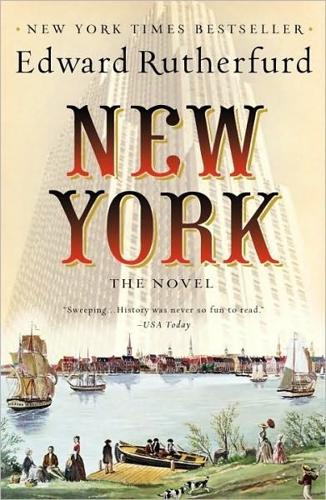
New York
by
Edward Rutherfurd
Published 10 Nov 2009
And if you take my advice you’ll give it up before the commodore comes back. Because when he does, it’s my belief, he’ll skin you alive.” “Won’t be much he can do,” said one of them. “He ain’t so tough,” said the other. “Wrong,” said Master, “on both counts.” There was always something Cornelius Vanderbilt could do. Steam-powered vessels had been in use on the River Hudson for more than thirty years, yet the steamship had taken a surprising time to enter the Atlantic trade. A British rail company had started it off, but it was an enterprising Loyalist family named Cunard, who’d fled to Canada a couple of generations back, who’d first run steamships successfully across the ocean.
…
Put in our own man as president, who’ll give us an exclusive contract to run goods across the place, and leave Vanderbilt out?” “You really think it could be done?” “Yes, and for no great outlay. Do you want in?” “Gentlemen,” said Master with a laugh, “I’m not afraid to topple the government of Nicaragua, but annoying Cornelius Vanderbilt? That frightens me. Please don’t include me in your plans.” He was still chuckling about the two rogues an hour later, when he went uptown to meet his wife. Hetty Master stood at the corner of Fifth Avenue and Fortieth, with the great fortress of the distribution reservoir behind her. Half the world was passing by the place that day, so you might have expected her to be taking some notice of them.
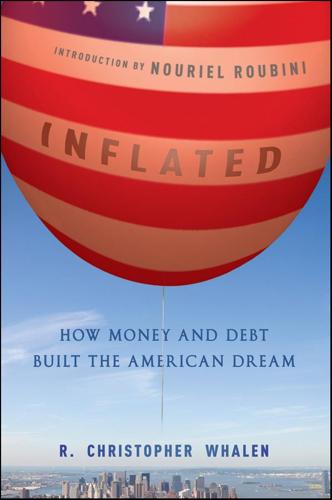
Inflated: How Money and Debt Built the American Dream
by
R. Christopher Whalen
Published 7 Dec 2010
Led by characters such as Daniel Drew, Jim Fisk, and Jay Gould, the expansion of the American railroads and the related speculation on Wall Street as to the financing for these endeavors created huge opportunities for gain and loss by investors, both in the United States and in Europe. Jim Fisk, for example, made his first fortune as a Civil War profiteer and then in fraud. He swindled no less than Commodore Cornelius Vanderbilt to the tune of $8 million and in the process also stole control of the Erie Railroad via a partnership with another Civil War-era profiteer named Jay Gould. Fisk went on to create a vast operation in New York City involving Wall Street speculation, real estate, saloons and opera houses, and many other businesses that served as fronts for his criminal activities.

India's Long Road
by
Vijay Joshi
Published 21 Feb 2017
(Indonesia and Russia are obvious examples.) A close reading of US history also supports this view. The so-called ‘gilded age’ of the United States in the second half of the nineteenth century was a heyday of corruption and crony capitalism. ‘Robber barons’ such as Andrew Carnegie, John D. Rockefeller, Cornelius Vanderbilt, and others, built up huge monopolies in steel, oil, railroads etc., and then used their wealth to manipulate the political system for their own ends. (At one time they ‘owned’ a large majority of US senators.) While the ‘robber barons’ were certainly dynamic entrepreneurs and contributed to the country’s rapid growth, they also initiated an unhealthy trend which, if it had continued, would have made the growth unsustainable.
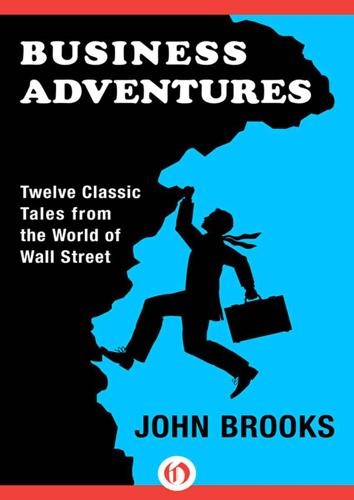
Business Adventures: Twelve Classic Tales From the World of Wall Street
by
John Brooks
Published 6 Jul 2014
In the old days of titanic financial death struggles, when Adam Smith’s ghost still smiled on Wall Street, corners were fairly common and were often extremely sanguinary, with hundreds of innocent bystanders, as well as the embattled principals, getting their financial heads lopped off. The most famous cornerer in history was that celebrated old pirate, Commodore Cornelius Vanderbilt, who engineered no less than three successful corners during the eighteen-sixties. Probably his classic job was in the stock of the Harlem Railway. By dint of secretly buying up all its available shares while simultaneously circulating a series of untruthful rumors of imminent bankruptcy to lure the short sellers in, he achieved an airtight trap.

Turning the Tide
by
Noam Chomsky
Published 14 Sep 2015
In this case as in others, the formidable power and successes of our system of “brainwashing under freedom” are rarely appreciated. 6 Torturing Nicaragua 6.1 Before the Crisis Let us turn now to the US proxy war against Nicaragua, briefly recalling some relevant history. The first major US armed attack against Nicaragua was in 1854, when the US Navy burned down the town of San Juan del Norte to avenge an alleged insult to American officials and the millionaire Cornelius Vanderbilt; the press reviewed the town’s history when it was briefly conquered by contras in April1984, omitting this incident.113 A year later, the US recognized the puppet government established by the American adventurer William Walker, though conflict among US business interests (he was strongly opposed by Vanderbilt) led to withdrawal of support.
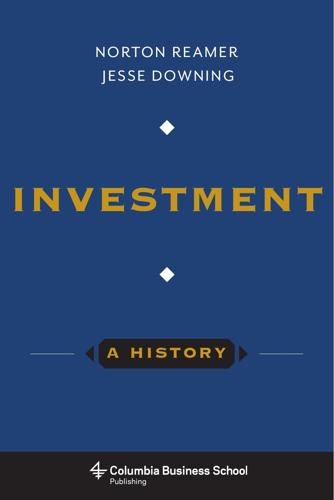
Investment: A History
by
Norton Reamer
and
Jesse Downing
Published 19 Feb 2016
The manipulation drove the stock price down significantly, and Drew profited handsomely. He would take similar actions many times during his tenure on the board, as he admitted proudly in later writings.102 Drew would surely have loved to continue in this capacity of enriching himself at the expense of the company he supposedly served, but Cornelius Vanderbilt, the railroad magnate, set his sights on the Erie. Vanderbilt was far more adept than Drew at operating railroads, having run several others successfully, and he thought he could apply the same principles and add an attractive asset to his growing holdings. To do this, he started purchasing the stock discreetly and slowly gained enough shares to exercise control over the company.

Them And Us: Politics, Greed And Inequality - Why We Need A Fair Society
by
Will Hutton
Published 30 Sep 2010
Courts work only after the injury has already happened, and in any case they were notoriously unreliable: judges’ opinions could be bought. One infamous example in 1869 was the battle for control of the Erie Railroad Company. Financier Jay Gould bought the judgements of Judge William Marcy Tweed, watered down stock without intervention and thus temporarily beat off the predator ambitions of Cornelius Vanderbilt. It was the ethics of the Wild West played out in boardrooms, courts, Wall Street and state legislatures. Increasingly, the only effective response was regulatory. As Wilson said, better that the owner of a derrick on top of a building is obliged to secure it properly in the first place, rather than forcing a passer-by to go through the courts for compensation after it has fallen on her head.
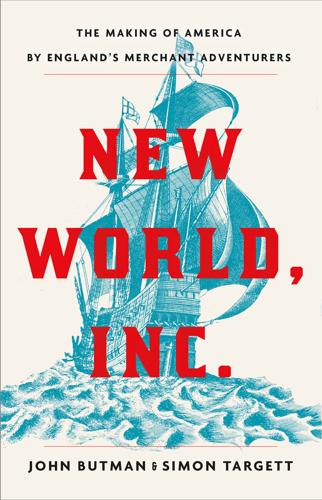
New World, Inc.
by
John Butman
Published 20 Mar 2018
Over the years, even as the moralistic storyline prevailed, other analysts worked to fill in the gaps. In 1939, Norman Gras, the first professor of business history at Harvard Business School, compiled a series of essays on great American companies and their leaders. In his Casebook in American Business History, Graf listed the well-known names one might expect: John Jacob Astor, Cornelius Vanderbilt, and J. P. Morgan, among others. But who did he put first on his list? Thomas Smythe of the Virginia Company. Smythe, Gras noted, was “the first business man to have a profound effect upon America.”29 But it is that other, more renowned, Smith—Captain John, of Pocahontas fame, and the man who named New England—who first and best articulated the driving commercial impulse, the spirit of enterprise, that created America.

The Rise and Fall of the Neoliberal Order: America and the World in the Free Market Era
by
Gary Gerstle
Published 14 Oct 2022
For all the brilliance of their work in generating capital, jobs, and new products, these corporate innovators were also ruthless in their pursuit of economic and then political power. Ida Tarbell, Lincoln Steffens, and fellow “muckraking” journalists were indefatigable in their efforts to expose the unsavory practices of John D. Rockefeller, Cornelius Vanderbilt, and other “robber barons,” laying bare for reading publics these men’s insatiable drives for power and profits, and their single-minded determination to crush all competition. Kitman argued that the titans of the 1990s telecommunications industry had more in common with “Johnny Rockefeller and Andy Carnegie and all the other robber barons of Ida Tarbell’s day” than anyone thought.

Eastern USA
by
Lonely Planet
From April to mid-October, the Breakers is open from 9am to 5pm and the other mansions from 10am to 5pm. Off-season hours vary – call ahead. Breakers (44 Ochre Point Ave) If you have time for only one Newport mansion, make it this extravagant 70-room, 1895 Italian Renaissance mega-palace built for Cornelius Vanderbilt II, patriarch of America’s then-richest family. Rosecliff (548 Bellevue Ave) A 1902 masterpiece of architect Stanford White, Rosecliff resembles the Grand Trianon at Versailles. Its immense ballroom had a starring role in Robert Redford’s The Great Gatsby. Marble House (596 Bellevue Ave) The Palace of Versailles also inspired this 1892 mansion, posh with Louis XIV–style furnishings.
…
Frist Center for the Visual Arts GALLERY (www.fristcenter.org; 919 Broadway; adult/child $10/free; 10am-5:30pm Mon, Tue, Wed & Sat, to 9pm Thu & Fri, 1-5pm Sun) Hosts traveling exhibitions of everything from American folk art to Picasso in the grand, refurbished post office building. MIDTOWN Along West End Ave, starting at 21st Ave, sits prestigious Vanderbilt University, founded in 1883 by railway magnate Cornelius Vanderbilt. The 330-acre campus buzzes with some 12,000 students, and student culture influences much of Midtown’s vibe. Parthenon PARK, GALLERY (www.parthenon.org; 2600 West End Ave; adult/child $6/4; 9am-4:30pm Tue-Sat, plus Sun in summer) Yes, that is indeed a reproduction Athenian parthenon sitting in Centennial Park.
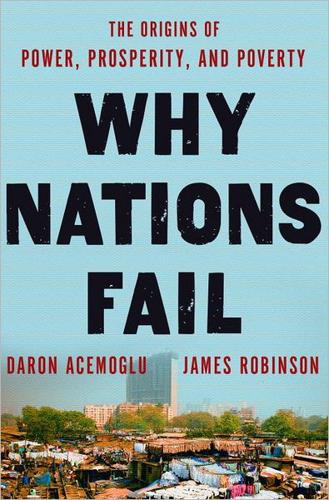
Why Nations Fail: The Origins of Power, Prosperity, and Poverty
by
Daron Acemoglu
and
James Robinson
Published 20 Mar 2012
Emboldened by their economic success, these men and their companies became increasingly unscrupulous. They were called the Robber Barons because of their hard-nosed business practices aimed at consolidating monopolies and preventing any potential competitor from entering the market or doing business on an equal footing. One of the most notorious of these was Cornelius Vanderbilt, who famously remarked, “What do I care about the Law? Hain’t I got the power?” Another was John D. Rockefeller, who started the Standard Oil Company in 1870. He quickly eliminated rivals in Cleveland and attempted to monopolize the transportation and retailing of oil and oil products. By 1882 he had created a massive monopoly—in the language of the day, a trust.

The Technology Trap: Capital, Labor, and Power in the Age of Automation
by
Carl Benedikt Frey
Published 17 Jun 2019
The new industrial America had become a Gilded Age, satirized in the 1873 novel The Gilded Age by Mark Twain and Charles Dudley Warner.59 The industries of the Second Industrial Revolution had not yet emerged, but steel, steam, railroads, and so on had already created unprecedented wealth. America, it seemed, was turning into a nation of the Old World, far removed from its Jeffersonian ideal and corrupted by an emerging industrial elite. Wealthy industrialists and financiers like John D. Rockefeller, Andrew Carnegie, J. P. Morgan, and Cornelius Vanderbilt were frequently labeled robber barons. In 1859, the journalist Henry J. Raymond compared Vanderbilt to a medieval nobleman, writing that he was “like those old German barons who, from their eyries along the Rhine, swooped down on commerce of the noble river and wrung tribute from every passenger that floated by.”60 To be sure, the size of the corporate giants that emerged must have been hard to comprehend.

Wealth, Poverty and Politics
by
Thomas Sowell
Published 31 Aug 2015
Although the amount of wealth required to be on the list of the top 400 wealthiest Americans increased severalfold over time, the 2015 study pointed out that Piketty’s claim is invalid because he “naively assumes that it’s the same people getting richer.”32 As with income statistics, the fate of abstract categories of wealth statistics is not the same as the fate of a given set of flesh-and-blood human beings.b The wealthiest people of today are not simply descendants of the wealthiest families of yesterday. Among the heirs of eight historic fortunes of the nineteenth century— including the enormous fortunes of Cornelius Vanderbilt, John Jacob Astor and Andrew Carnegie— not one made it onto any of the Forbes magazine lists, over the years, of the 400 richest Americans.33 Of the people from families on various other lists of Americans with the largest fortunes in 1918, 1930 and 1957, not one of these families was on the list of the top 30 American fortunes in 2014.34 Implicit in much discussion of “income distribution” statistics or “wealth concentration” statistics is the notion that certain income brackets or wealth brackets receive not only a rising share of total income or wealth in a country, but do so at the expense of lower income brackets or lower wealth brackets.
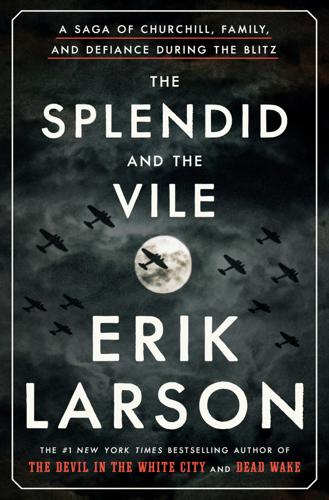
The Splendid and the Vile: A Saga of Churchill, Family, and Defiance During the Blitz
by
Erik Larson
Published 14 Jun 2020
It struck him the same way. By the time of his arrival in London, his marriage had stalled on a plateau of mutual respect and sexual disinterest. His wife, Marie Norton Whitney, was a dozen years younger and ran an art gallery in New York. They had met in 1928, while she was married to a rich New York playboy, Cornelius Vanderbilt Whitney. She and Harriman married in February 1930, after Harriman divorced his first wife. By now, however, both had begun having affairs. Mrs. Harriman was widely thought to be sleeping with Eddy Duchin, a handsome and trim New York bandleader. Duchin, too, was married. Pamela’s own marriage was in lightning decline, and as it devolved her sense of freedom grew.

Owning the Earth: The Transforming History of Land Ownership
by
Andro Linklater
Published 12 Nov 2013
Most of the rest of the industrial world used the word “cartel,” but the practice spread rapidly everywhere during the hard times after 1873, when large-scale manufacturers maximized production in order to service their debts. On razor-thin margins at best and chronic losses at worst, many were effectively owned by their banks and creditors. In order not to lose their investment, their financial backers seized at the opportunity offered by more powerful competitors, notably such industrial titans as Cornelius Vanderbilt, Andrew Carnegie, and John D. Rockefeller, to arrange price agreements, production targets, and trusts and so to be absorbed into existing webs of railroads, steel factories, and oil refineries. No one understood the new order of capitalism more clearly than J. P. Morgan, who used his influence as a banker to set up trusts in railroads, electricity generation, and steel manufacture—his creation, United States Steel, capitalized in 1901 at $1.2 billion, was the first billion-dollar industrial producer in the world, and had two thirds of the market.

Power and Progress: Our Thousand-Year Struggle Over Technology and Prosperity
by
Daron Acemoglu
and
Simon Johnson
Published 15 May 2023
By the early 1890s, Standard Oil controlled around 90 percent of oil-refining facilities and pipelines in the country, and it developed a reputation for predatory pricing, questionable side deals—for example, with railways that barred its competitors from shipping their oil—and the intimidation of rivals and workers. The track record of other dominant firms, such as Andrew Carnegie’s steel company, Cornelius Vanderbilt’s railway conglomerate, DuPont in chemicals, International Harvester in farm machinery, and J.P. Morgan in banking, was similar. There was a clear sense that the institutional fabric of the United States was ill-suited to contain the heft of these companies. They wielded growing political power, both because several US presidents sided with them, and even more because they had great sway over the US Senate, whose members in that era were not directly elected but selected by state legislatures.
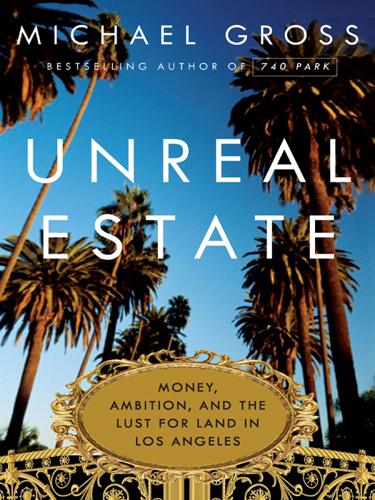
Unreal Estate: Money, Ambition, and the Lust for Land in Los Angeles
by
Michael Gross
Published 1 Nov 2011
While continuing to work for Hughes—even becoming his hatchet man in corporate intrigues in Texas—McCarthy’s own social star continued to rise, particularly after one of his daughters married into one of California’s oldest families, the Amestoys, who’d owned the rancho that became Encino. His stature was reflected in his latest crop of clients, who included the likes of Helen Vanderbilt, aka Mrs. Cornelius Vanderbilt Jr., and Betsey Cushing Roosevelt, aka Mrs. James Roosevelt, wife of the eldest son of the president; both were seeking divorces. The start of the war did nothing to dim the McCarthys’ social life, and parties continued at the Muirfield Road house, where showers heralded the births of grandchildren and two Great Danes, Posey and Tagus (the McCarthys also bred dogs), kept vigil by the fireplace.

Money Changes Everything: How Finance Made Civilization Possible
by
William N. Goetzmann
Published 11 Apr 2016
Julia Ott’s research in the archives of the exchange turned up a vast amount of material about how the idea of a shareholder democracy was managed—not only through speeches and publicity releases, but also through such populist media as financial cartoons that distilled the complexities of financial operations for ordinary people and appealed to aspirations of family security and self-improvement. In contrast to the popular pre-war notion of a Wall Street dominated by insiders like Daniel Drew, Cornelius Vanderbilt, and J. P. Morgan, the New York Stock Exchange in the 1920s emphasized fairness. In the “New Era” of stock market investing, the small American investor was no longer a victim of market manipulation by insiders—the New York Stock Exchange promoted itself as the seal of approval for a square investment deal.
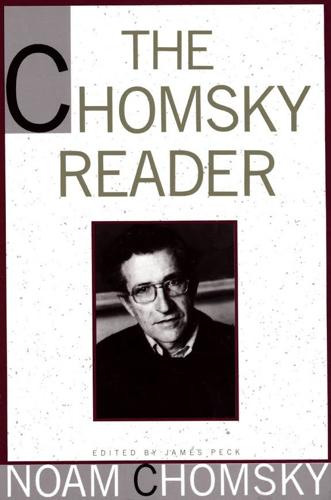
The Chomsky Reader
by
Noam Chomsky
Published 11 Sep 1987
This town was in fact captured for a few days by contras from Costa Rica about a year ago. The press made a big fuss about it, but they failed to note the historical antecedents. Our bombing and destruction of the town was not a capricious act. It was an act of revenge. What had happened in 1854 was that a yacht owned by the American millionaire Cornelius Vanderbilt had sailed into the port and an official had attempted to levy port charges on it. So, in revenge, the navy burned the town down to the ground. Well, that was our first military intervention in Nicaragua, and there have been many since. In the first third of this century, we sent military forces into Cuba, Panama, Mexico, and Honduras and occupied Haiti for nineteen years.
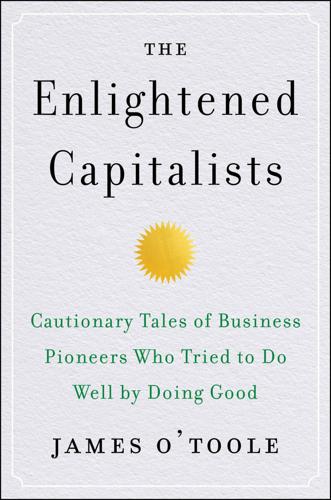
The Enlightened Capitalists
by
James O'Toole
Published 29 Dec 2018
Those paradoxical facts illustrate how difficult it is to assess the careers of unethical business moguls who engage in philanthropic sin-washing. Even more complicated is the assessment of the social contributions made by great inventors and entrepreneurs such as Robert Fulton and John Deere at the turn of the nineteenth century, Thomas Edison and Cornelius Vanderbilt a century later, and Steve Jobs and Bill Gates in our day. They each made significant business and technological contributions that improved the lives of ordinary men and women, yet while they were far from being robber barons—their business sins were relatively peccadilloes—none is particularly remembered for his business virtue or enlightened practices.
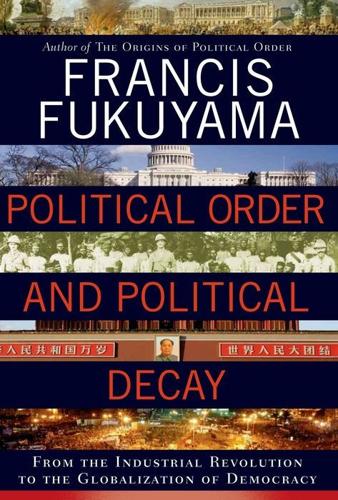
Political Order and Political Decay: From the Industrial Revolution to the Globalization of Democracy
by
Francis Fukuyama
Published 29 Sep 2014
.; Tea Party in; as vetocracy; voting in urbanization; in Greece; see also industrialization; modernization Uribe, Álvaro Uruguay U.S. Department of Agriculture (USDA); see also U.S. Forest Service U.S. Department of the Interior; General Land Office U.S. Forest Service; autonomy lost by values Van Creveld, Martin Vanderbilt, Cornelius Vanderbilt, George Van de Walle, Nicolas Venezuela Venizelos, Eleftherios vetocracy veto players Vienna Vietnam Vietnam War violence; in Latin America; in nation building and political development; in Nigeria; political decay and; see also wars Volcker Commissions voting; African Americans and; in Argentina; in Britain; majority; in Nigeria; property qualifications for; in Prussia; in United States Voting Rights Act Wabash v.
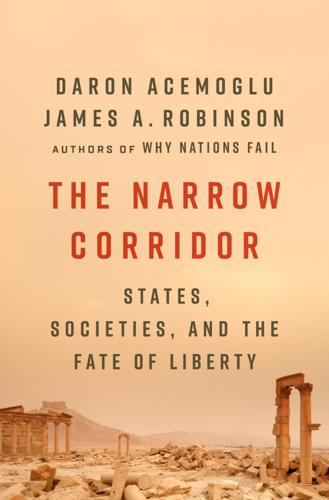
The Narrow Corridor: States, Societies, and the Fate of Liberty
by
Daron Acemoglu
and
James A. Robinson
Published 23 Sep 2019
It was an uneven process, often dominated by and benefiting a handful of companies, especially those who knew how to work the system. As a result, the period Mark Twain described as “the Gilded Age,” from the 1870s to the early twentieth century, witnessed the emergence of huge companies that came to dominate their sectors or even the entire economy. Led by railway tycoons such as Cornelius Vanderbilt and Jay Gould, industrialists including John D. Rockefeller and Andrew Carnegie, and financiers such as John Pierpont Morgan, these “robber barons” not only invested massively and drove economic expansion, but also built unparalleled fortunes and routinely abused their economic and political power.
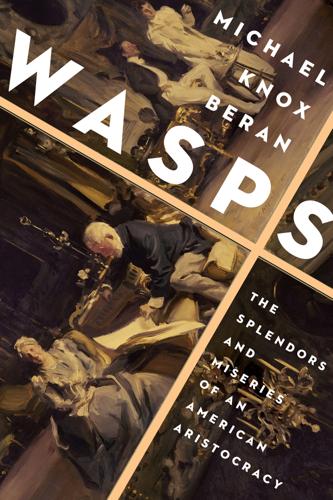
Wasps: The Splendors and Miseries of an American Aristocracy
by
Michael Knox Beran
Published 2 Aug 2021
Buckley, Jr., Gore Vidal, H. P. Lovecraft, Franklin D. and Eleanor Roosevelt, Alice Roosevelt Longworth, Averell Harriman, Dean Acheson, George Plimpton, Jacqueline Kennedy Onassis (who began affecting it while at Miss Porter’s School), Louis Auchincloss, C. Z. Guest, Joseph Alsop, Julia Child, and Cornelius Vanderbilt IV. Except for Child, all of these speakers were raised, educated, or both in the Northeastern United States. This includes just over half who were raised in New York (most of them in New York City) and five who were educated at the private boarding school Groton in Massachusetts: Franklin Roosevelt, Harriman, Acheson, Alsop, and Auchincloss.”

1,000 Places to See in the United States and Canada Before You Die, Updated Ed.
by
Patricia Schultz
Published 13 May 2007
Over time the profusion of these families turned Newport into America’s regatta capital (see p. 88) and guaranteed a steady flow of “lifestyles of the rich and famous” tourism for decades to come. Today about a dozen of the old “cottages” are open to the public, including The Breakers, a 70-room Italian Renaissance–style palazzo built for Cornelius Vanderbilt II. Completely over-the-top in design and proportion, it has 23 bedrooms, a gilded 2,400-square-foot dining room lit by 12-foot chandeliers, and a great hall designed to resemble an open-air Italian courtyard, with a 45-foot sky blue ceiling. Begun in the fall of 1893 and completed in the summer of 1895, its construction took the work of some 2,000 workers and craftsmen, including a platoon of master artisans brought in from Europe.
…
Begun in the fall of 1893 and completed in the summer of 1895, its construction took the work of some 2,000 workers and craftsmen, including a platoon of master artisans brought in from Europe. Though none of the other Newport mansions is as grand as The Breakers, several come close. Marble House, built between 1888 and 1892 for Cornelius Vanderbilt’s younger brother, William, was the precursor of all the other mansions, incorporating $7 million worth of marble into a design inspired by Marie Antoinette’s Petit Trianon at Versailles. Rosecliff is another favorite, a 40-room manse built in 1902 by architect Stanford White after the Grand Trianon.

The Irrational Bundle
by
Dan Ariely
Published 3 Apr 2013
When they are ousted from their positions as CEOs or presidents, they make revenge their life’s mission. Sometimes they succeed in either regaining their former position or creating a new and successful competitor to their former company. Near the end of the nineteenth century, for example, Cornelius Vanderbilt owned a steamship company called Accessory Transit Company. Everything was going well for him until he decided to vacation in Europe on his yacht. When he returned from his trip, he found that the two associates he had left in charge had sold his interest in the company to themselves. “Gentlemen, you have undertaken to cheat me.
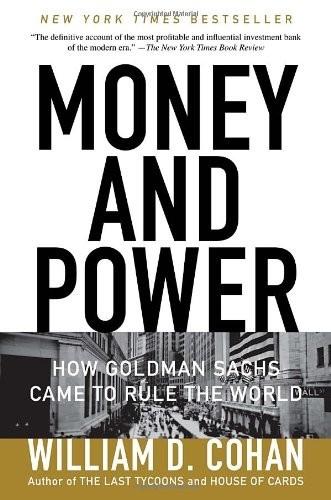
Money and Power: How Goldman Sachs Came to Rule the World
by
William D. Cohan
Published 11 Apr 2011
Normally, Friedman said, he tended to be cautious—although “you’re in a risk business so caution doesn’t mean we’ve got to be in a fetal position,” he said—but this was an obvious moneymaking opportunity. “I looked on it as the best trading opportunity I’d ever seen,” he said. Many traders were making a similar bet, including hedge-fund manager George Soros, and winning fortunes. “That’s the time you break up the furniture and throw it in the fire,” Friedman said, recalling how Cornelius Vanderbilt made his fortune by betting on steamships. “Other times you cut back, cut back, cut back. But things were going well for us and we did very, very well in 1992 and 1993.” That was an understatement. Goldman made $2.7 billion in pretax profits in 1993—by far the firm’s most profitable year ever to that point.
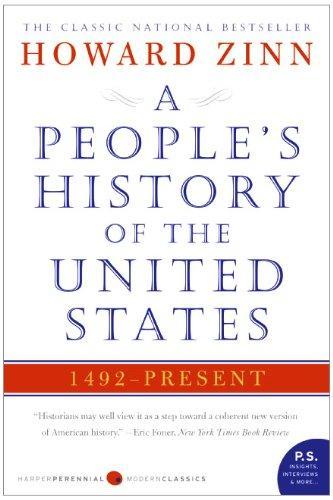
A People's History of the United States
by
Howard Zinn
Published 2 Jan 1977
Rockefeller was a donor to colleges all over the country and helped found the University of Chicago. Huntington, of the Central Pacific, gave money to two Negro colleges, Hampton Institute and Tuskegee Institute. Carnegie gave money to colleges and to libraries. Johns Hopkins was founded by a millionaire merchant, and millionaires Cornelius Vanderbilt, Ezra Cornell, James Duke, and Leland Stanford created universities in their own names. The rich, giving part of their enormous earnings in this way, became known as philanthropists. These educational institutions did not encourage dissent; they trained the middlemen in the American system—the teachers, doctors, lawyers, administrators, engineers, technicians, politicians—those who would be paid to keep the system going, to be loyal buffers against trouble.
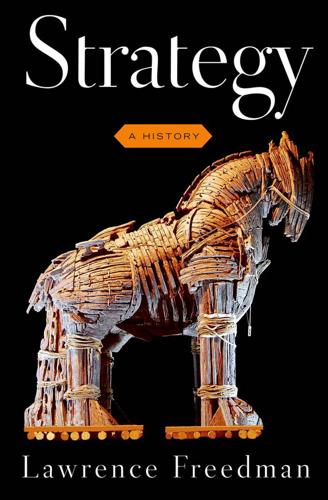
Strategy: A History
by
Lawrence Freedman
Published 31 Oct 2013
Grudges were held by the small independent producers who had been gobbled up, broken, or marginalized during Rockefeller’s inexorable rise. They could appeal to American values and the image of the virtuous little man struggling against concentrated, corrupt power and great wealth. Rockefeller was by no means the only “Robber Baron”—Andrew Carnegie, Cornelius Vanderbilt, and J. P. Morgan were similarly denounced. Nor was Standard Oil the only entity using the trust as a way of controlling markets and rebuffing competition. It was, however, the largest and most notorious. While Rockefeller believed combination to be a better way of guaranteeing efficiency and stability, the practice tended toward monopoly.

USA Travel Guide
by
Lonely, Planet
From April to mid-October, the Breakers is open from 9am to 5pm and the other mansions from 10am to 5pm. Off-season hours vary – call ahead. Breakers (44 Ochre Point Ave) If you have time for only one Newport mansion, make it this extravagant 70-room, 1895 Italian Renaissance mega-palace built for Cornelius Vanderbilt II, patriarch of America’s then-richest family. Rosecliff (548 Bellevue Ave) A 1902 masterpiece of architect Stanford White, Rosecliff resembles the Grand Trianon at Versailles. Its immense ballroom had a starring role in Robert Redford’s The Great Gatsby . Marble House (596 Bellevue Ave) The Palace of Versailles also inspired this 1892 mansion, posh with Louis XIV–style furnishings.
…
Frist Center for the Visual Arts GALLERY Offline map Google map (www.fristcenter.org; 919 Broadway; adult/child $10/free; 10am-5:30pm Mon, Tue, Wed & Sat, to 9pm Thu & Fri, 1-5pm Sun) Hosts traveling exhibitions of everything from American folk art to Picasso in the grand, refurbished post office building. MIDTOWN Along West End Ave, starting at 21st Ave, sits prestigious Vanderbilt University , founded in 1883 by railway magnate Cornelius Vanderbilt. The 330-acre campus buzzes with some 12,000 students, and student culture influences much of Midtown’s vibe. Parthenon PARK, GALLERY (www.parthenon.org; 2600 West End Ave; adult/child $6/4; 9am-4:30pm Tue-Sat, plus Sun in summer) Yes, that is indeed a reproduction Athenian parthenon sitting in Centennial Park .

Parks Directory of the United States
by
Darren L. Smith
and
Kay Gill
Published 1 Jan 2004
Facilities: Rest rooms, picnic area, visitor center (u), museum/exhibit. Entrance fee required. Activities: Guided tour, hiking. Special Features: This 54-room palatial mansion is a fine example of homes built by 19th-century millionaires. This particular home was constructed by Frederick W. Vanderbilt, a grandson of Cornelius Vanderbilt. ★357★ VIRGIN ISLANDS CORAL REEF NATIONAL MONUMENT c/o Virgin Islands National Park 1300 Cruz Bay Creek Saint John, VI 00830 Web: www.nps.gov/vicr/ Phone: 340-776-6201 Size: 13,893 acres. History: January 31, 2001. Location: In the submerged lands within the three-mile belt off the island of St.
…
.: PA 188 Continental Congress: GA 2065 Continental Divide: CO 301, 456; MT 153; NM 1215 Continental Divide National Scenic Trail: CO 456, 1055; ID 549; MD 5071; MN 2935; MT 458, 501; WY 464, 558 Conway (James Sevier): AR 1458 Cook Inlet: AK 1123 Cook (James): HI 2133; NE 6 Coolidge Museum Village: VT 4454 Copper history: MI 1188 Copper mining: MI 207 Copper Peak Ski Flying Hill: MI 538 Copper Ridge Dinosaur Trackway: UT 1249 Copper River Delta State Critical Habitat: AK 1318, 1321 Copperas Beds: IA 2381 Coral Pink Sand Dunes: UT 4402 Coral reefs: AS 257; CA 1630; FL 32, 1080, 1972, 2044; HI 793, 938, 1088, 2120, 2122; TX 1081; VI 659 Cordell Bank: CA 1078 Cordell Hull: TN 4239 Cornelius Vanderbilt: NY 354 Cornish-Windsor Covered Bridge: NH 1206 Coronado (Francisco Vasquez de): AZ 80, 1126 Cossatot Falls: AR 1459 Coteau des Prairies: SD 4217 Cotton Museum: MS 2953 Coulees: WA 1262 Country music: KY 1177 Coupeville: WA 98 Crabtree Falls: NC 1257 Cradle of Forestry in America: NC 1220 Craig House: NJ 3306 Craighead Caverns: TN 1247 Cranberry Bog: OH 3674 Cranberry Glades Botanical Area: WV 1268 Cranberry Islands: ME 1181 Cranberry Wilderness: WV 1268 Cranbrook Educational Community: MI 1190 Crane and Big Oak Flat: CA 1139 Crane Prairie Reservoir: OR 1230 Crater Lake: OR 82, 572 Craters of the Moon: ID 83 Crazy Horse Monument: SD 1246 Creek Confederacy: GA 271 Creek Nation: OK 3780 Creole Culture: LA 47, 1097 Creole Nature Trail: LA 1180 Crockett (Davy): TN 4243 Crockett (Elizabeth): TX 4286 Crook (George): AZ 1431 Crooked Wild and Scenic River: OR 588 Crosslake Historical Society Museum and Historic Log Village: MN 1197 Crow Creek Indian Reservation: SD 1245 Crow Indians: MT 31, 3069 Crowder (Enoch H.): MO 2990 Crowley (Benjamin): AR 1461 Crown Point: OR 477 Crystal Lake: CO 86 Cultus Lakes: OR 1230 Cumberland Falls: KY 483 Cumberland Gap: KY 1179 Cumberland Island: GA 85 Cumberland Presbyterian Church: TN 4259 Cumberland River: TN 29 Cunningham Falls: MD 2611 Cunot Falls: IN 2333 Custer Battlefield National Cemetery: MT 225 Custer (George A.): MT 225; ND 3638; OK 363 Custis-Lee Mansion: VA 19 Cuyahoga River: OH 87 Cuyahoga Valley Scenic Railroad: OH 1107 Cyclorama: GA 4806 Cypress Park: CA 1134 D Dade (Francis L.): FL 1926 Dalles of the Croix: WI 4735 Daniel Boone: KY 84, 2463, 2464, 2476, 2507 Daniel Chester French: DC 224; MA 242 Daniel Dunklin: MO 3002 Daniel Freeman: NE 181 Daniel M.
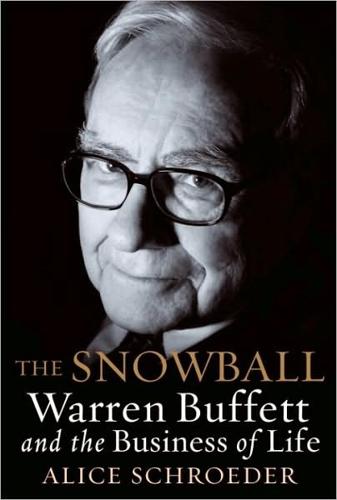
The Snowball: Warren Buffett and the Business of Life
by
Alice Schroeder
Published 1 Sep 2008
Browsing the bookshelf in the back bedroom, he had consumed every issue of the Progressive Grocer and every single copy of the Daily Nebraskan that had been edited by his father, and worked his way like a boll weevil through all fifteen years of the Reader’s Digest that Ernest had accumulated. This bookcase also held a series of small biographies, many of them on business leaders. Since a young age Warren had studied the lives of men like Jay Cooke, Daniel Drew, Jim Fisk, Cornelius Vanderbilt, Jay Gould, John D. Rockefeller, and Andrew Carnegie. Some of these books he read and reread. One of them was special—not a biography but a paperback written by former salesman Dale Carnegie,8 enticingly titled How to Win Friends and Influence People. He had discovered it at age eight or nine.
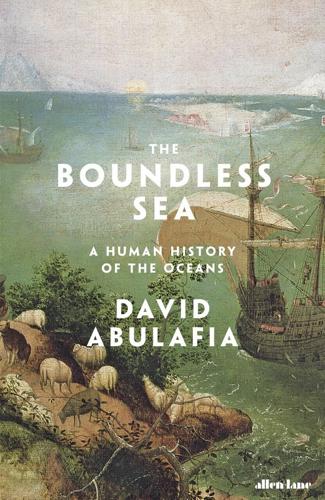
The Boundless Sea: A Human History of the Oceans
by
David Abulafia
Published 2 Oct 2019
The fact that a well-functioning railway now existed through Panama did not dent enthusiasm for a canal taking a completely different route. Nicaragua did seem to make good sense, and on the decision to go for Panama turns not just the future history of Central America but that of the United States as a world power. The wealthy American Cornelius Vanderbilt had it in mind to build a Nicaraguan canal in 1851, but he could not raise sufficient capital. A quarter of a century later the US government received a report that insisted Nicaragua was the only suitable route, and Nicaragua, not Panama, became the agreed way forward.21 This left the Panama route available to interlopers, with the French at the head of the queue, inspired by de Lesseps’s rhetoric and his sense that anything was possible – he even thought it should be possible to flood the Sahara by creating a channel through Tunisia.22 With the Americans still talking of Nicaragua but not actually doing anything, the French were able to send their own explorers into Panama in 1876, led by the youthful Lucien Napoleon Bonaparte Wyse, a relative of the French emperors.